Francois Cevert, the F1 star. Beauty, skill, charm and a broken race. Because you can't win like this, across the board. Cevert combined all the best of F1 in its most romantic years. You would never finish adding photographs of him, because each of them tells us a beautiful story.
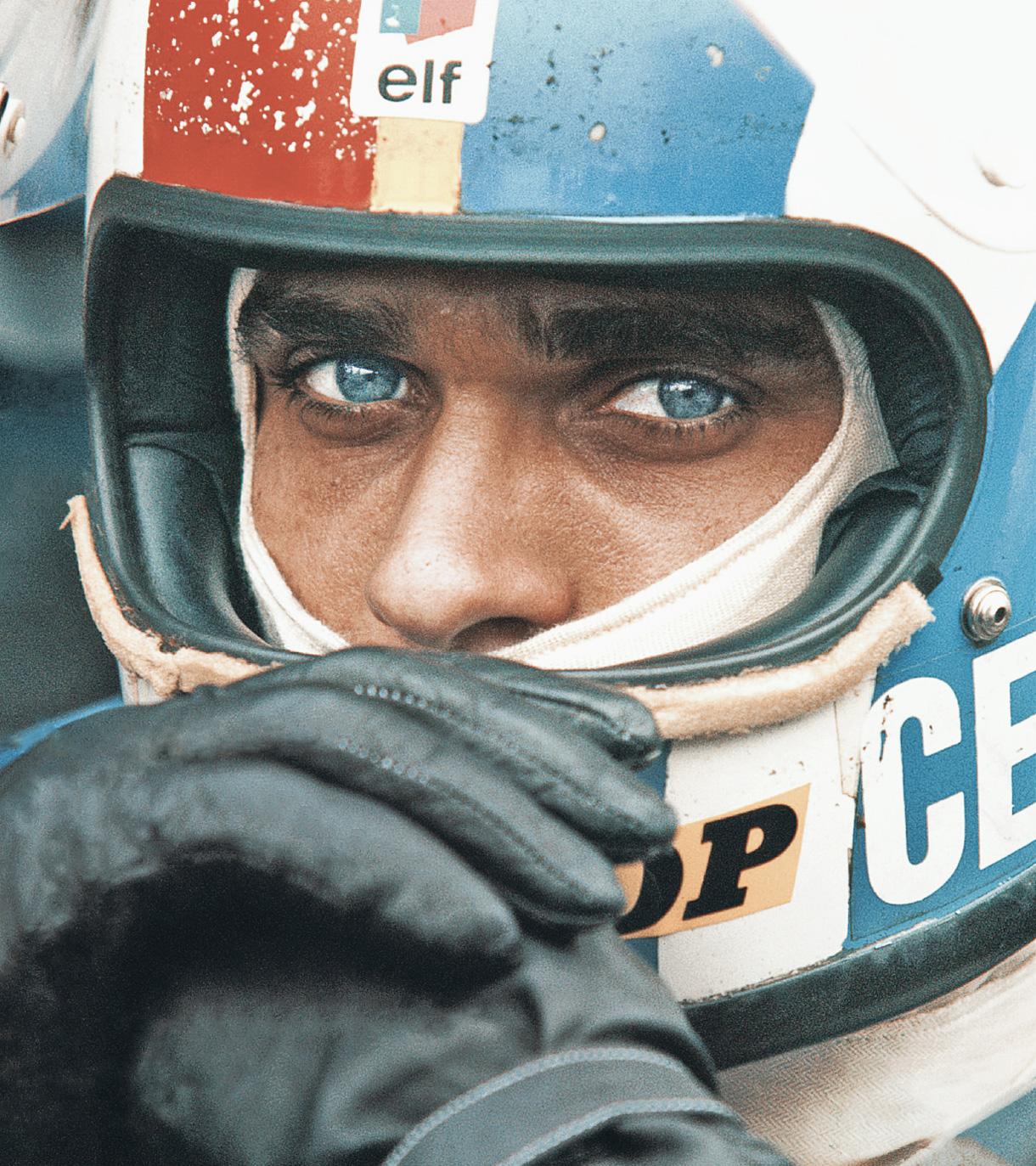
By Auralcrave.com. Qualifying sessions for the Grand Prix to be held the next day, the last one in 1973, are scheduled for the morning of Saturday 6 October. François Cevert’s blue Tyrrell 006 has just been set in motion by his mechanics; from the visor of the white helmet with red, yellow and blue friezes of the French driver you can see only his blue eyes. They are eyes that have made him as famous as his successes on the track, as beautiful as those of an actor in the Novelle Vague of Godard and Bresson. With a wave of his hand, François snaps a kiss to a blonde girl who watches him, lowers his visor like a medieval knight would lower his helmet in a tournament and sets off on the five and a half kilometers of the Glen. The girl, with a discreet and typically British Vanessa Redgrave beauty, is not one of his many flames but Helen, the wife of Jackie Stewart, his teammate at Tyrrell, former world champion and his best friend. François at Glen wants to win. He can still be second in the world championship, ahead of the black Lotus of Fittipaldi and Peterson. And he wants to do it starting, it would be the first time for him, from pole position. He enters the track determined to do the fastest lap, despite having had a bout of vomiting shortly before. There is a point in the Glen that is more important than the others: an S where the barriers seem senselessly close. If you manage to approach it in the right way it is the right place to do the time, but it is also the right corner to get seriously injured if something goes wrong. And it is at the S that, at 11:55, first Scheckter, then Beltoise, Amon and finally Stewart arrive, finding the road blocked by yellow flags and a pile of debris on the track. Cevert's number 6 Tyrrell is practically pulverized: he hit the guard rail on the right and bounced off the other side, overturned. A wheel hit François, killing him instantly and the metal of the barrier raged on his body, tearing it apart. "It was like being on the scene of a plane crash", comments his friend Jackie disconsolately. Stewart withdrew from the Grand Prix. He would never race again. In the fast right-left uphill combination called 'The Bridge' Cevert's car swerved to the right-hand side of the track, where it touched the safety barriers causing the car to spin and crash into the barriers. The causes remain obscure. Mechanical failure? An illness due to the previous vomiting crisis? A wrong gear, how Jackie will argue?
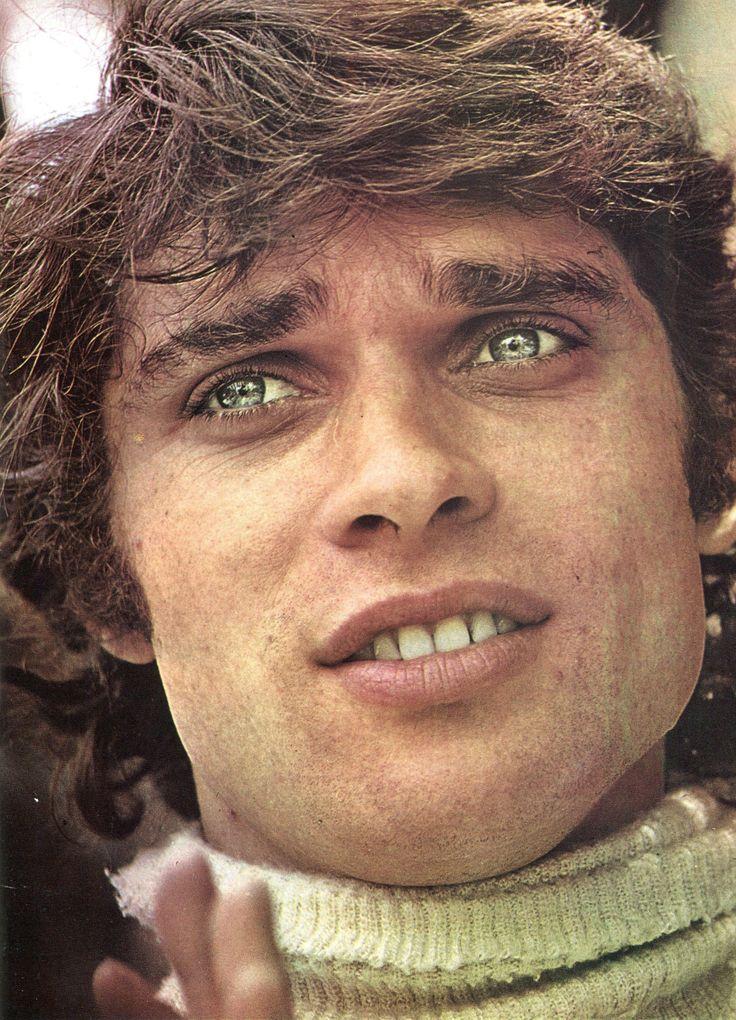
No one will ever know and no one will see François' blue eyes anymore. They were blue like the sea of the Côte d'Azur that he loved so much and like the Tyrrell livery that promised him a future as the first French World Champion.
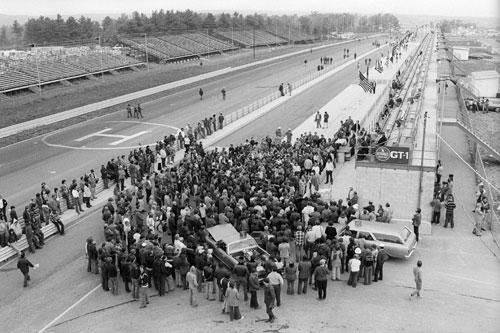
François Cevert was born into a very wealthy family. After the war his father rebuilds a small fortune as a jeweler; the young François, with his brother and sister, grows up in a small castle complete with servants.
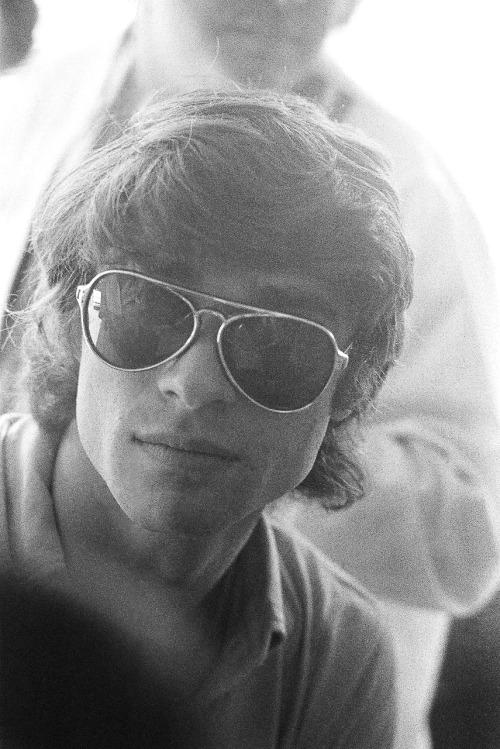
Francois Cevert looks thoughtful in massive sunnies.
In dad Charles's mind, however, motor racing has remained anchored to an idea from the early 1900s; a pastime of lazy nobles, reckless kept men or sons of builders. And so it is that, one night in 1967 in Chamonix, we find François and his Diabolik blue eyes in a feat worthy of his comic double. In front of the Chamonix police station there is only one policeman, cold and sleepy, on guard. François wanders around an old Austin parked nearby. The twin car with which he tows his Formula 3 from one circuit to another has a puncture and the driver doesn’t have a spare wheel; his father denied him any financial help and the young man is forced to work as a mechanic, driver and team manager, as well as a pilot. Stealthily, François cracks the Austin's trunk and steals the spare wheel; to such a point he has pushed himself in order to follow the passion that devours his soul.
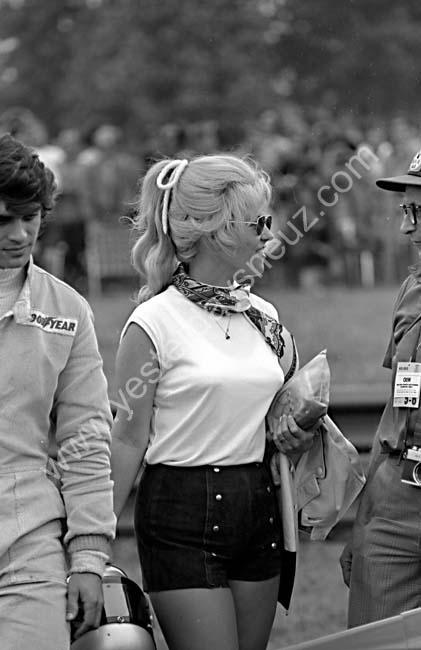
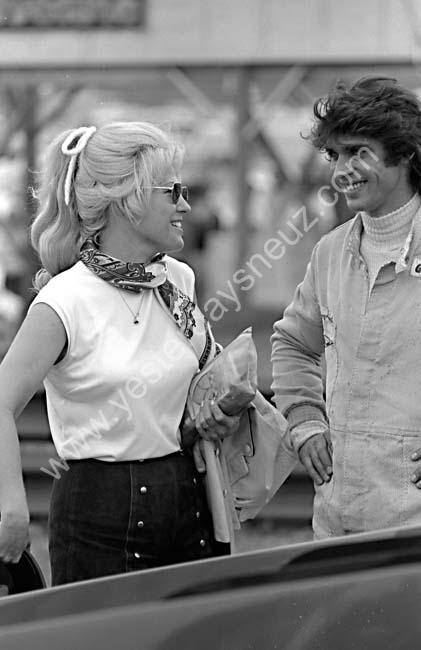
Francois Cevert and his friend Marylin.
François is handsome, like a movie actor;
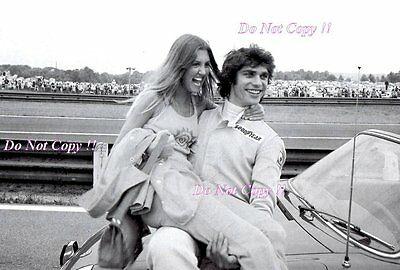
Francois Cevert and a female fan.
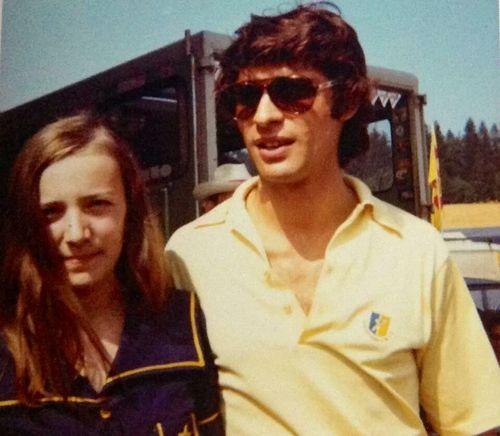
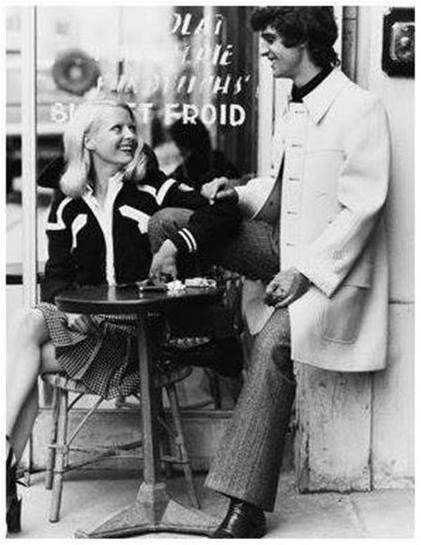
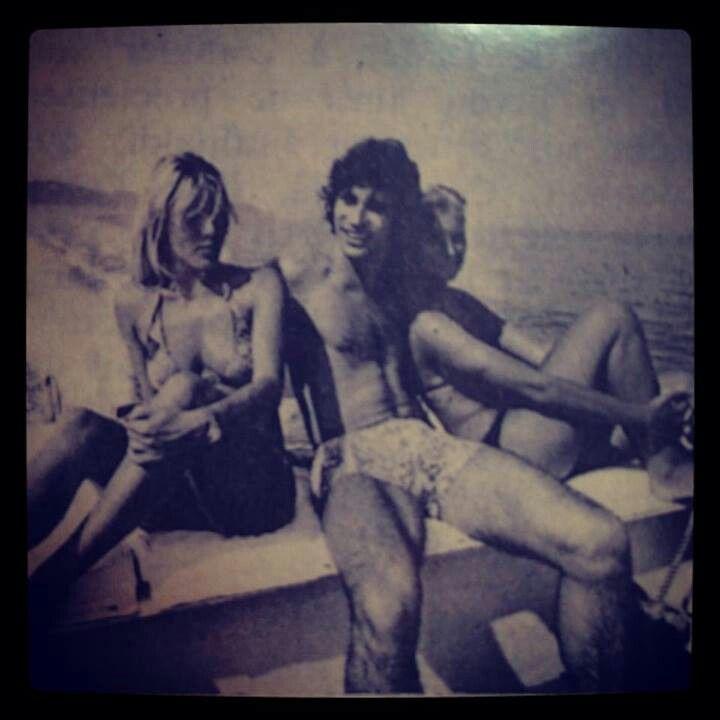
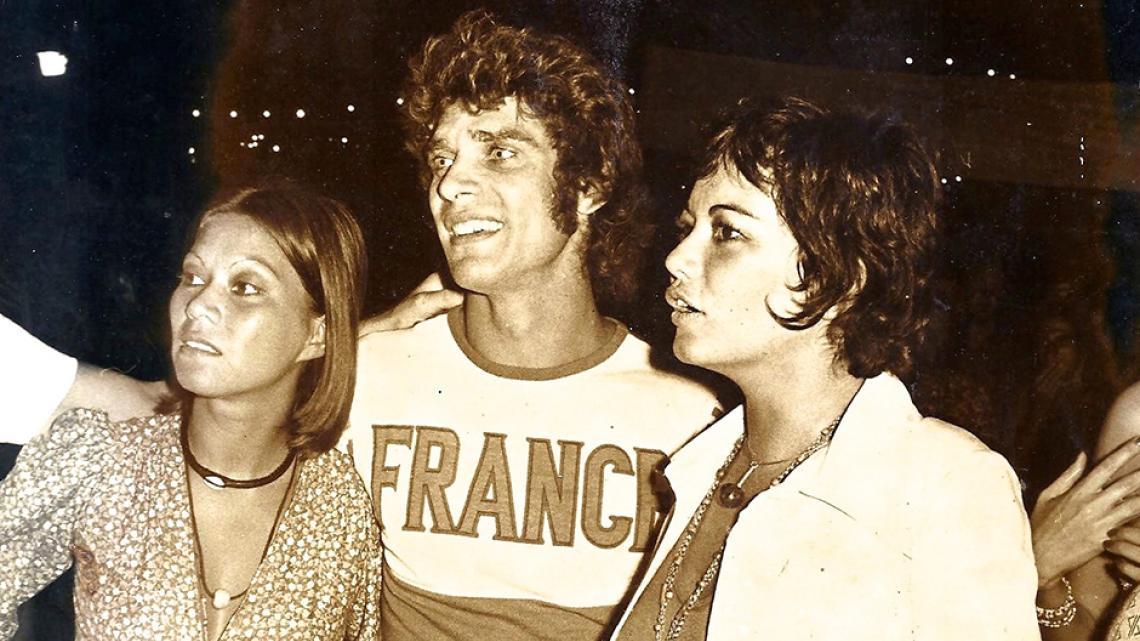
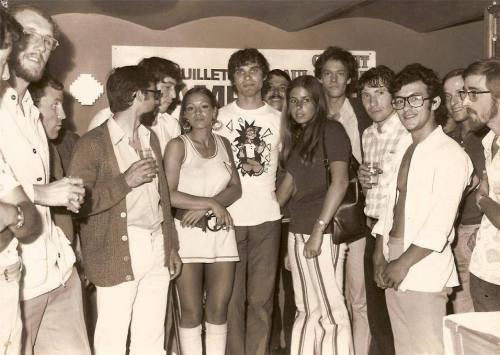
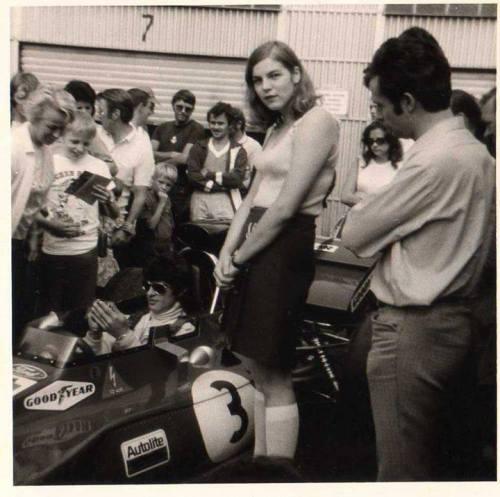
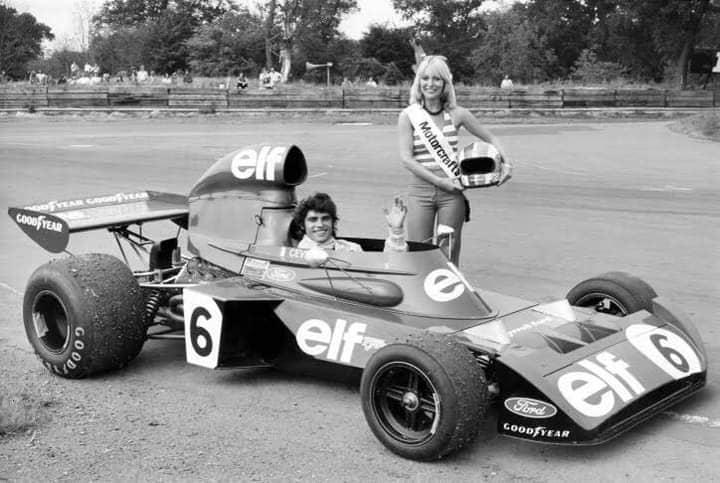
like Alain Delon - who at the time made French teenagers fall in love - and beautiful are the women who appear alongside him or those that the tabloids attribute to him, especially Brigitte Bardot. With the divine, the well informed say, it is the stuff of a night: she wants helpful men, he is looking for a complacent geisha.
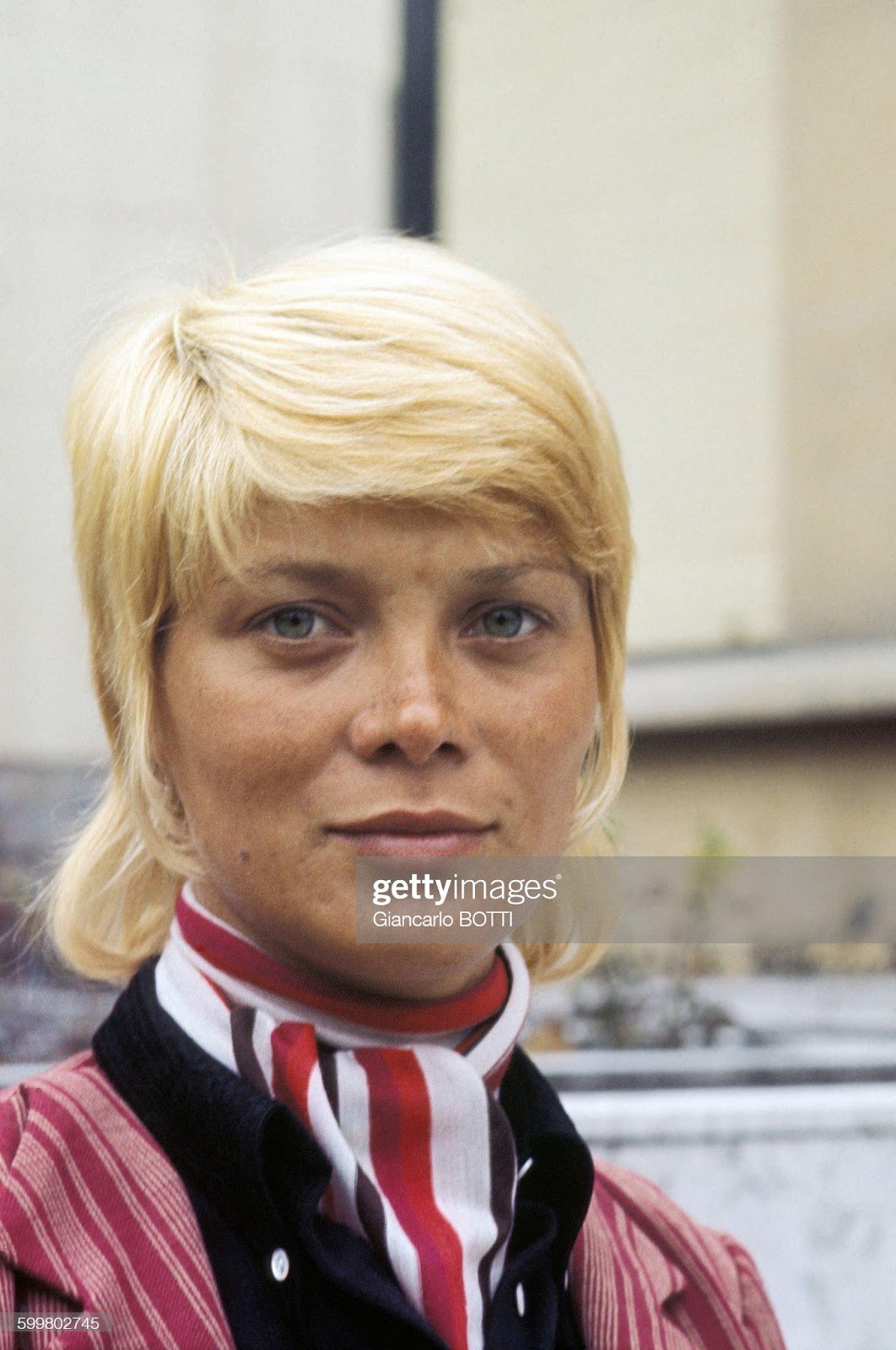
Portrait of Jacqueline Cevert, wife of Formula 1 driver Jean-Pierre Beltoise and sister of François Cevert, about 1960, in France. Photo by Giancarlo Botti/Gamma-Rapho via Getty Images.
Young Cevert is so handsome that when, while still a boy, he goes to pick up his sister Jacqueline at the Course Montagny high school in Neuilly, her companions spread the word and run to the balcony to see him; even the janitor goes so far as to prohibit the girl from being picked up; the sight of Cevert's blue eyes is a danger to public order and an attack on the virtue of female students. Fast and sinuous, but just as treacherous and dangerous, the Glen is a circuit for real men - as it was said then - and François Cevert's favorite. Here, in his first full year of Formula 1, he took his only victory, on a rare day in which his state of grace and his luck went hand in hand, so much so that he came out unscathed from an unexpected off-track a few laps from the end. And in the gloomy 1972, a year without satisfactions, he will still be second at the Glen.
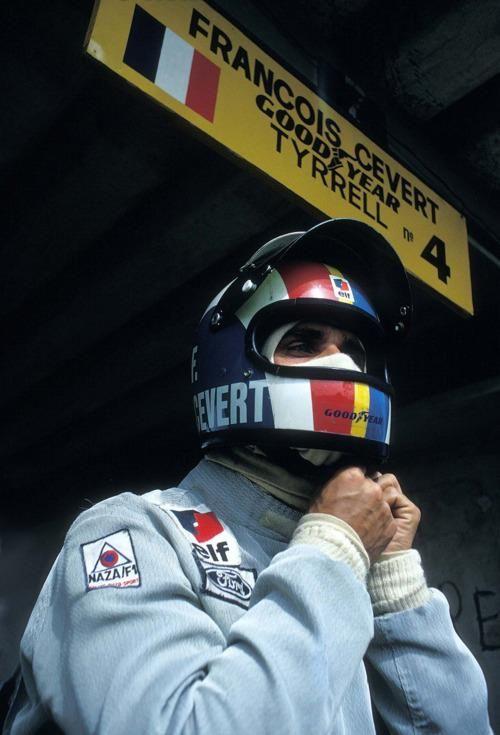
Cevert is not an instinctive driver, Peterson style;
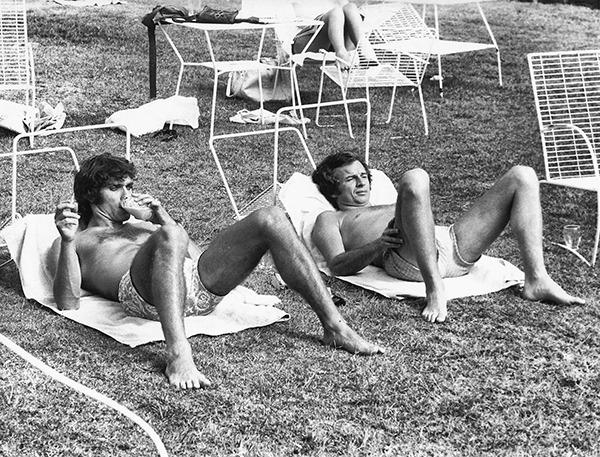
Francois Cevert and Jean Pierre Beltoise.
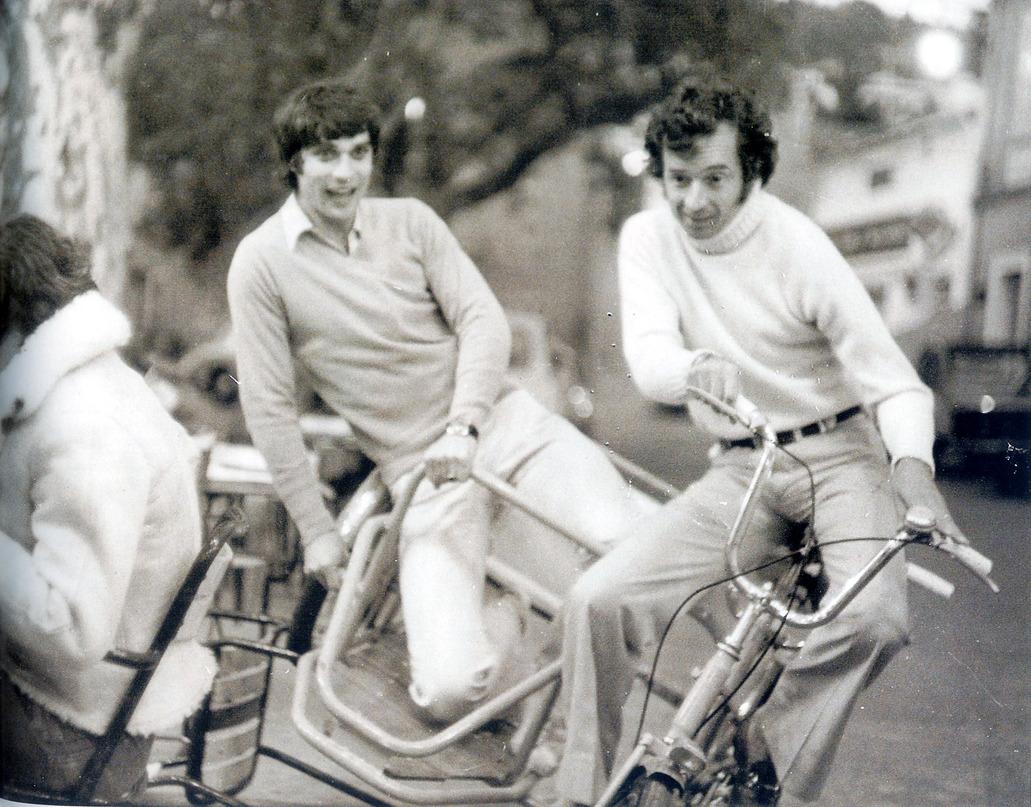
Francois Cevert and Jean Pierre Beltoise.
he starts racing late, inspired in part by the boyfriend - and then husband - of his sister Jacqueline, that Jean Pierre Beltoise who for years bore the flag of France in Formula One and in the World Sports Championship, but who in Italy is remembered more for causing the death of Ignazio Giunti with a rash maneuver in the hell of the 1000 km of Buenos Aires. Opposed by his family, François begins timidly with motorcycles, but it is a short-lived love affair; his heart is kidnapped by the four wheels.
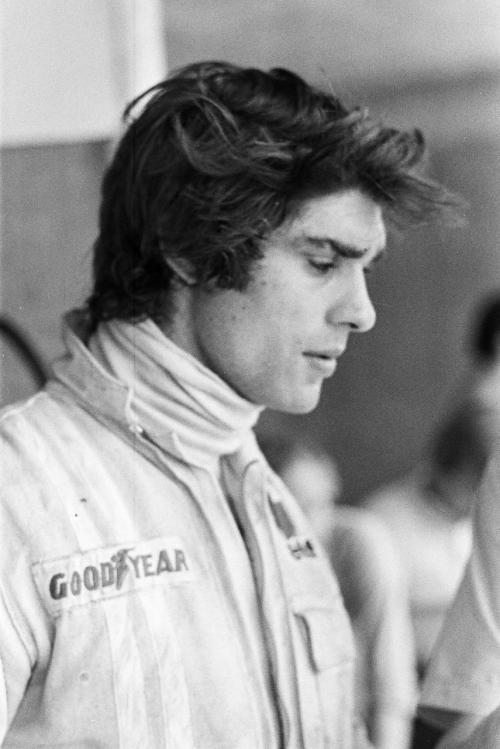
Monthlery, October 26, 1966, Volante Shell (Shell Steering Wheel). His big chance is Volante Shell, a sort of talent sponsored by the oil company that is giving away a signing for Formula 3 to the most deserving young man. Under the rain, that day in October 1966, François lined everyone up, including Patrick Depailler, a favorite of his brother-in-law Beltoise, who does everything to favor him, attracting the wrath of Jacqueline. The latter, in advantage in the last race, with great nobility of mind delayed the start to allow François, victim of a breakdown, to repair the car in time and play his cards. A gesture from the past that costs him the championship but, perhaps, puts him even more under the spotlight.
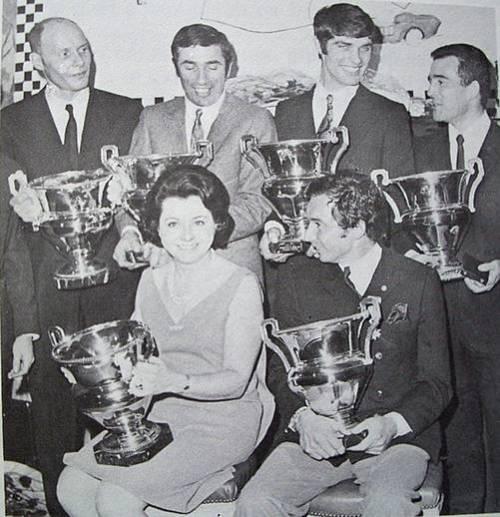
Francois Cevert, third left at the top, sparkles in a suit at the French motorsport authority awards in 1968. That’s dishy rally champion, Jean-Claude Andruet, next to him, but he looks quite small. The others are Sylvain Garant, Pierre Maublanc, Claudine Trautmann and Jean-Pierre Beltoise. Source: pilotos-muertos.com.
1969 sees the Frenchman in Formula 2, where he stands out especially in Reims, out of the championship, beating even Stewart.
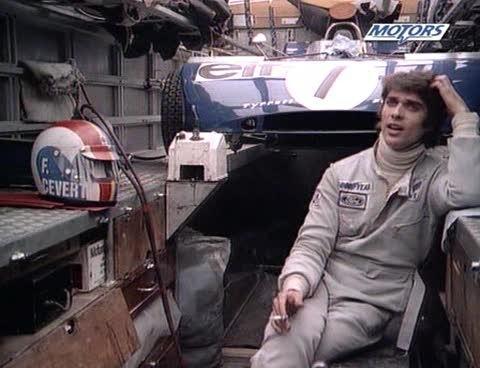
Francois Cevert strikes a philosophical pose in the Tyrrell transporter.
And it is Sir Jackie who recommends him to Ken Tyrrell and takes him under his wing. He will teach him all the tricks, raising him as his worthy heir and transforming him from an arrembante and messy driver to a true trajectories stylist. François Cevert arrives at the US Grand Prix with a mixed mood. In the previous race he had an accident with Jody Scheckter which could have been fatal, but which ultimately left him with only a sore ankle.
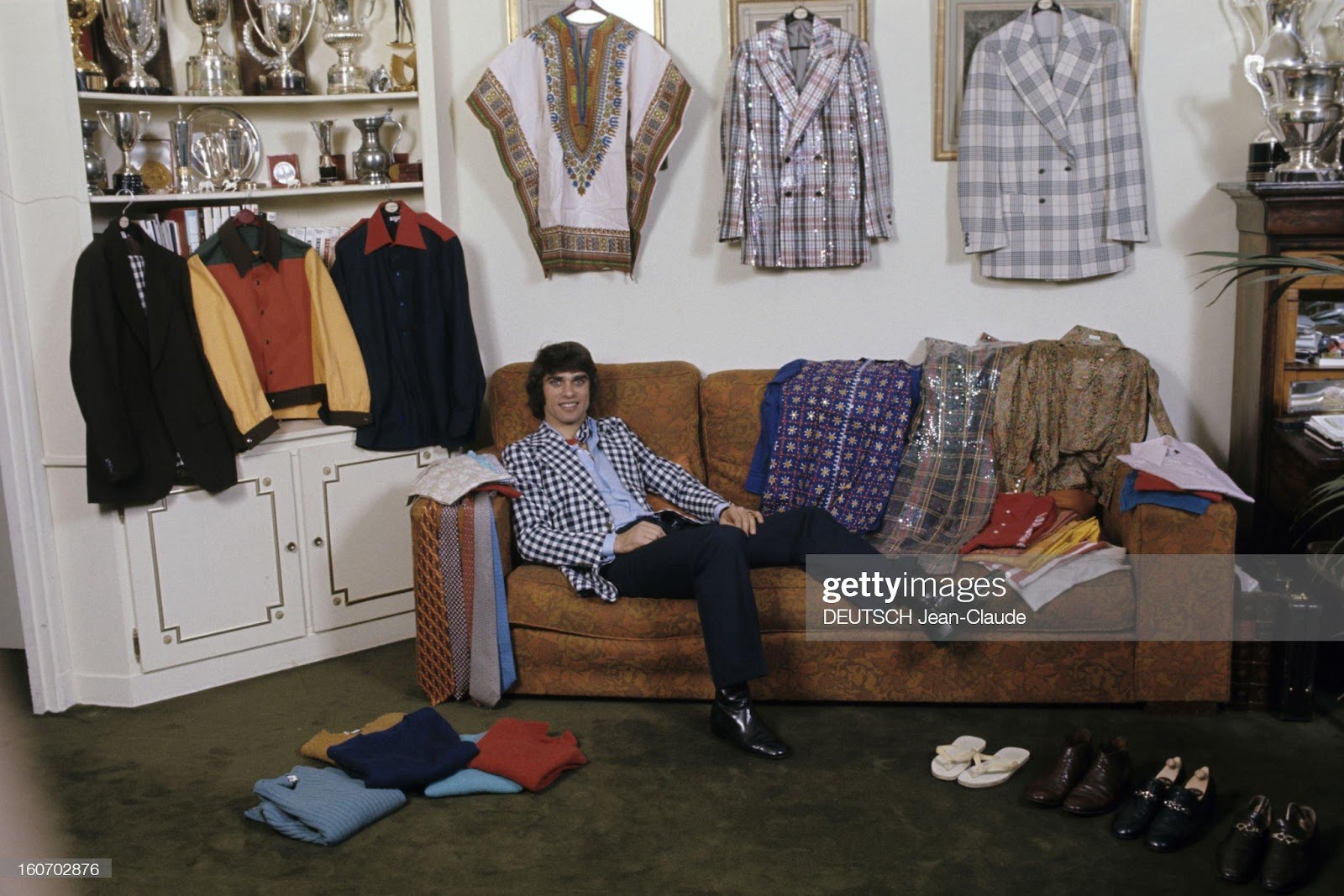
Men's Fashion, France, Paris, January 04, 1973. François Cevert poses half-lying down on a sofa, dressed in a black and white checkered jacket over a sky blue shirt with a scarf tied around his neck, over black trousers and leather boots, in a room with as many clothes and suits on hangers as there are trophies. Photo by Jean-Claude Deutsch/Paris Match via Getty Images.
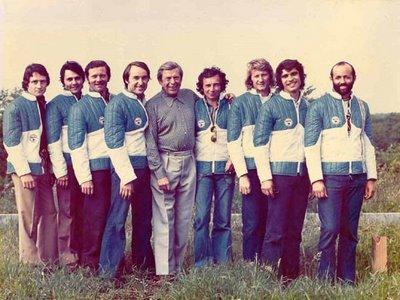
The 1973 Matra Le Mans team pose in a field, in matching anoraks. Left to right: Patrick Depailler, Bernard Fiorentino, Jean-Pierre Jaussaud, Gerard Larrousse, Marcel Chassagny, Jean-Pierre Beltoise, Jean-Pierre Jabouille, Francois Cevert and Henri Pescarolo. Source: mestrejoca.blogspot.co.uk.
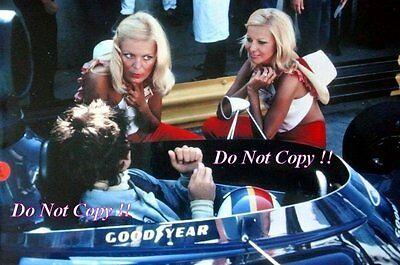
Francois Cevert with Marlboro promotional models in 1973.
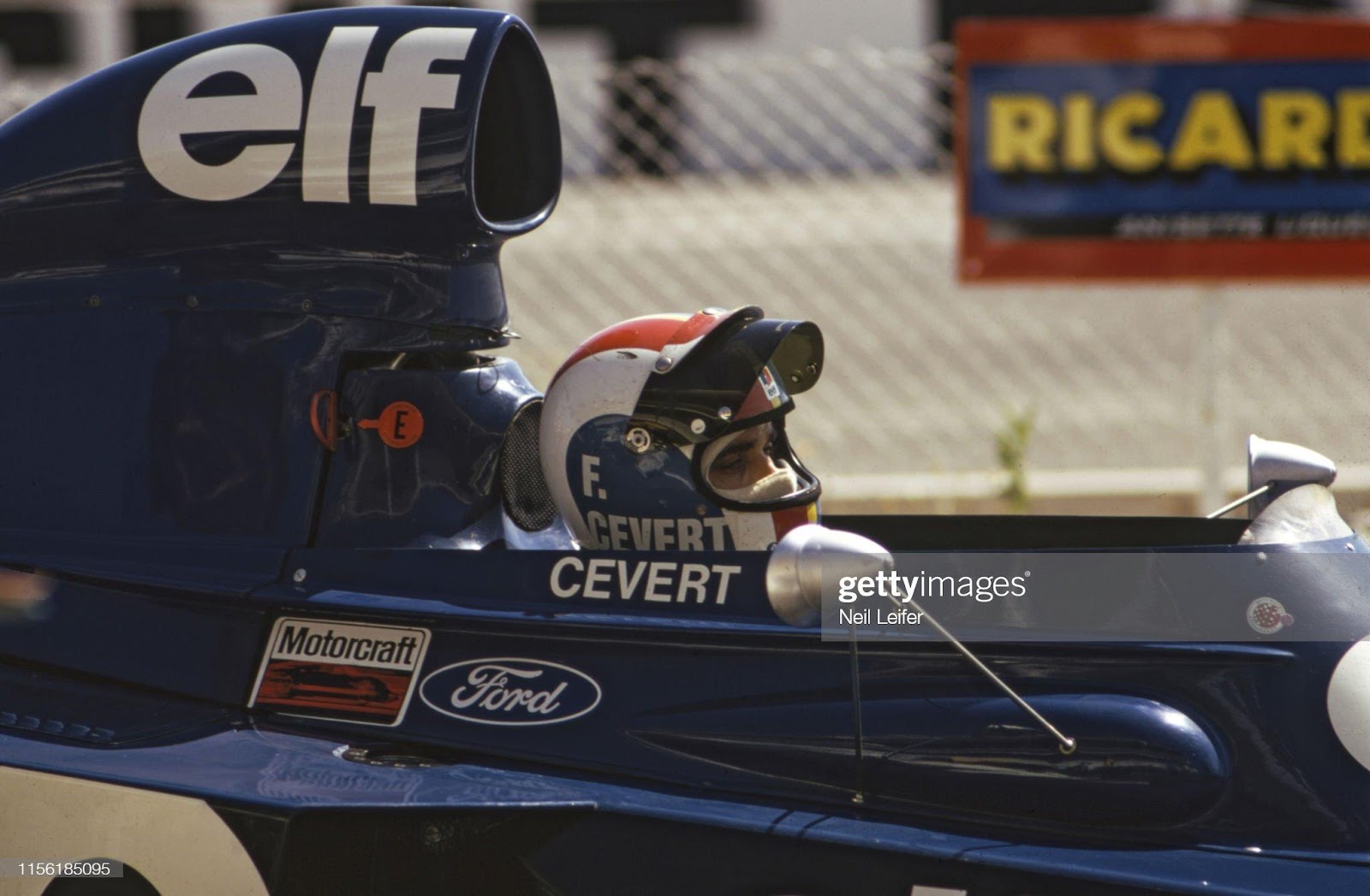
Portrait of François Cevert in car before race at the French Grand Prix at Circuit Paul Ricard, Le Castellet, France, on April 06, 1973. Photo by Neil Leifer /Sports Illustrated/Getty Images.
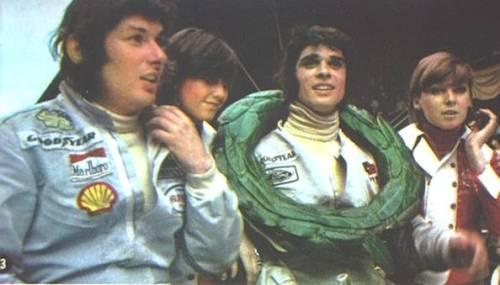
Francois Cevert and Jean-Pierre Jarier on the Pau Formula 2 podium on 06, May 1973. Source pilotos muertos.com.
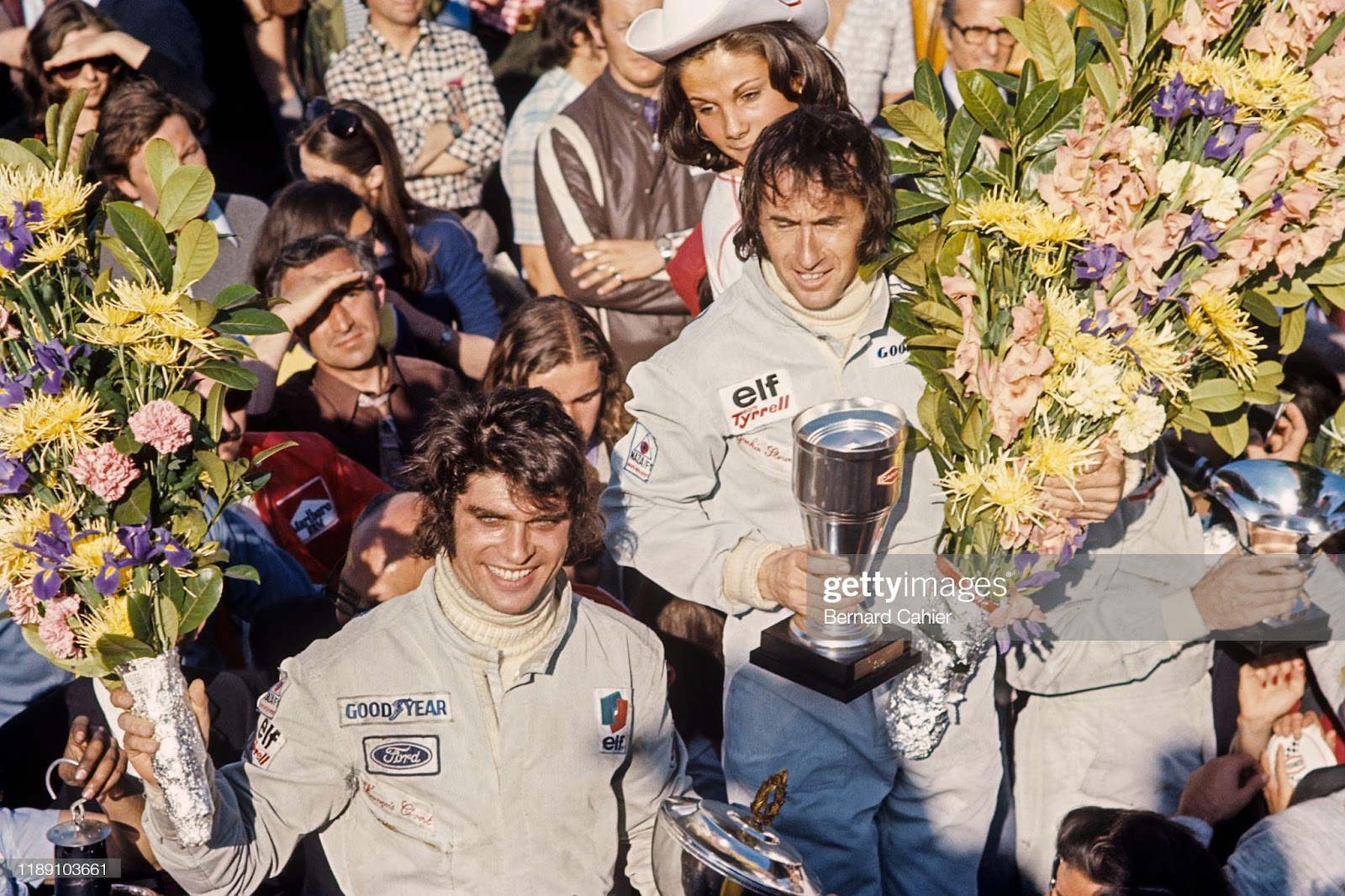
François Cevert, Jackie Stewart, Grand Prix of Belgium, Circuit Zolder, 20 May 1973. Photo by Bernard Cahier/Getty Images.
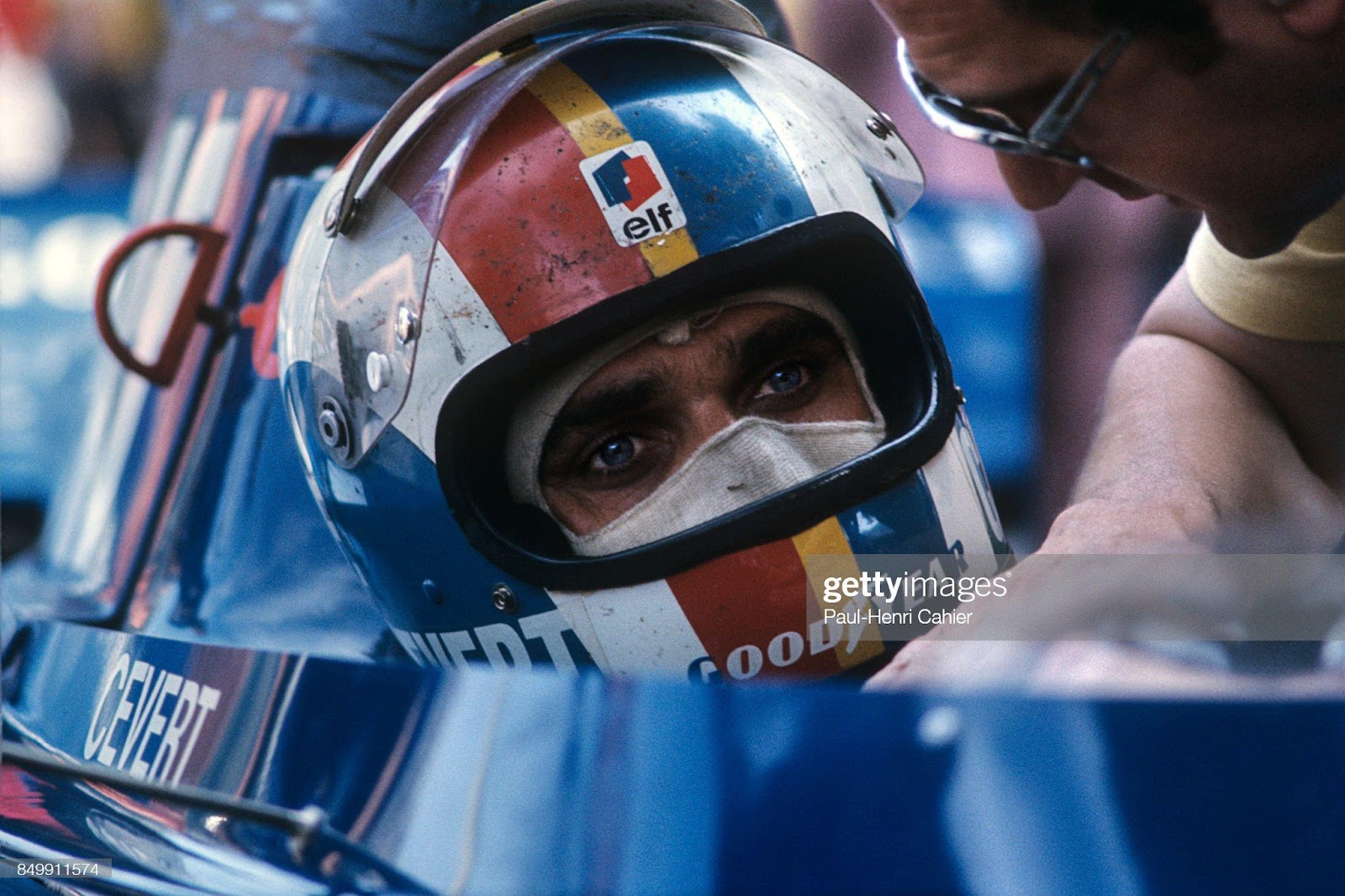
Francois Cevert, Grand Prix of Monaco, Circuit de Monaco, Monaco, June 03, 1973. Photo by Paul-Henri Cahier/Getty Images.
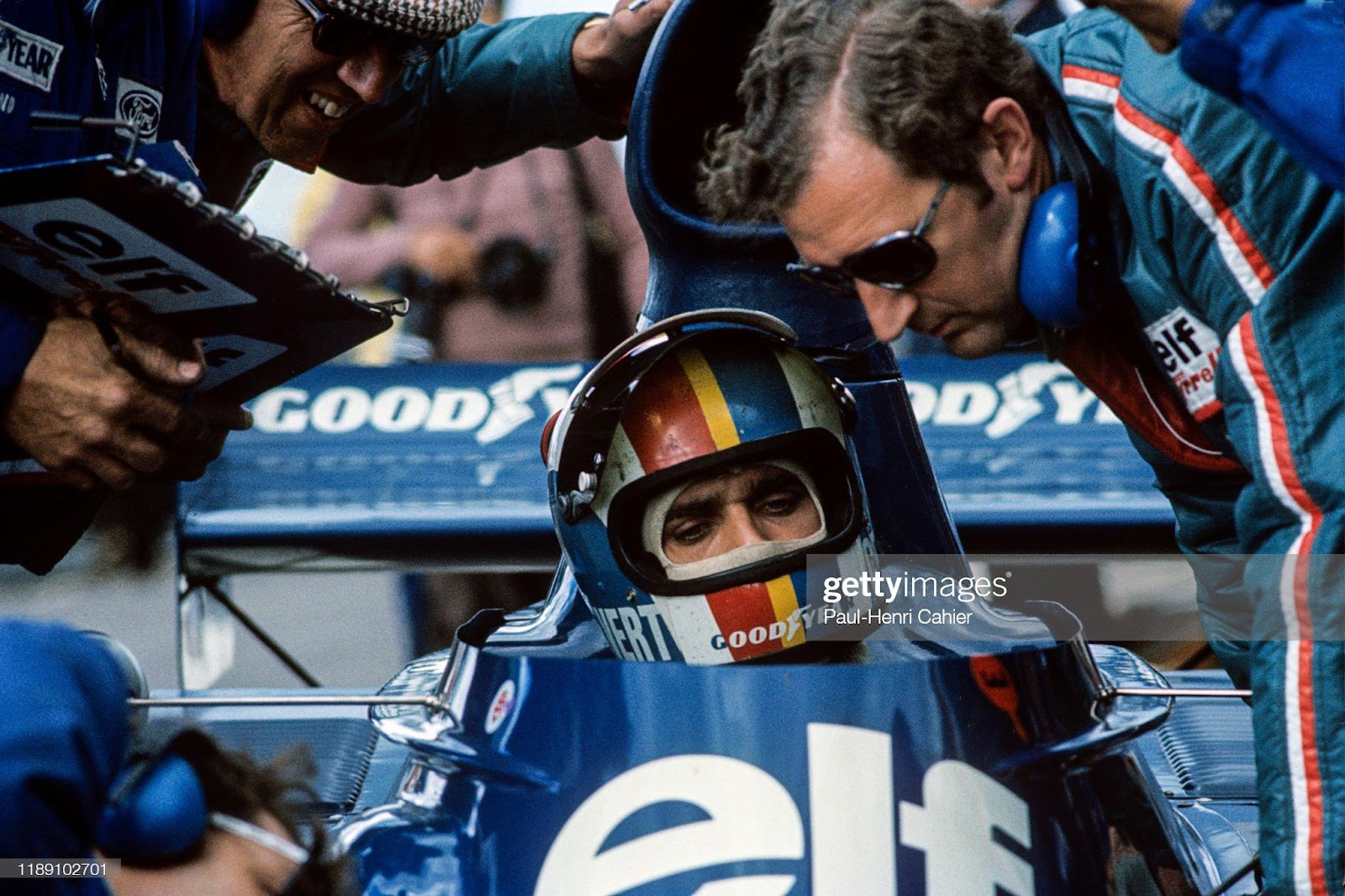
François Cevert, Ken Tyrrell and Derek Gardner, Tyrrell-Ford 006, Grand Prix of Sweden, Anderstorp Raceway, 17 June 1973. Photo by Paul-Henri Cahier/Getty Images.
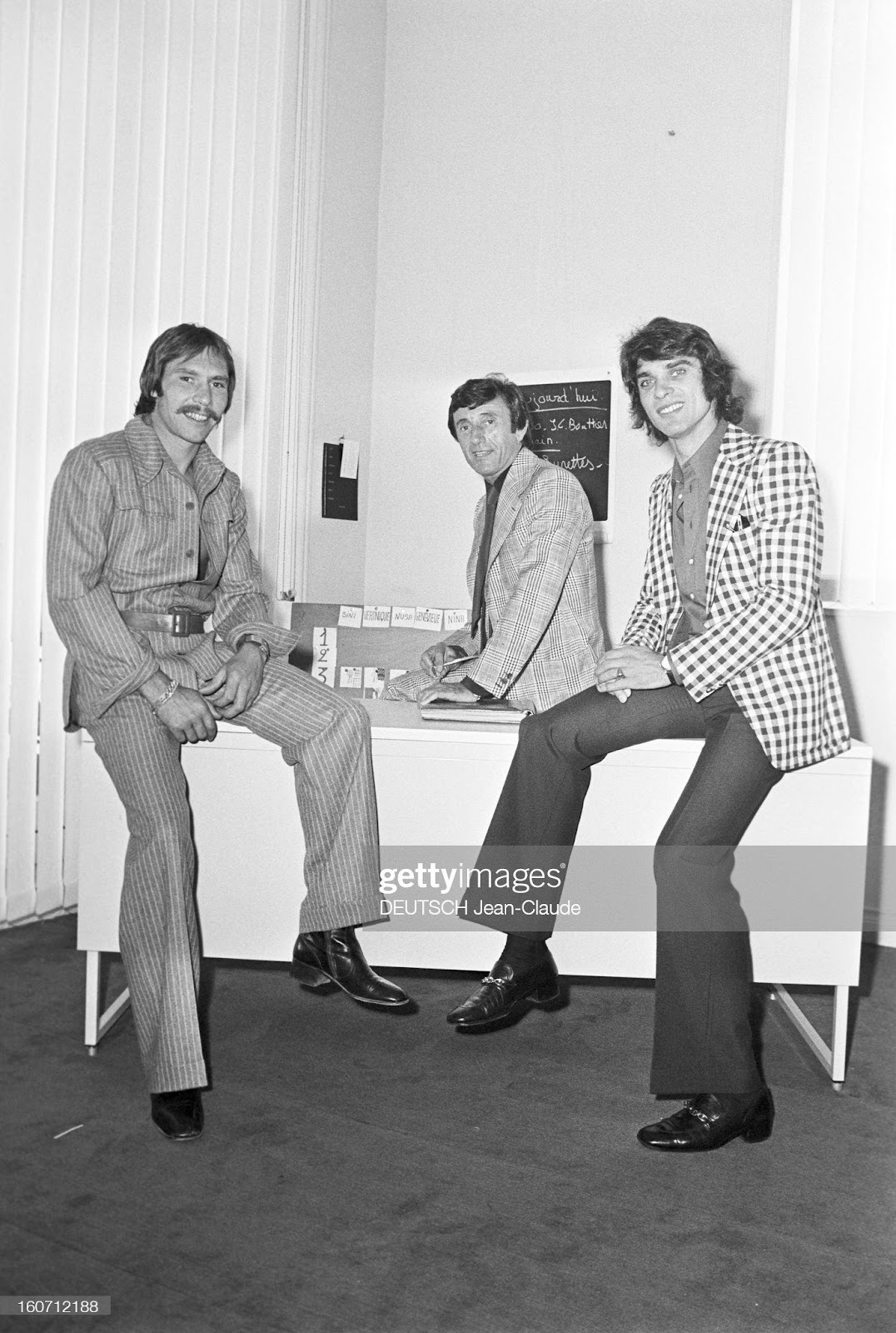
Paris, June 18, 1973. Men's fashion at Guy Laroche, couturier and stylist: Guy Laroche seated on his desk, creator of the exclusive wardrobes of Jean-Claude Bouttier, French boxer, on the left and François Cevert, French racing driver, on the right, both wearing new clothes in the foreground, smiling. Photo by Jean-Claude Deutsch/Paris Match via Getty Images.
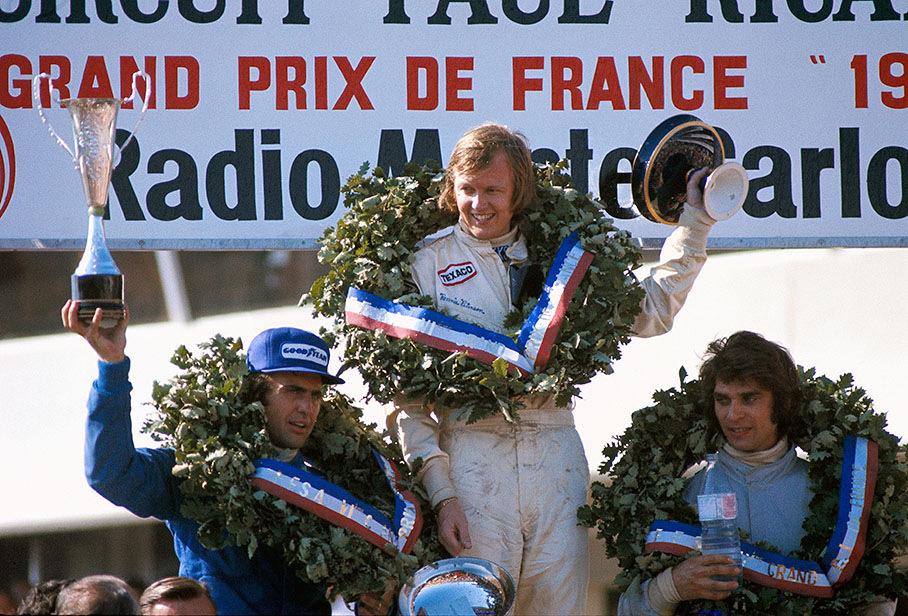
Ronnie Peterson, Francois Cevert and Carlos Reutemann celebrating on the podium at Le Castellet, France, on July 01, 1973. Photo by Rainer Schlegelmilch.
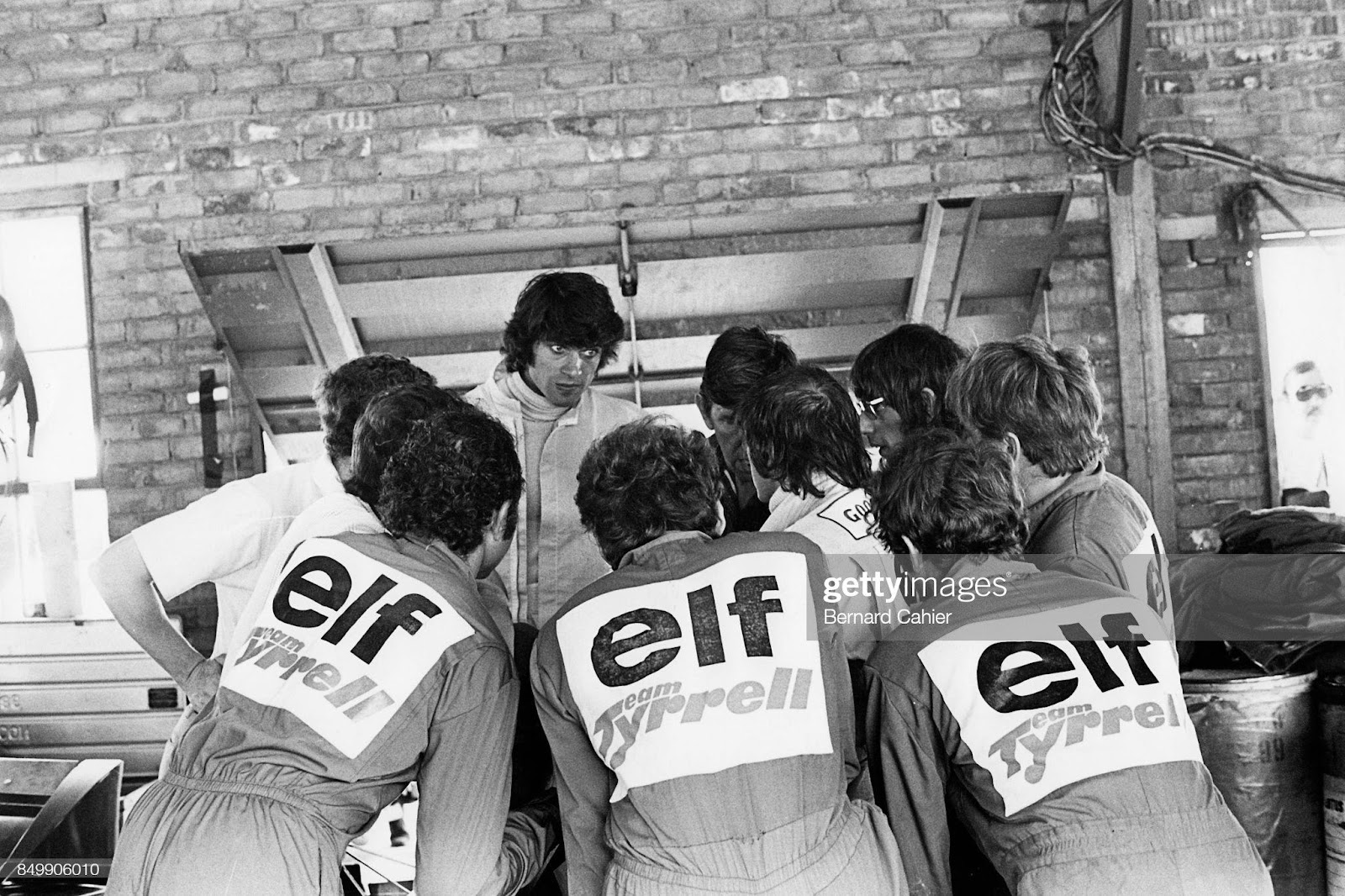
Francois Cevert, Tyrrell-Ford 006, Grand Prix of Germany, Nurburgring, August 5, 1973. Photo by Bernard Cahier/Getty Images.
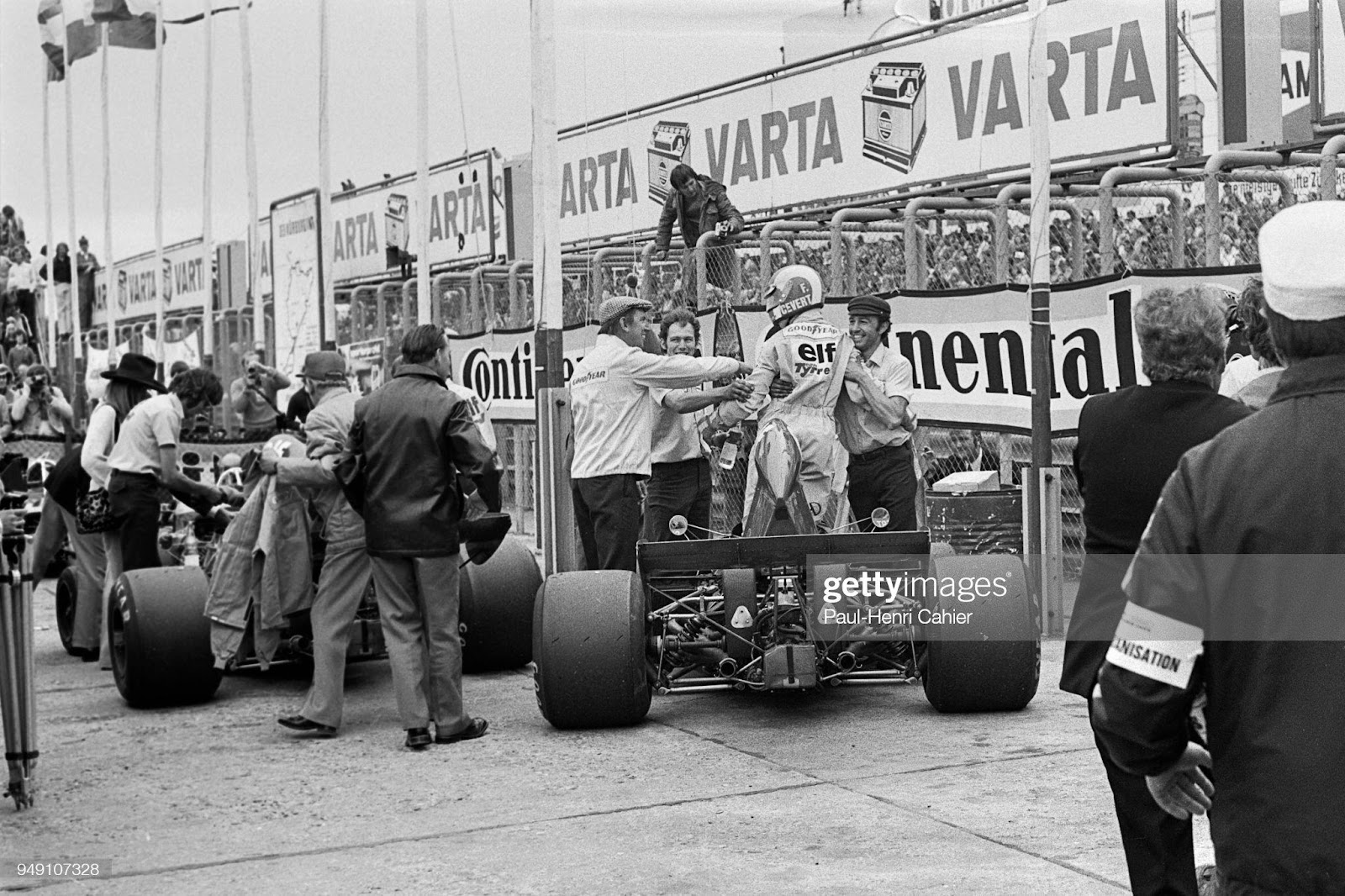
François Cevert and Ken Tyrrell, Tyrrell-Ford 006, Grand Prix of Germany, Nurburgring, 05 August 1973, right after the finish of the race where the Frenchman finished 2nd. Photo by Paul-Henri Cahier/Getty Images.
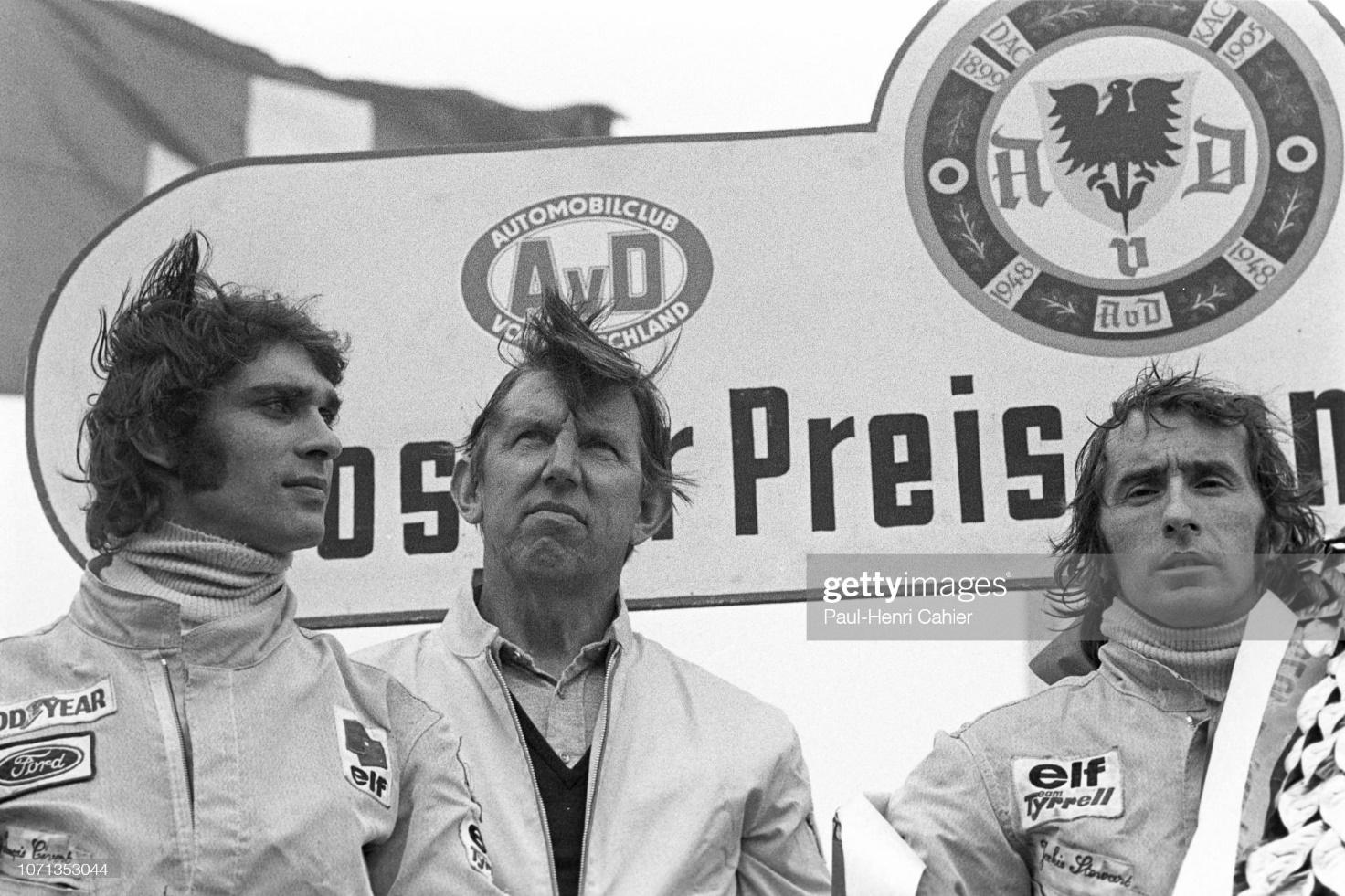
François Cevert, Ken Tyrrell and Jackie Stewart, Grand Prix of Germany, Nurburgring, 05 August 1973. Photo by Paul-Henri Cahier/Getty Images.
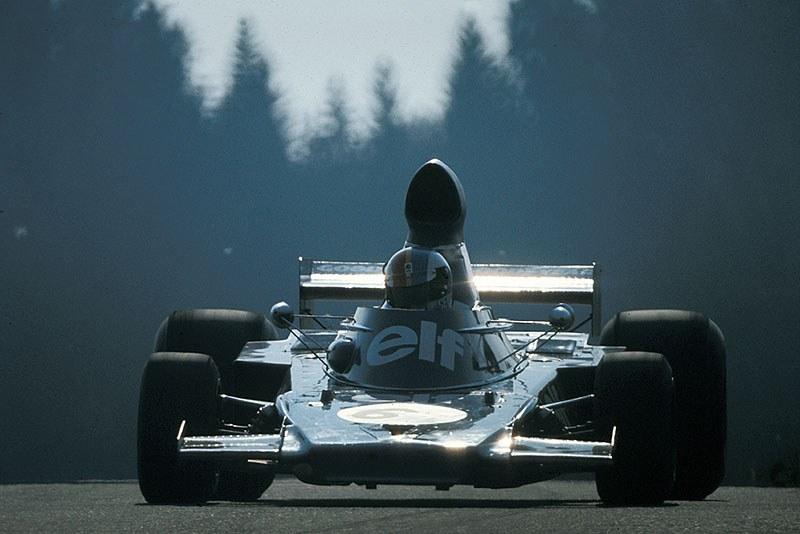
Francois Cevert on Tyrrell-Cosworth 006 at the Austrian GP on 19 August 1973. Photo by Rainer Schlegelmilch.
1973 had been an excellent year, spent covering his team leader's back, 6 second places, even when he knew he was faster. And the Glen, after all, was his track.
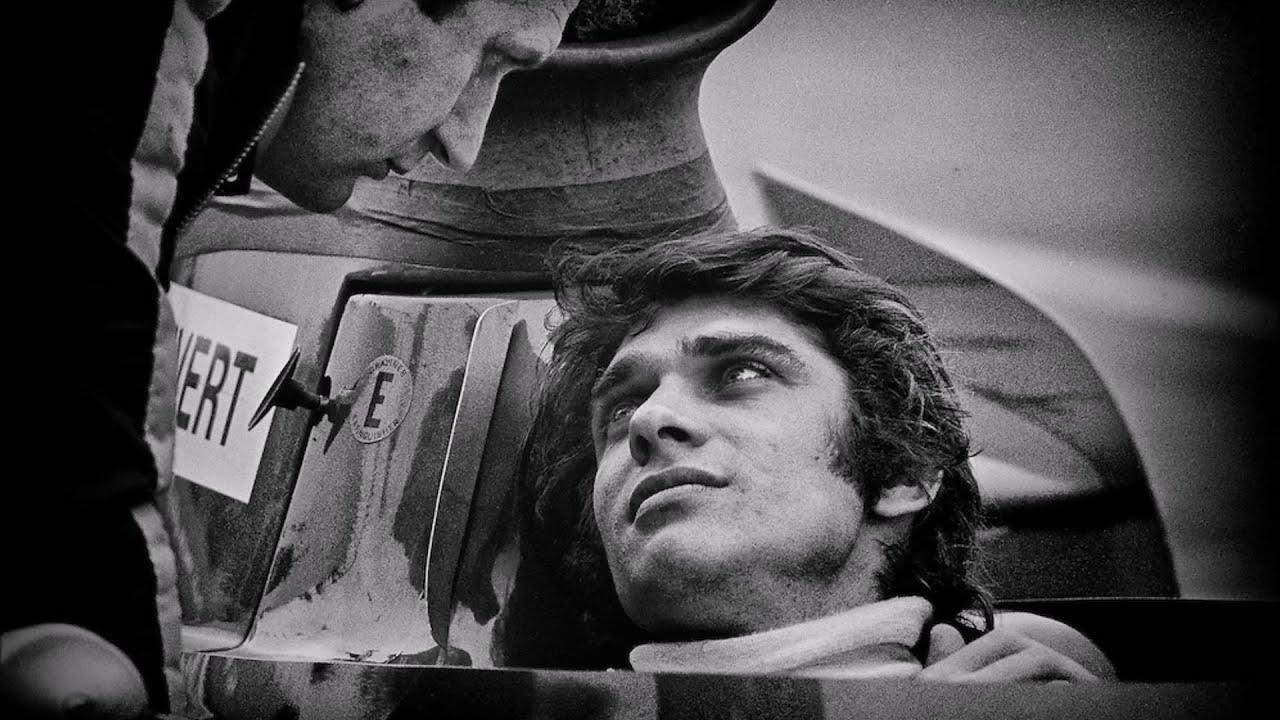
Albert Francois Cevert was born on February 25, 1944 in Paris, France. Coming from a good family, he is nicknamed “Le Prince” for his form of young movie actor and his good manners.
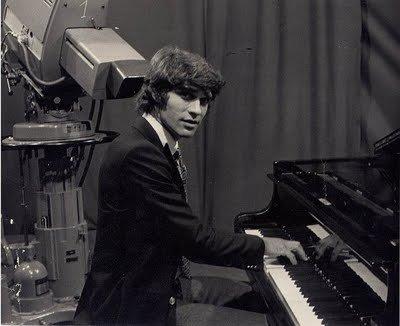
He had the talent of the pianist. Anything sounding like he might become a professional racing driver. And thus the French François Cevert made of his passion a job.
At 16 he was racing scooters with his friends on the streets of Paris and then moved to karting. At the end of 1964 he went to the racing school at Montlhery. In 1966 he entered the Volant Shell competition and beat Patrick Depailler to the prize: a fully-sponsored season in French F3 with an Alpine-Renault. At the end of the first season he was offered a contract with a factory team but he turned it down and raced for Tecno instead and won the French title that season. Cevert made his F2 debut that same year with Tecno and won at Reims in a non-championship race.
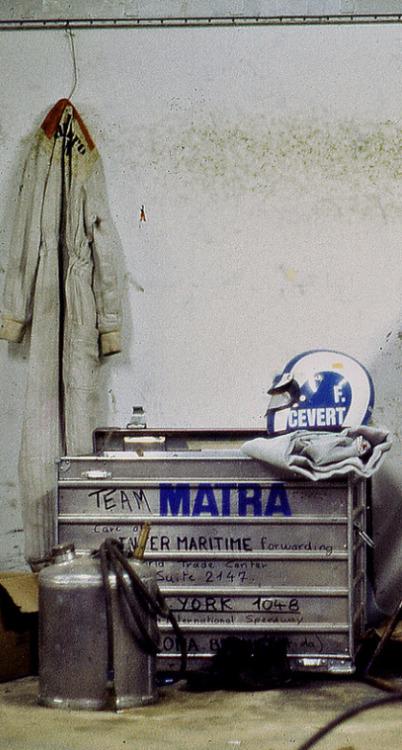
Somewhere out of shot is a naked Francois Cevert.
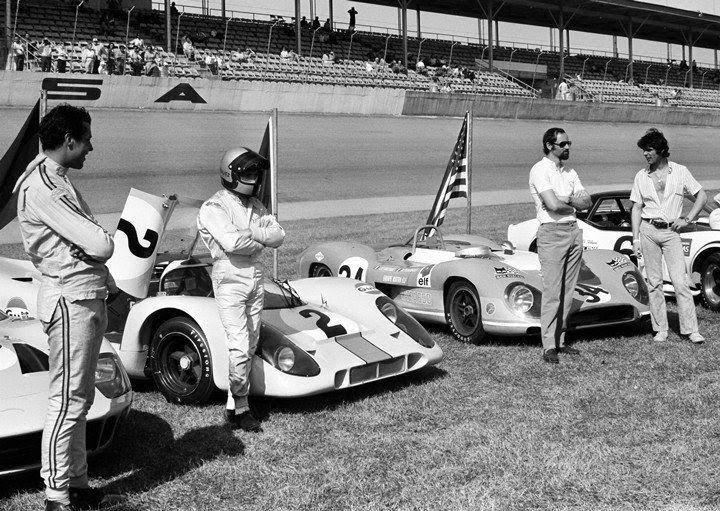
Francois Cevert, Matra.
In 1970 he stayed with Tecno and raced Matra sports cars as well until Johnny Servoz-Gavin, who retired from F1 in the mid-season and Ken Tyrrell signed Cevert to be Jackie Stewart's teammate at Tyrrell.
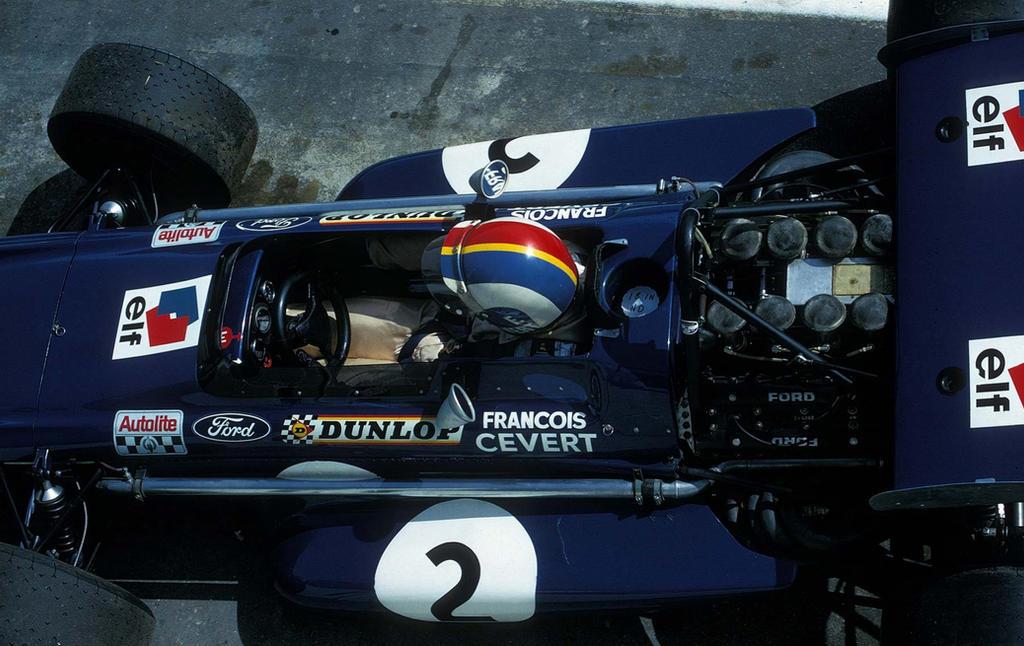
Francois Cevert, Tyrrell, in 1970.
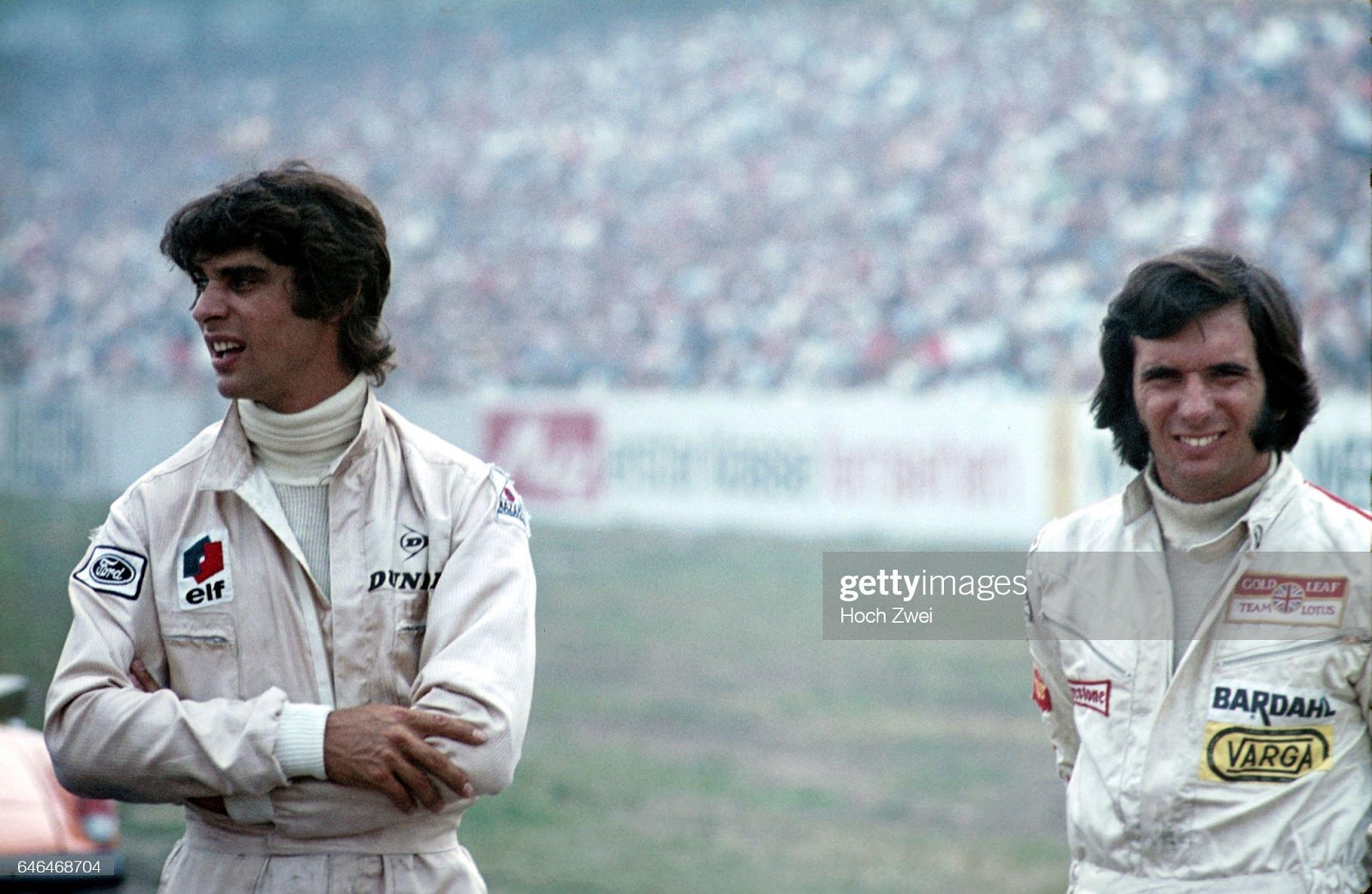
Francois Cevert and Emerson Fittipaldi at the German Grand Prix, Hockenheimring, August 2nd, 1970. Photo by Hoch Zwei/Corbis via Getty Images.
He made his debut at the Dutch GP and was soon consistently scoring points.
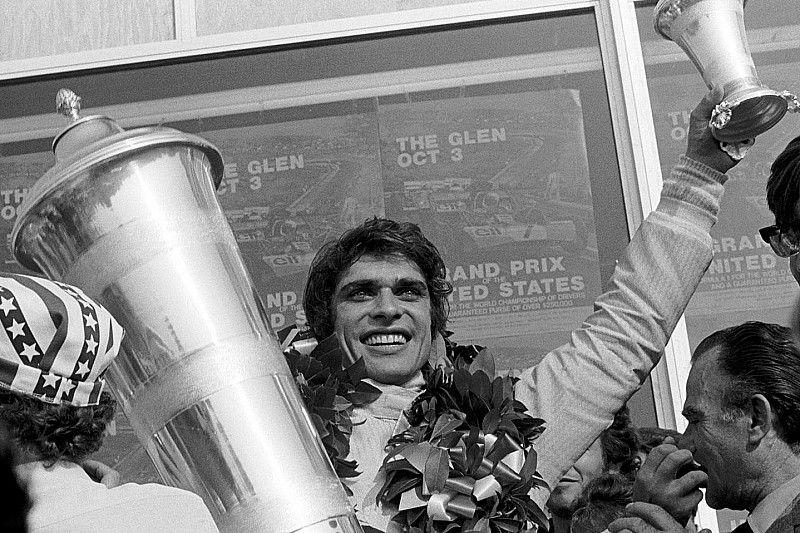
Race winner Francois Cevert, Tyrrell, at Watkins Glen in 1971.
The following season Stewart and Cevert finished 1-2 at the French GP and at the end of the year, Francois won the United States GP (at Watkins Glen). As Stewart's pupil, he raced successfully in F1 and F2 in 1971 and showed his versatility by winning in touring cars and CanAm.
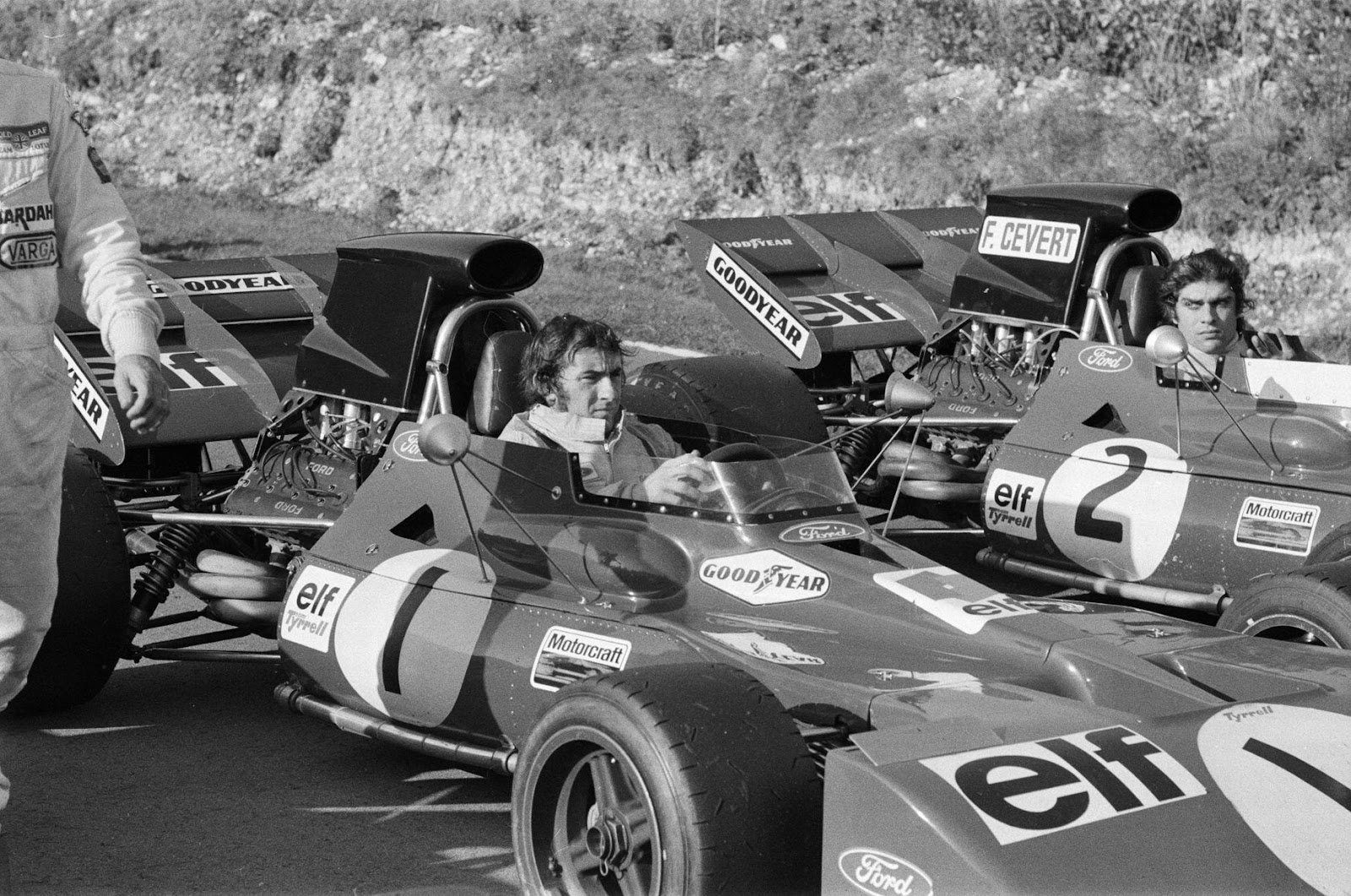
Jackie Stewart and Francois Cevert.
The Flying Scot really showed how much François meant to the whole Tyrrell family.
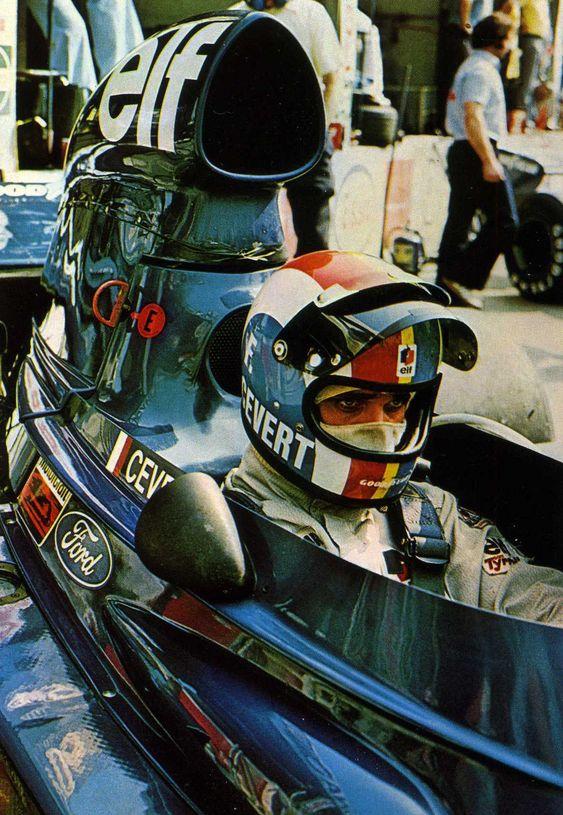
Cevert was being groomed to take over as Tyrrell team leader in 1974 but was killed while battling for pole position during qualifying for the 1973 US Grand Prix (at Watkins Glen) when the car flipped and landed on top of the barrier. Francois was 29 years old.
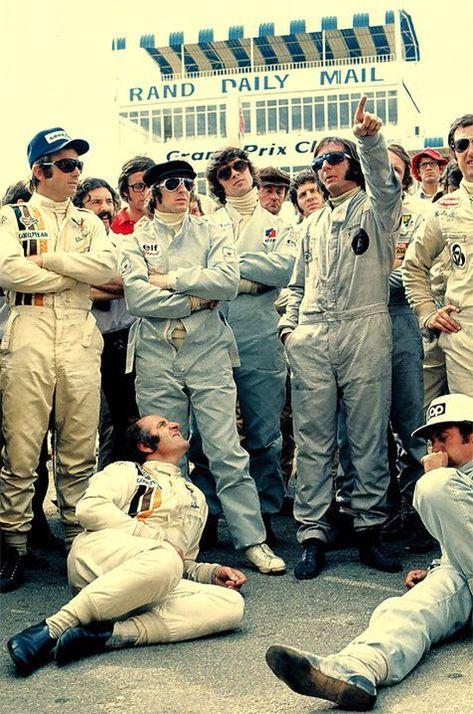
Jackie Stewart, Francois Cevert, Emerson Fittipaldi and Denny Hulme.
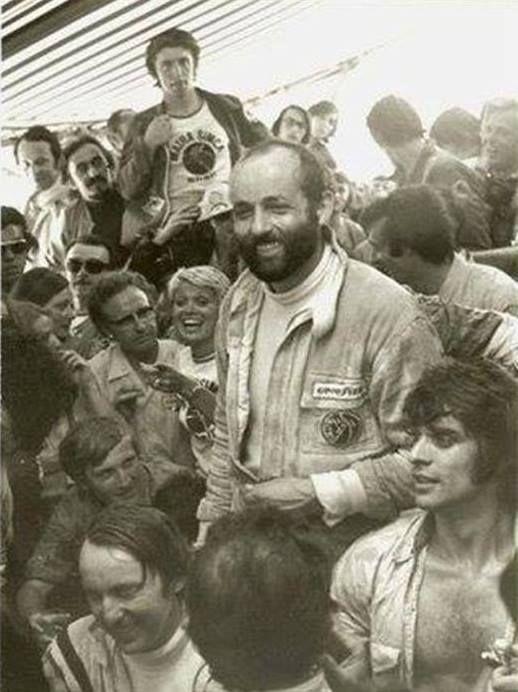
Francois Cevert, his sister Jacqueline, Jean Pierre Beltoise and Henri Pescarolo.
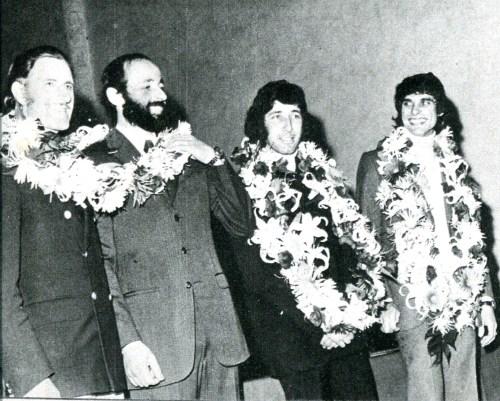
Graham Hill, Henri Pescarolo and Francois Cevert.
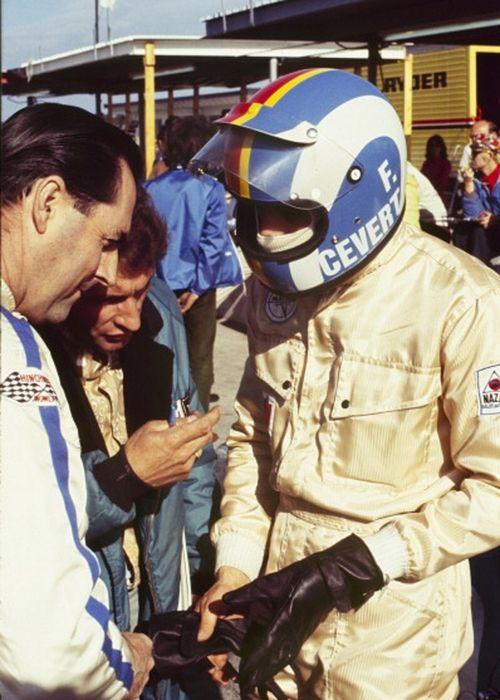
Francois Cevert with Jack Brabham.
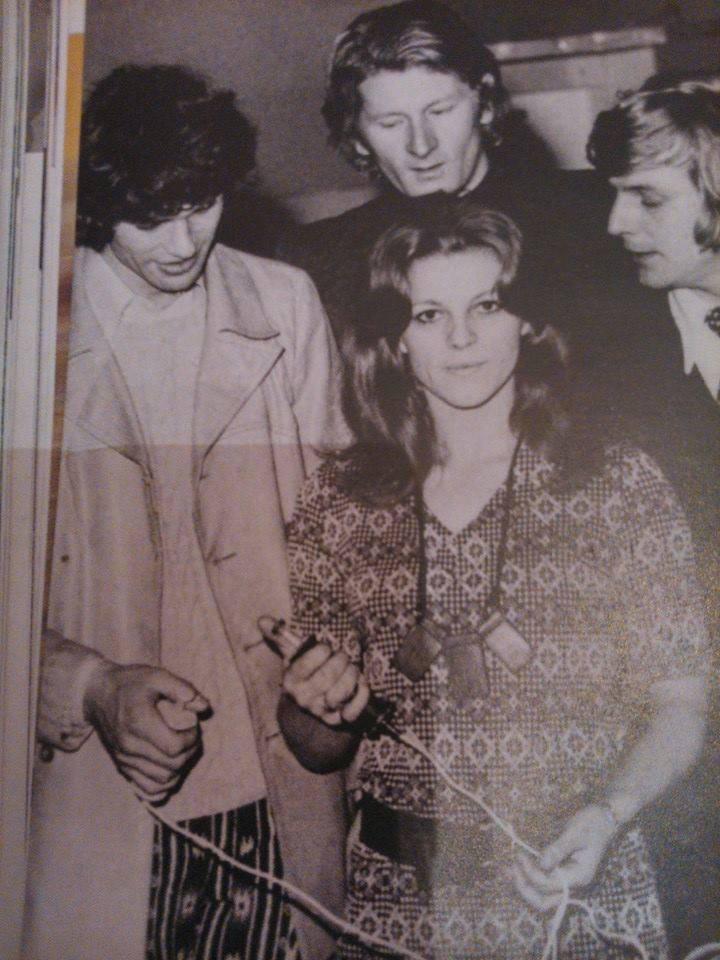
Francois Cevert, Jean-Pierre Jabouille and friends play Scalextric.
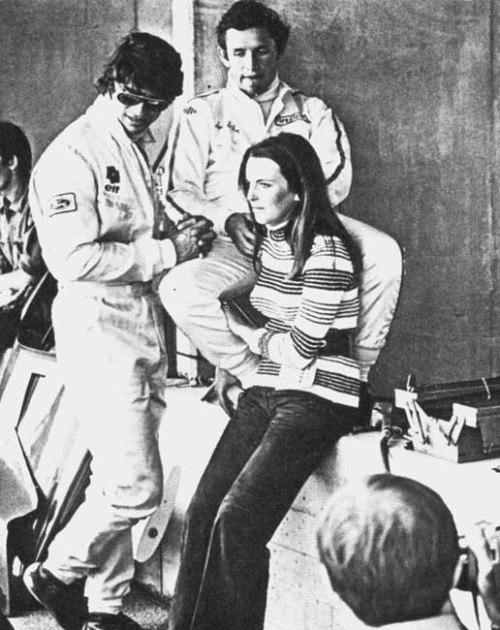
Francois Cevert with Jacky Ickx.
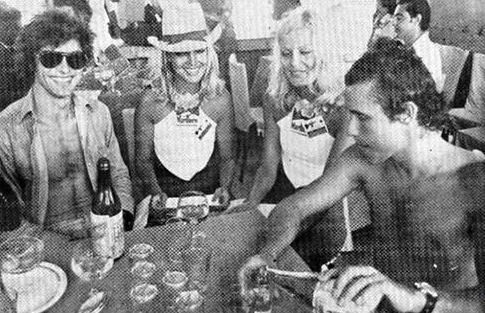
More Rockstar Francois Cevert, the prettiest driver ever, flashing a huge smile and a bit of chest. He is accompanied by his friend, Rockstar Jacky Ickx, who hasn’t quite got the look (not that it matters of course), but is good at pouring drinks.
Among the perished heroes of Formula 1, Francois Cevert was one of the most glamorous.
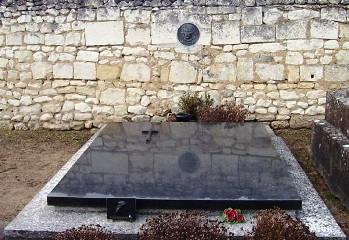
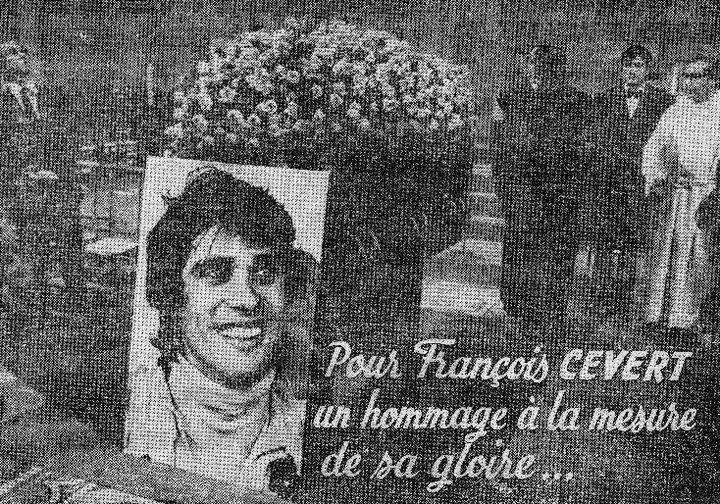
He’s buried in the town of Vaudelnay en Maine-et-Loire.
The handsomest, the next French F1 World’s Champion, blown away in the blink of an eye, donating his youth to the sacred fire of passion for Formula 1.
After over 40 years since he desappeared, his spirit and his charisma are still alive; he was an ode to life, to “joie de vivre”. He remains one of the heroes of the epic Formula 1, the one without a net, that made immortal her few, incredibly brave, Gods. It’s not easy to hang the destiny to a curve, it’s not for all. It’s not easy when you are sitting on top of the world and can listen to maximum engine speed music, it’s not easy and you knew it. It isn’t played the piano where you are now, your marvelous eyes would never be anyboby’s anymore. You lived as a champion and died your way, as you would perhaps have dreamed of.
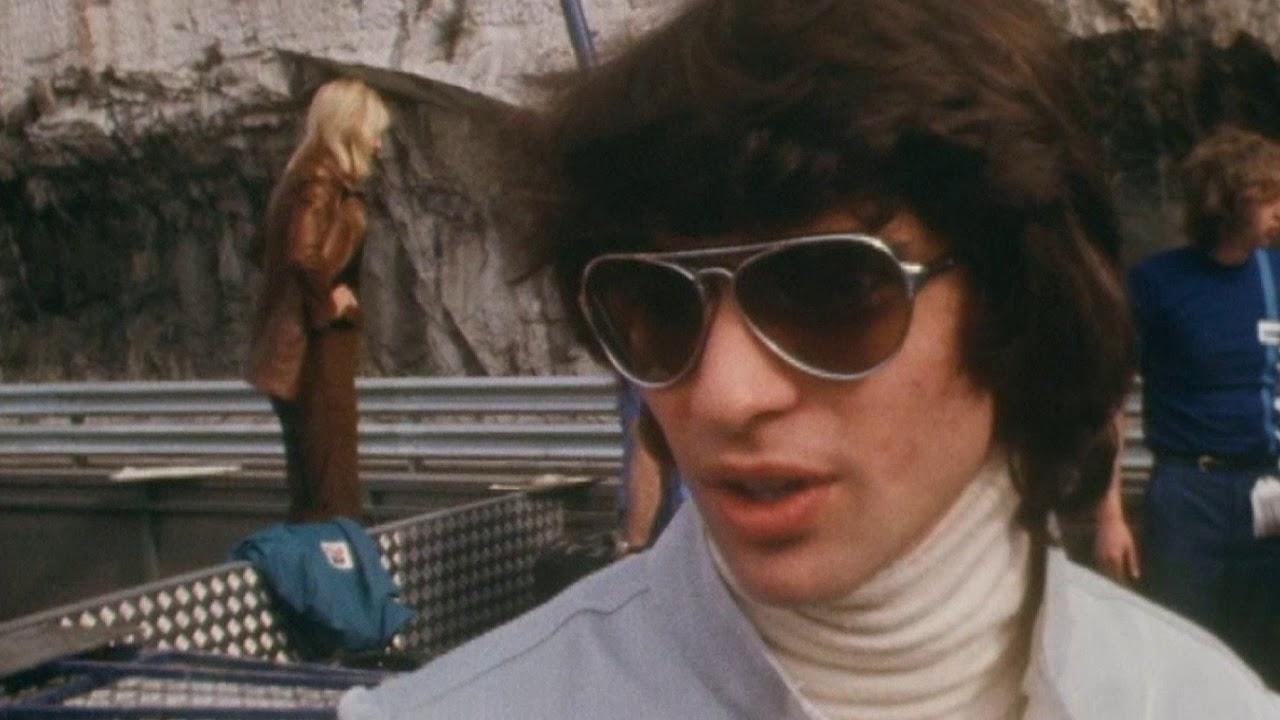
François Cevert, formally known as Albert François Cevert Goldenberg, was born 25 February, 1944 to Charles Goldenberg (who was a Jewish Russian emigre and who joined the French Resistance during WWII; the reason the Ceverts are the Ceverts is because taking his last name was too dangerous) and Hugette Cevert, a French national.
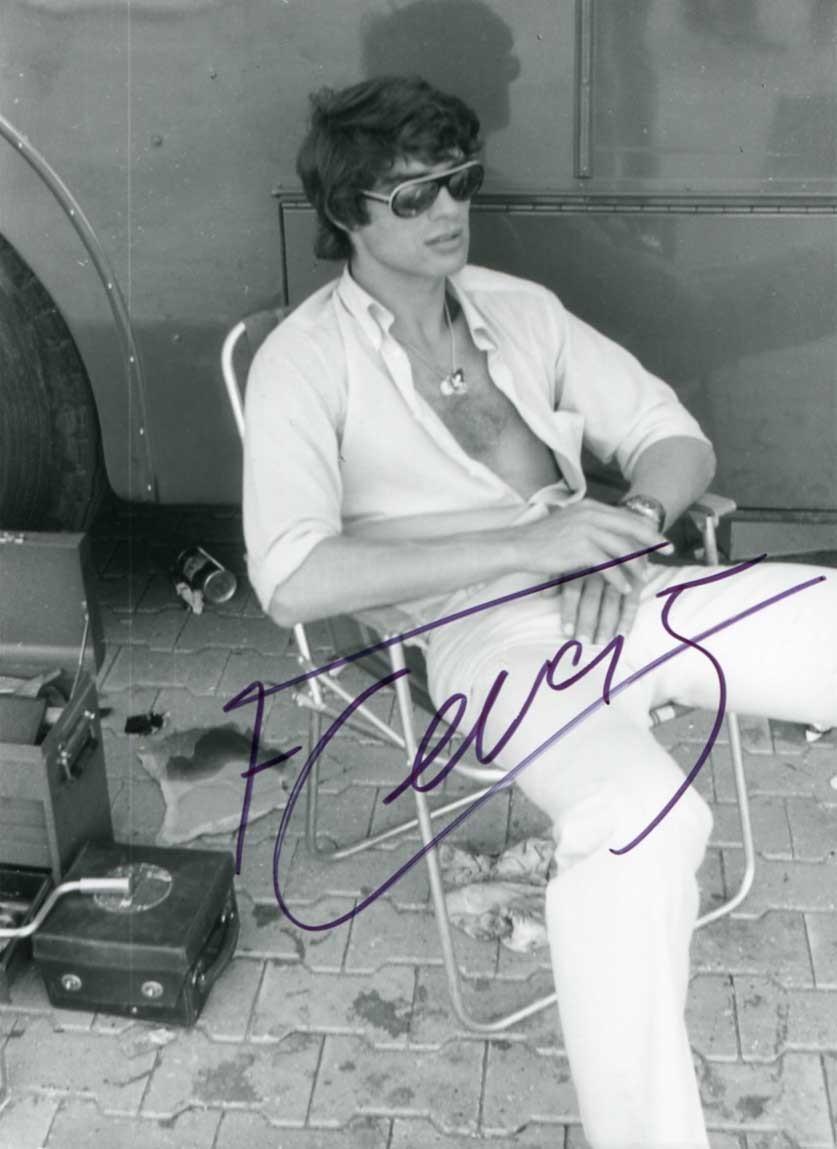
He had three siblings: Charles, Elie and Jacqueline.
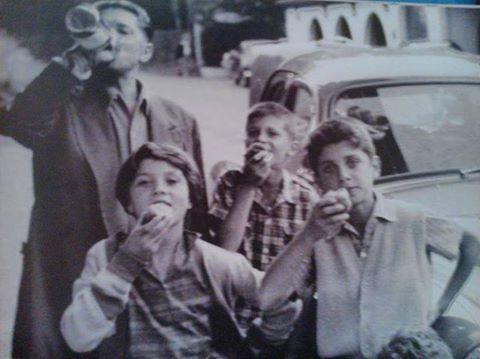
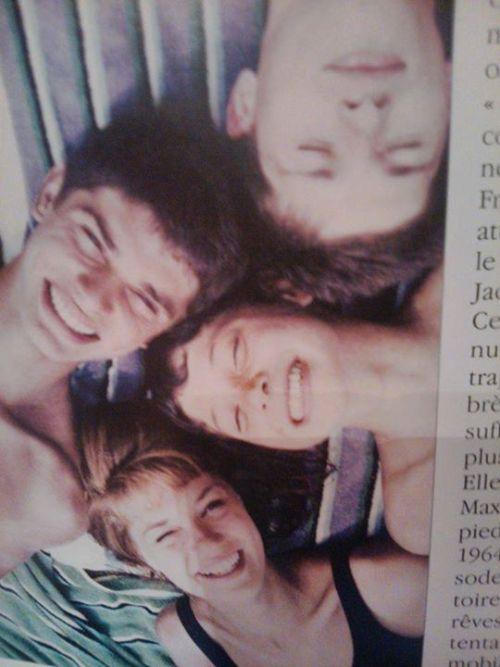
François was especially close with his sister Jacqueline, who married racing driver Jean-Pierre Beltoise. Jacqueline even drove him around when he started racing.
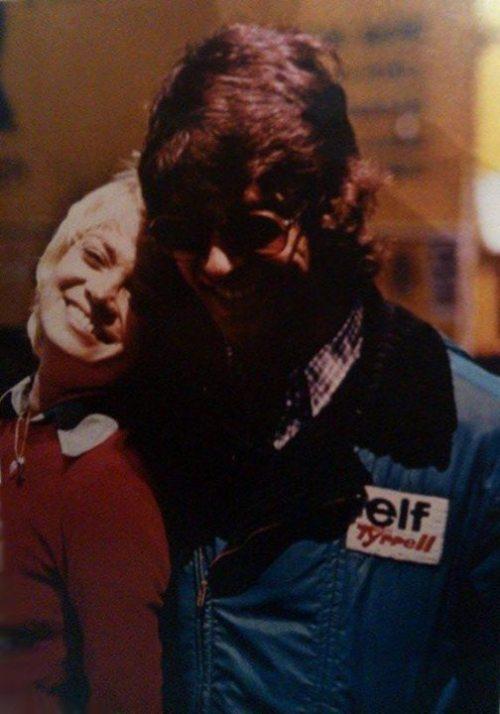
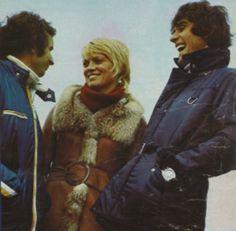
François talked his mom into buying a Vespa when he was around 14, which his mom didn't actually ride because François took it and raced his friends down the streets of Neuilly, a suburb of Paris where they grew up. François's interest in motorcycle racing didn't last particularly long, though he moved onto car racing after like ... one event.
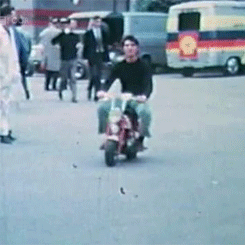
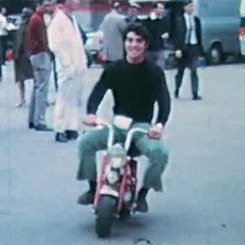
His dad was a jeweler and wanted François to go into the family business after he graduated, but François wanted to go into racing, which was a pretty big family issue.
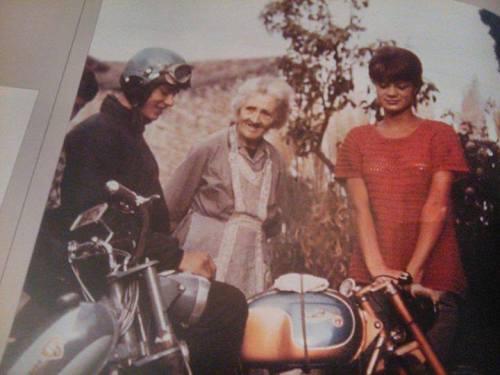
Francois, Jacqueline and their grandma.
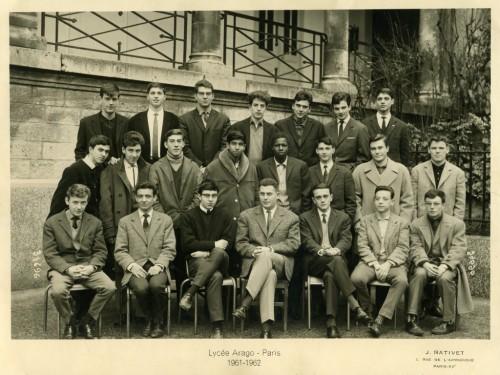
Also, here's François and his brother Elie with their graduating class. François is the farthest on the right; Elie is second to the left. François didn't really dig the whole school thing. He was "too pretentious and not sufficiently hardworking", according to his philosophy professor.
It is also important to note that François was a classically trained pianist! He was apparently good enough that he could have been able to pursue a career in it. His favorite piece was Beethoven's Pathétique Sonata, which will inevitably make you cry every time you hear it because they play it in like every François documentary and it hurts.
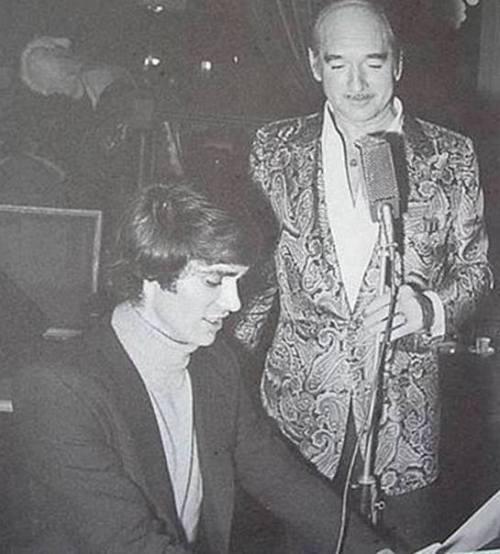
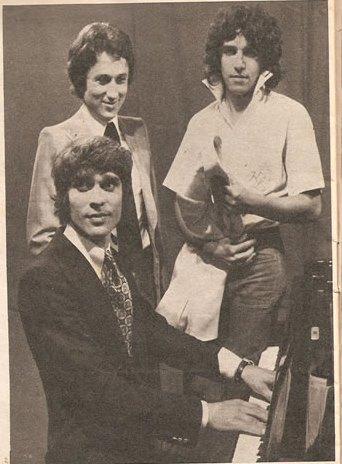
François Cevert playing the piano.
When François was 19, he had to do his National Service and chose to be stationed in Germany because he wanted to have a chance to perfect his German.
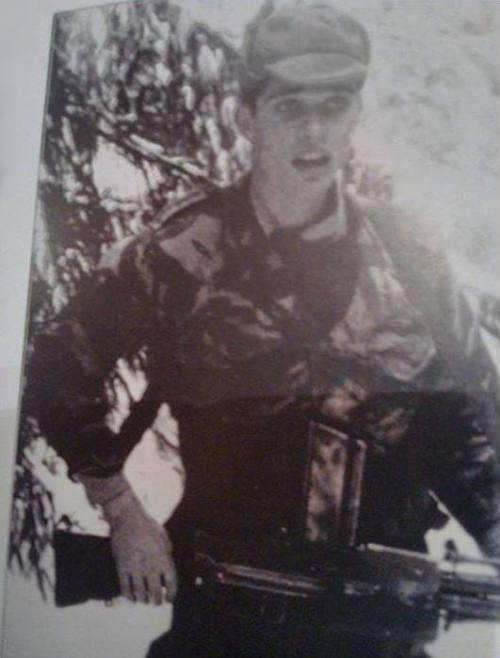
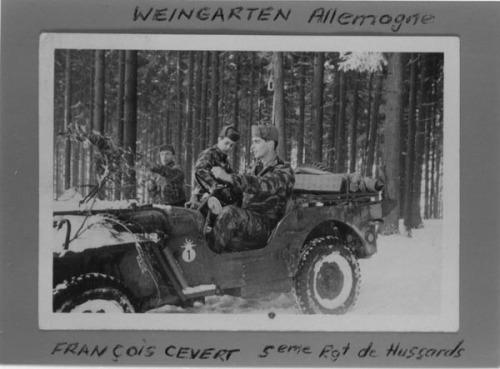
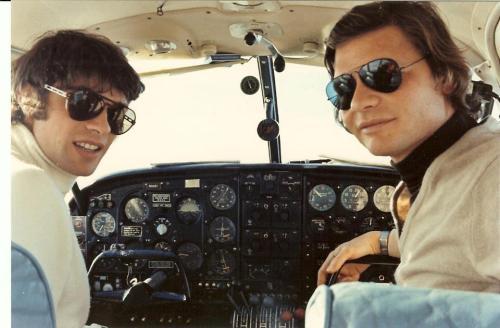
When he came back, François decided he wanted to pursue racing full time. But, without support from his family, François had no money and recruited the help of a married woman named Nanou that he met when he was 19 on a vacation and ended up falling for. The two of them entered themselves into the Magny Cours driving school and eventually François moved on to the Volant Shell Scholarship competition, which would award the winner an actual F3 car. Even though he was the only one without formal racing training, you bet François brought home that win. Look at him go:
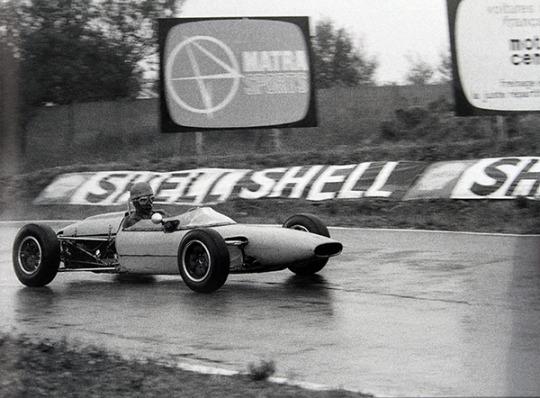
His first years of racing were incredibly difficult. François chose poorly from the F3 cars he had been offered, which meant his car was prone to breaking down. He and Nanou spent a lot of time sneaking into hotel rooms or sleeping on tarps in sketchy houses while François worked as a salesman and doing something in the fashion industry in order to save some money, until François's talents finally shone through. He won the French F3 Championship and was signed to a F2 team.
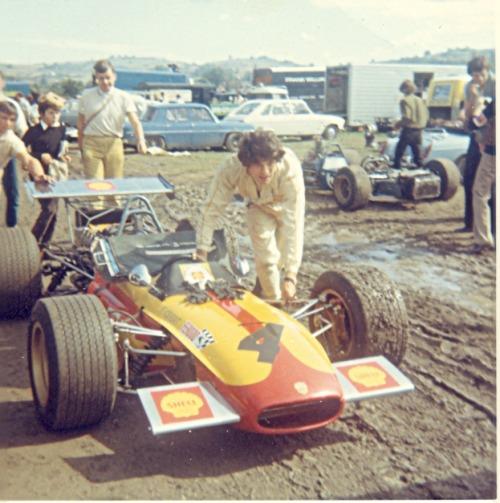

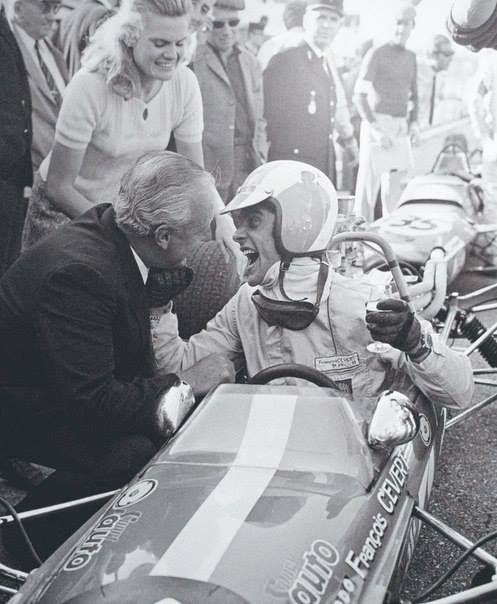
Here he is celebrating a win with his parents. They may not have helped fund his career, but they definitely did care for him.
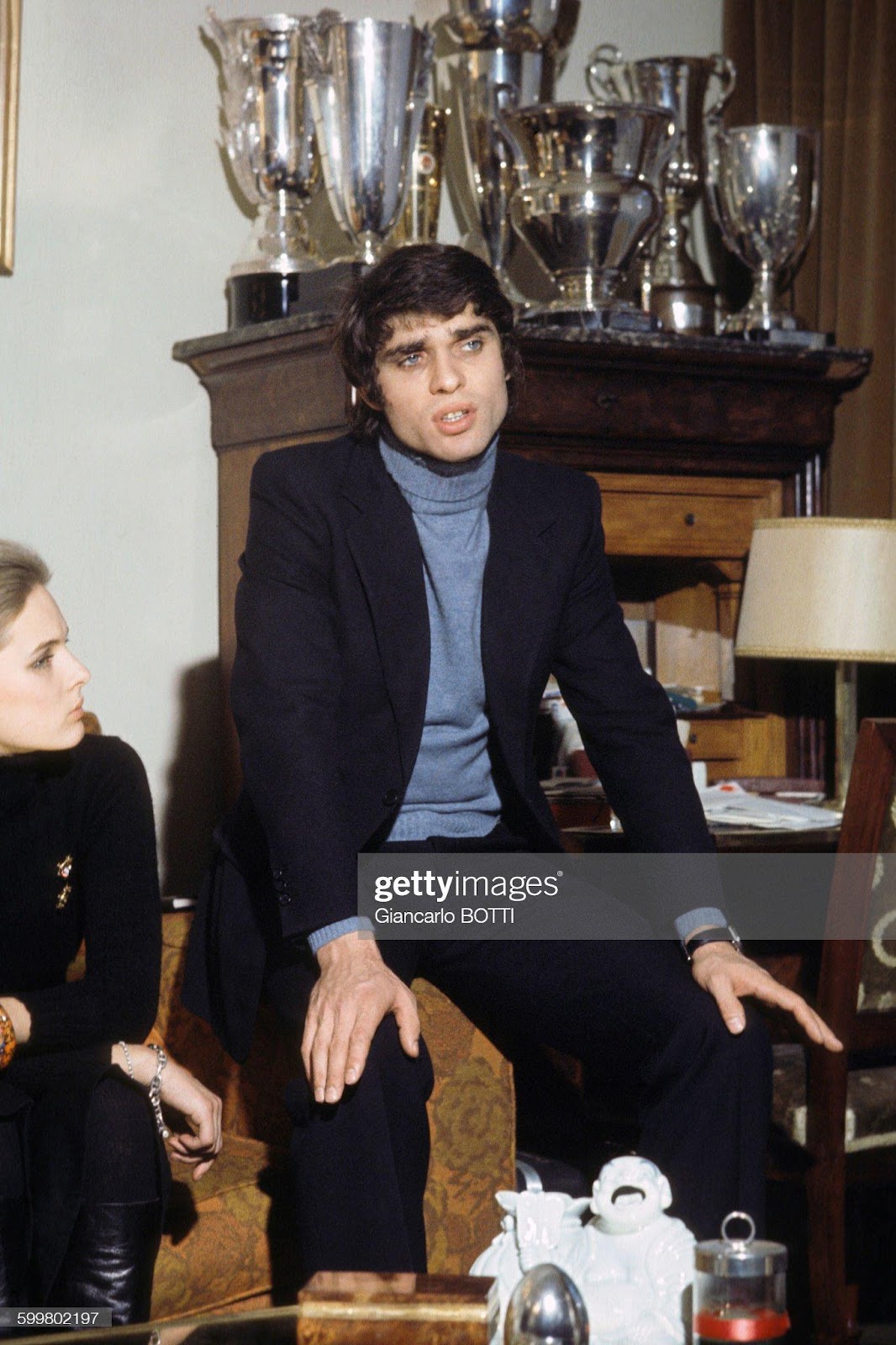
François Cevert, about 1960 in France. Photo by Giancarlo Botti / Gamma-Rapho via Getty Images.
Back in the 1960s and 1970s, Formula 1 drivers used to compete in lower series like F2 on occasion for extra money and because that was just a thing you could do back then.
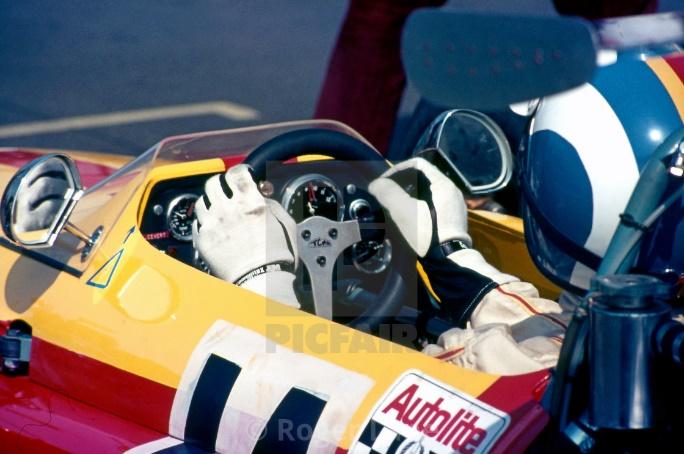
The hands of Francois Cevert rest on the steering wheel of his Tecno before the start of the F2 race at Thruxton in 1969.
François was a Formula 2 driver when Jackie was driving in F1 and, during a F2 race at the Reims-Geux circuit in 1969, the two were locked in a slipstream battle right up into the final corner, where François eventually held out long enough to gain the upper hand and beat Jackie to the finish.
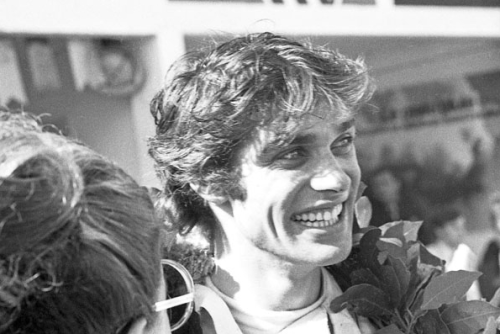
Francois Cevert on podium at Reims.
On that occasion, Jackie didn't really take too much notice. After all, it wasn't rare for an F2 driver to beat an F1 driver in a race. It wasn't until Crystal Palace later that season that Jackie was forced to pay attention, even though he was the one who came out on top this time. Stewart had such a hard time getting around the Frenchman that he went to Ken Tyrrell and told him to keep an eye on François.
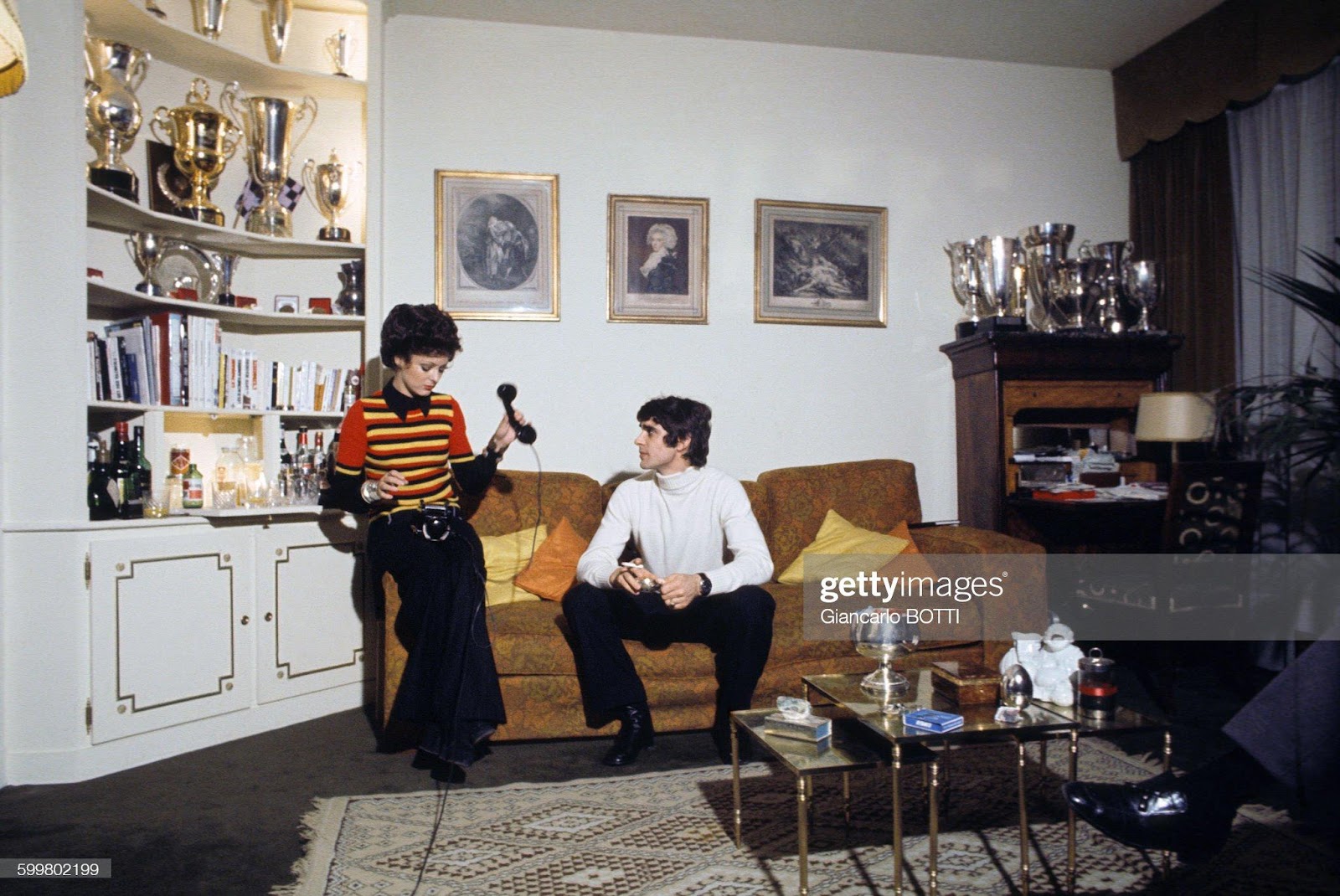
François Cevert with his companion Christina de Caraman, about 1960 in France. Photo by Giancarlo Botti/Gamma-Rapho via Getty Images.
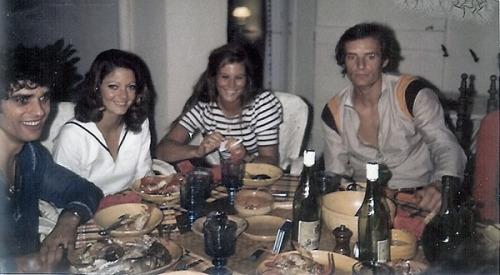
François Cevert, Countess Christina de Caraman, Genevieve Jabouille and skier Jean-Claude Killy in 1970.
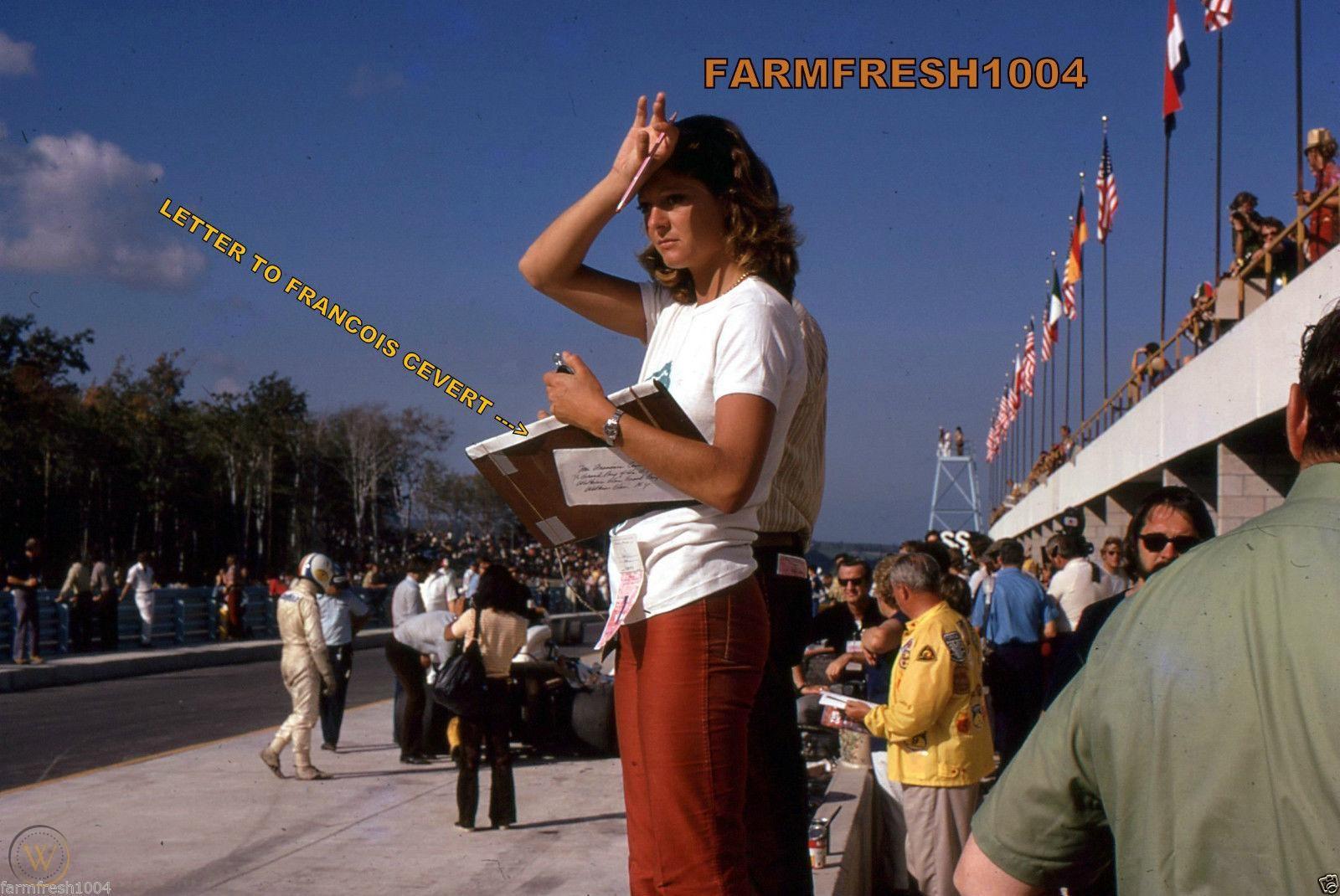
Christina de Caraman awaiting Francois Cevert at the Glen for the 1971 US Grand Prix.
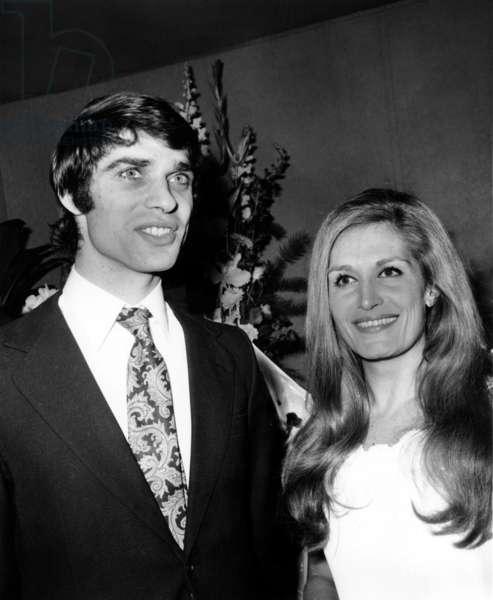
Dalida congratulated by Francois Cevert after her show on November 24, 1971. B/w photo.
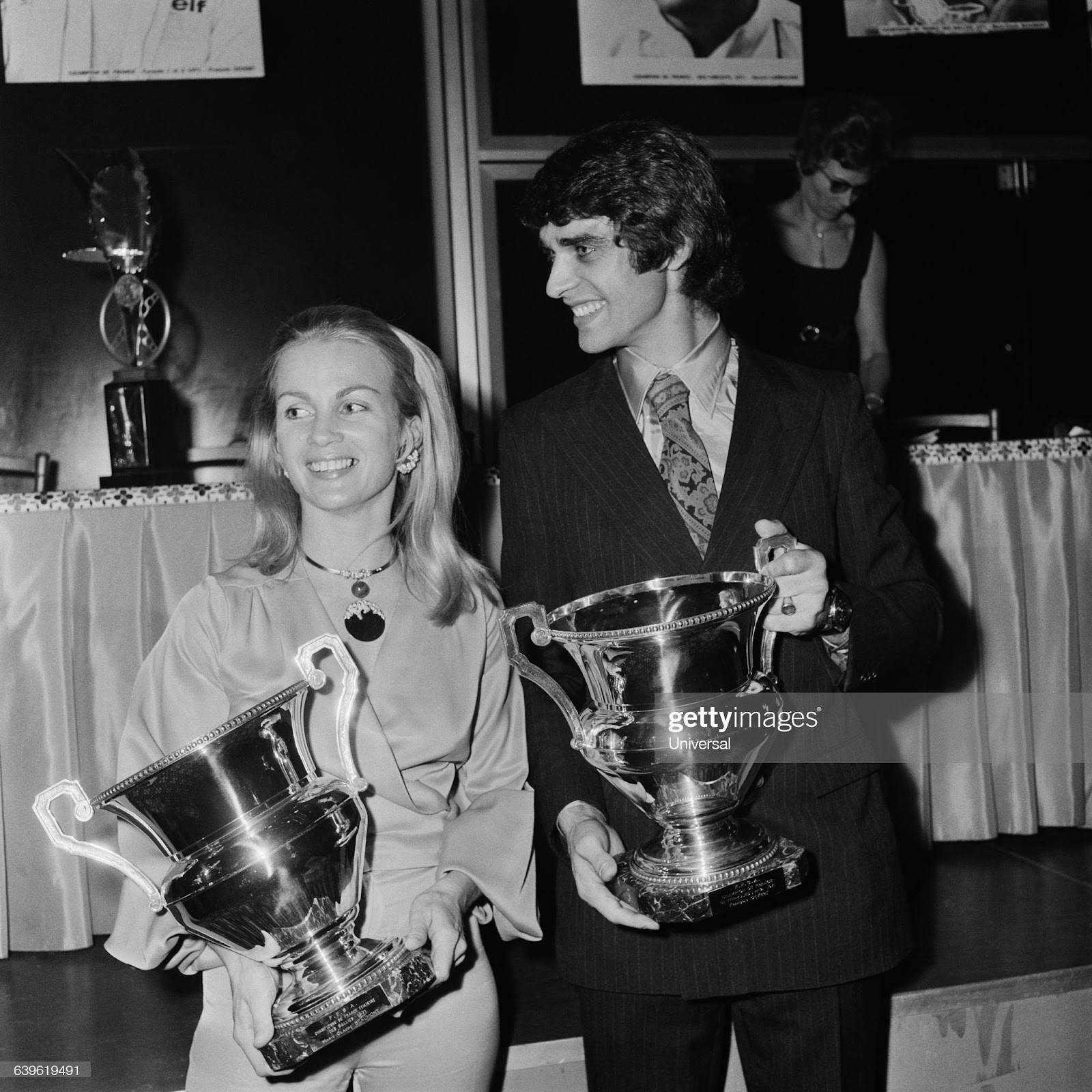
1971 French racecar champions. Female rally champion Marie-Claude Beaumont and Francois Cevert (Formula 1 and 2) on December 13, 1971. Photo by Universal/Corbis/VCG via Getty Images.
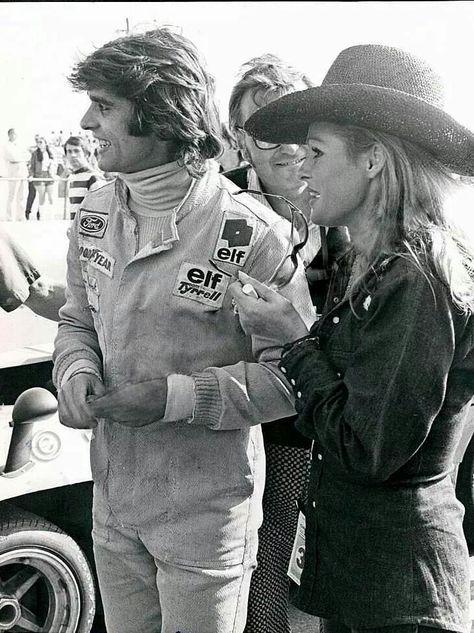
Francois Cevert and Ursula Andress at the Glen in 1972. Chris Economaki is between them!
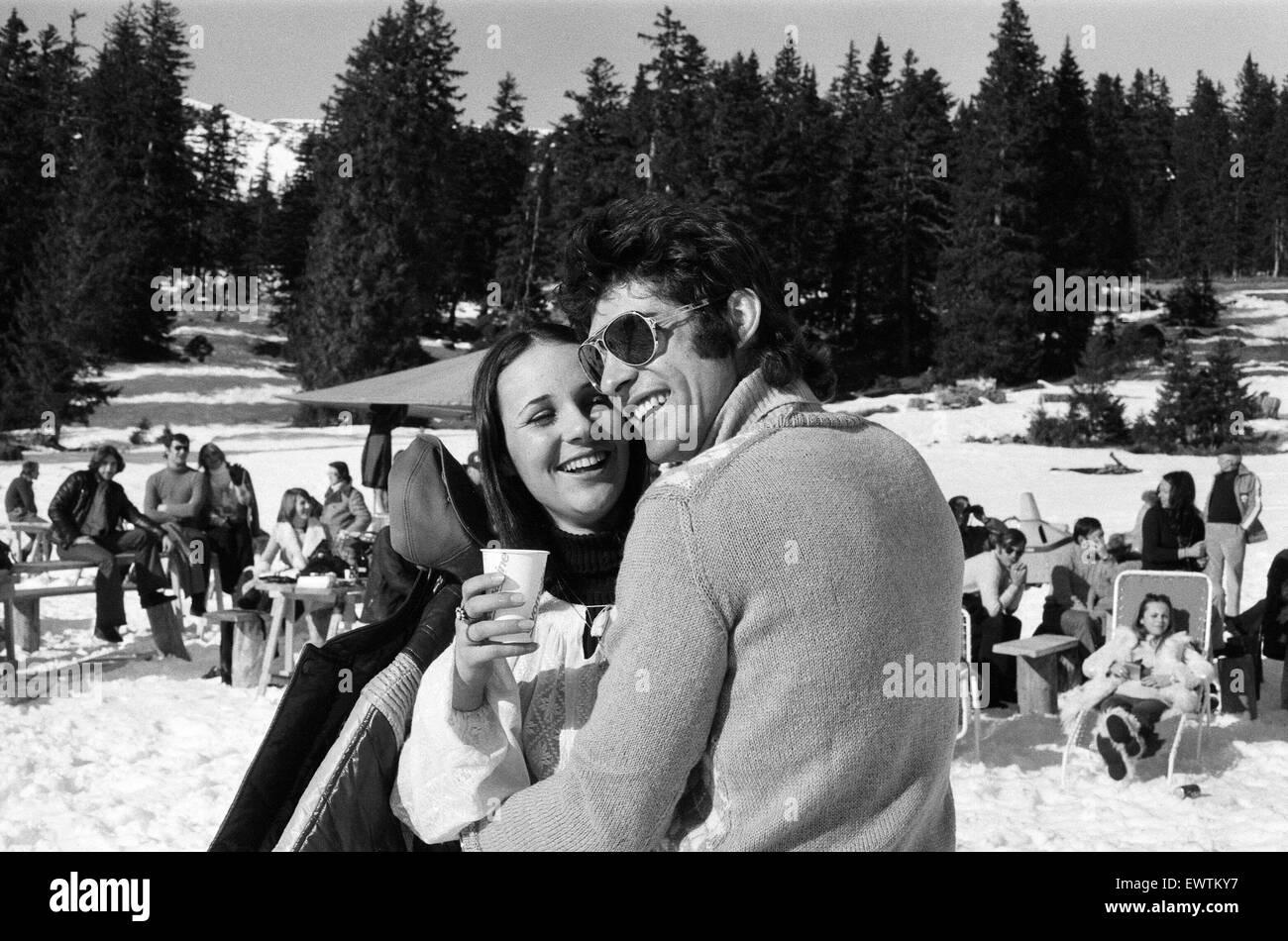
Francois Cevert enjoys some time off with a girl friend at a ski resort in Villars Sur Ollan, near Montreux, Switzerland, in March 1973.
That's some pretty high praise right there random fact: one time François slept with someone dressed entirely in his race gear like overalls, helmet, gloves, the whole shebang. There is no reason for this inclusion but we just wanted to mention that because it will amuse us to the end of time. He may have also had a thing with Brigitte Bardot????
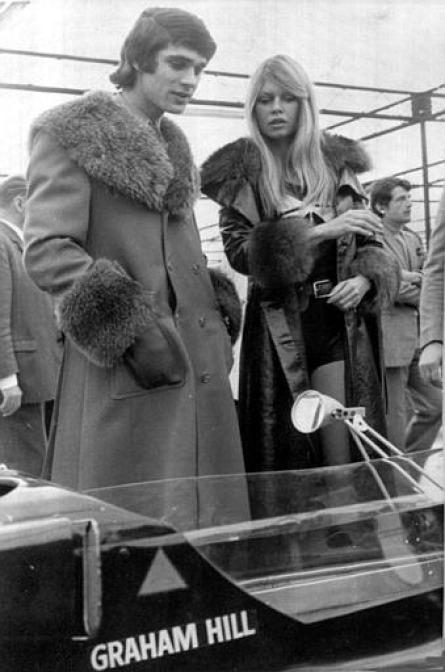
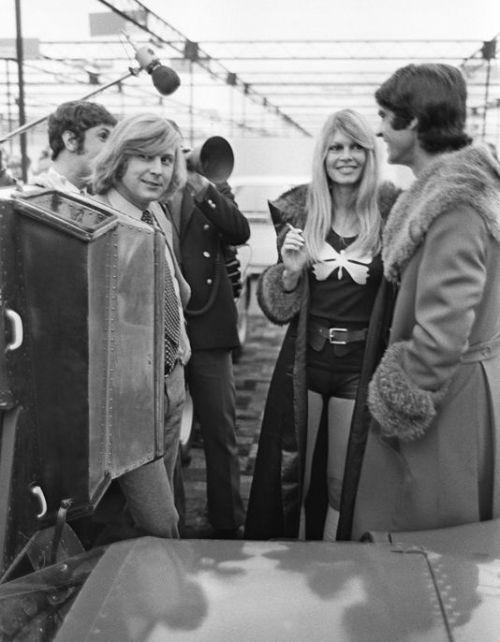
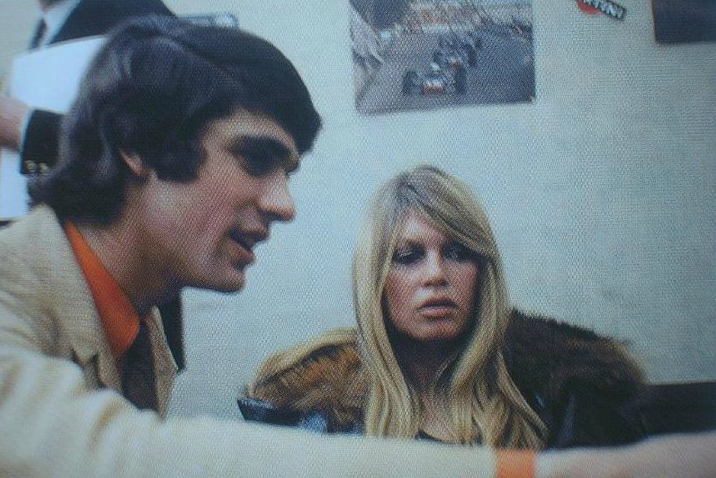
So there's that. And now we diverge to talk about another topic.
Which meant that, courtesy of the good word Jackie had put in for the man, Ken Tyrrell called upon François Cevert to fill the gap left in the team. François had a feeling he'd be getting called about it and spent actual days just hovering around his phone, never leaving the house just in case. Naturally, it was when he decided it was time for a bath that the actual call came in. There's no purpose for this anecdote other than just think about the fact that François was in the bathtub talking to the man offering him his first F1 drive. Cevert made his debut at the Dutch Grand Prix at Zandvoort and God bless the photographer who documented that event:
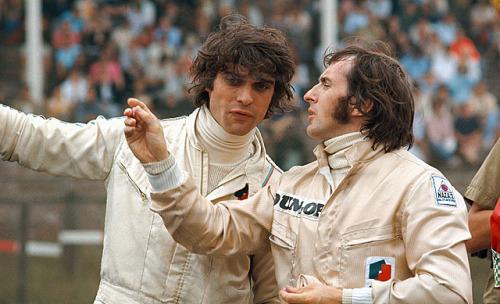
Jackie Stewart and Francois Cevert were close, even in an era when racing drivers would frequently go on holiday together.
Now, one thing to keep in mind about François is that ... he had a bit of a temper. Basically, the entire chapter of his biography where they talk about him racing in Le Mans is like, descriptions of François frequently pitching fits. He was stubborn, maybe not the best team player all the time, he got sulky when he lost, etc, etc.
Except ... not with Jackie.
"François's fits of anger never lasted and, at times, even used to find his pleasure at Jackie's victories somewhat incredible. Just think how many Grands Prix he would have won if there had been no Jackie." Ken Tyrrell
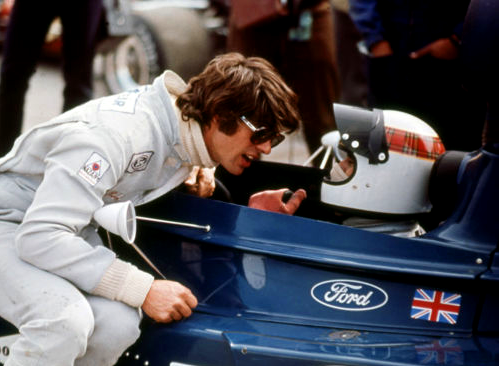
“François was like a sponge. He just wanted to take in everything because he was coming up from Formula 2, he knew he didn’t know much and he wasn’t that quick to begin with. I think it was Zandvoort where I had him follow me round. Ken asked me to do it. I kept the pace and got faster and faster and he got faster and faster because he was staying with me. He found something like four seconds and you’ve never seen such an effervescent face afterwards. He kept on learning and he never stopped.” Jackie Stewart
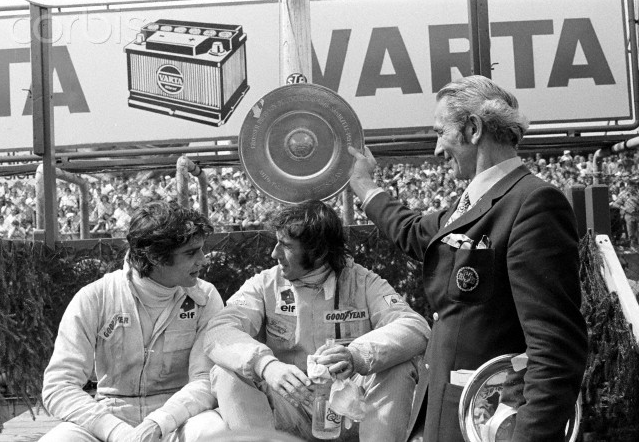
With Jackie, hotheaded François turned into the perpetually patient protegée, listening carefully to all of Jackie's instructions and suggestions (maybe not agreeing with all of them, but certainly never arguing about them, as François did elsewhere). He showed so much respect for Jackie and Jackie treated François as an equal. We feel like we keep saying "even in a time when racing drivers were all close..." but it's honestly true. François and Jackie kind of transcended the boundaries of being brothers-at-arms in a sense and they transcended the boundaries of teammates. I mean, what teammates tell each other literally everything about the setup of the car?
We love the video where François and Jackie go over how to achieve a perfect lap at Monaco in 1971. Jackie is obviously the one in charge here, he's driven this circuit way more times than François, he knows his way around, he's won this race, so naturally he's going to have a lot more to contribute to the conversation. But it's not simply instruction. François makes suggestions, Jackie acknowledges them and he even appreciates the fact that they would work and starts strategizing based on that and, for someone who has won a world title, is on track to win a second one and is talking to a man who has never driven this circuit in a Formula 1 car before ..., that's incredible.
"He was very anxious to learn. He was a good listener and wanted to know everything we were doing. He was a young, bright-eyed and bushy-tailed racing driver with incredible enthusiasm and energy. At Tyrrell we'd always made a point of sharing everything between both drivers, so he got everything that I had in the way of setup, lines, gear ratios, anything at all. He learned that he had to be smooth, that he couldn't upset the car." Jackie Stewart
If you're not convinced, here's some Kyalami-Ranch related evidences.
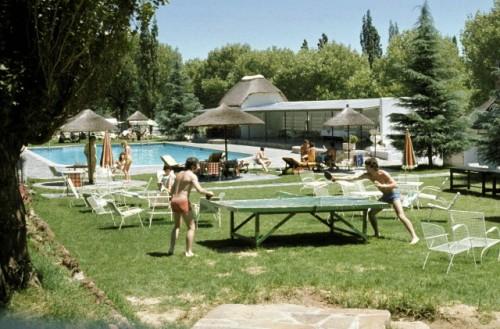
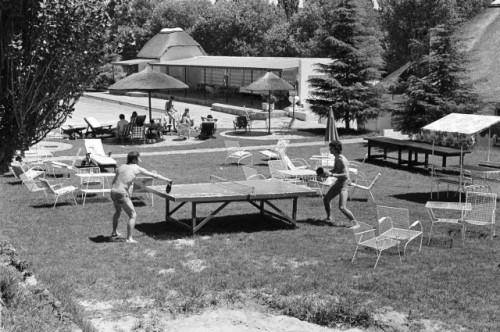
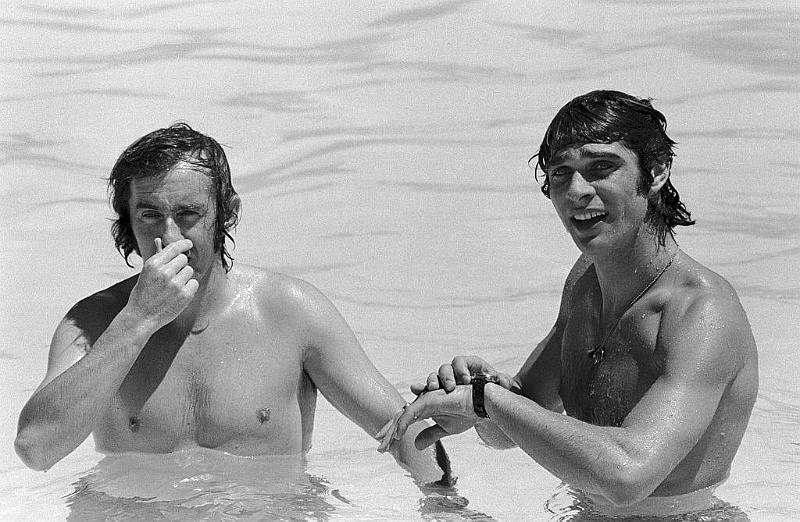
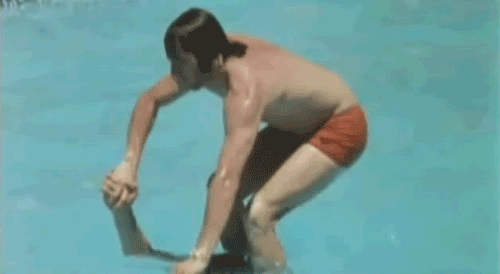
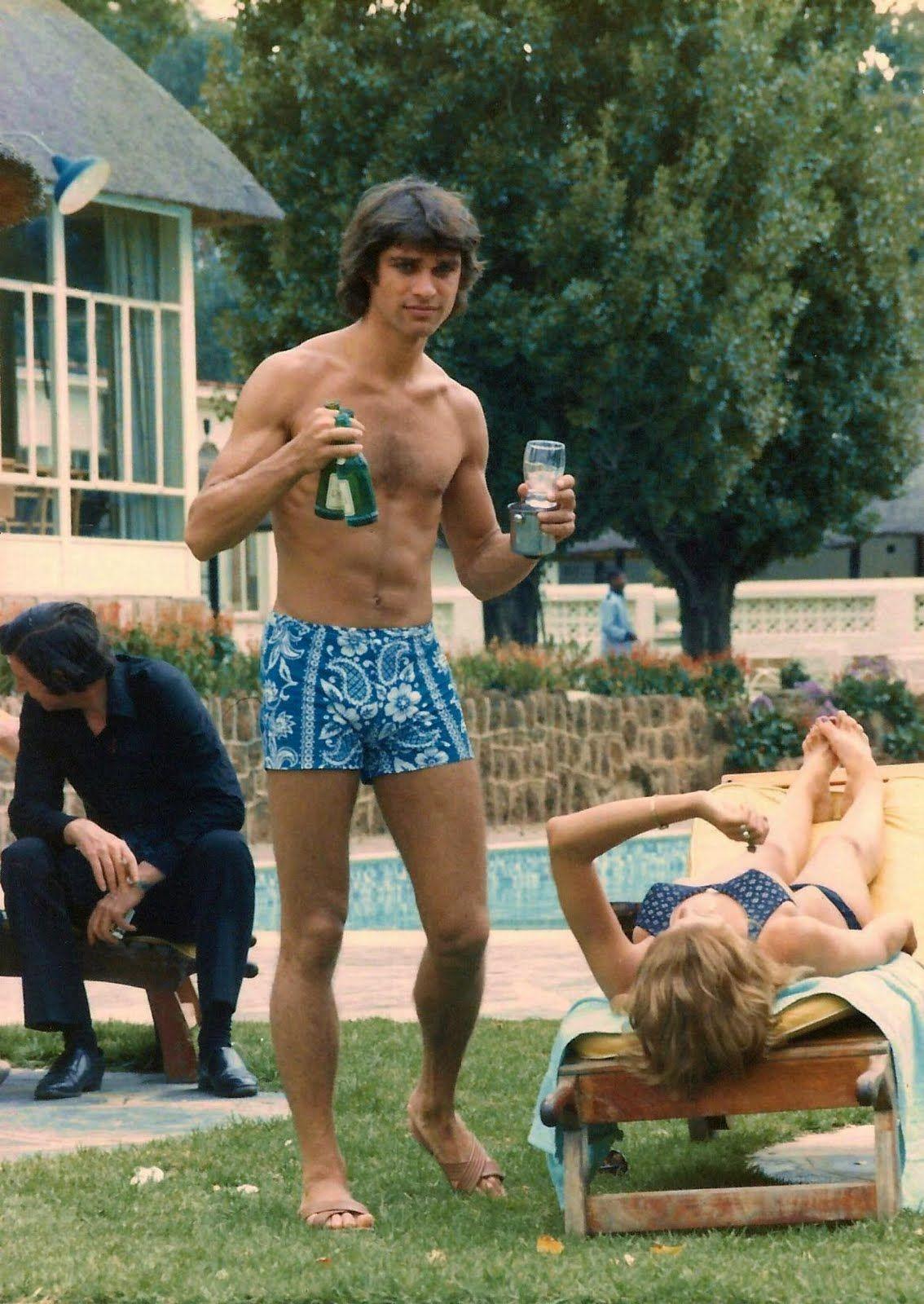
François Cevert at Kyalami Ranch in 1972.
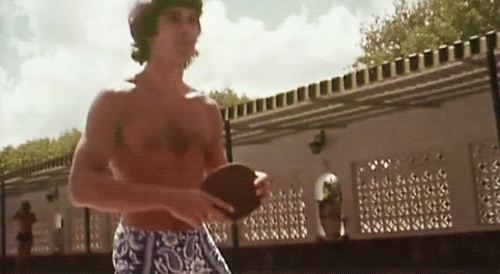
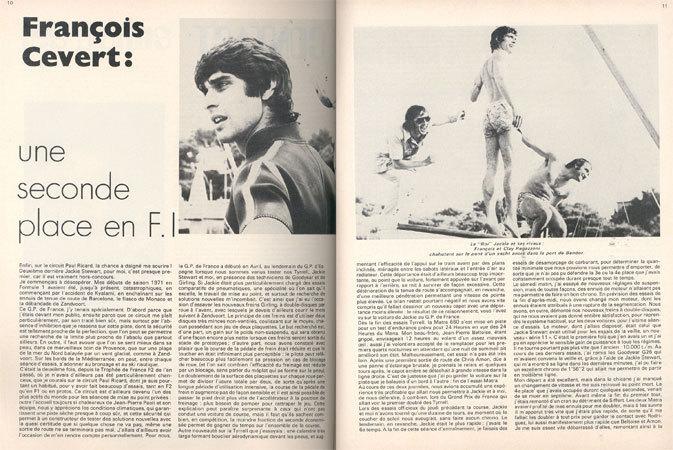
François had a little bit of a rough start to his career, retiring on his first race and only scoring one championship point in 1970 (keep in mind though that, at that time, you only started scoring points at P6, so ...) but he was constantly learning and Tyrrell in general were learning how to get their car sorted out. Jackie came in 5th that year, but the two of them were ready to make a strong resurgence in 1971.
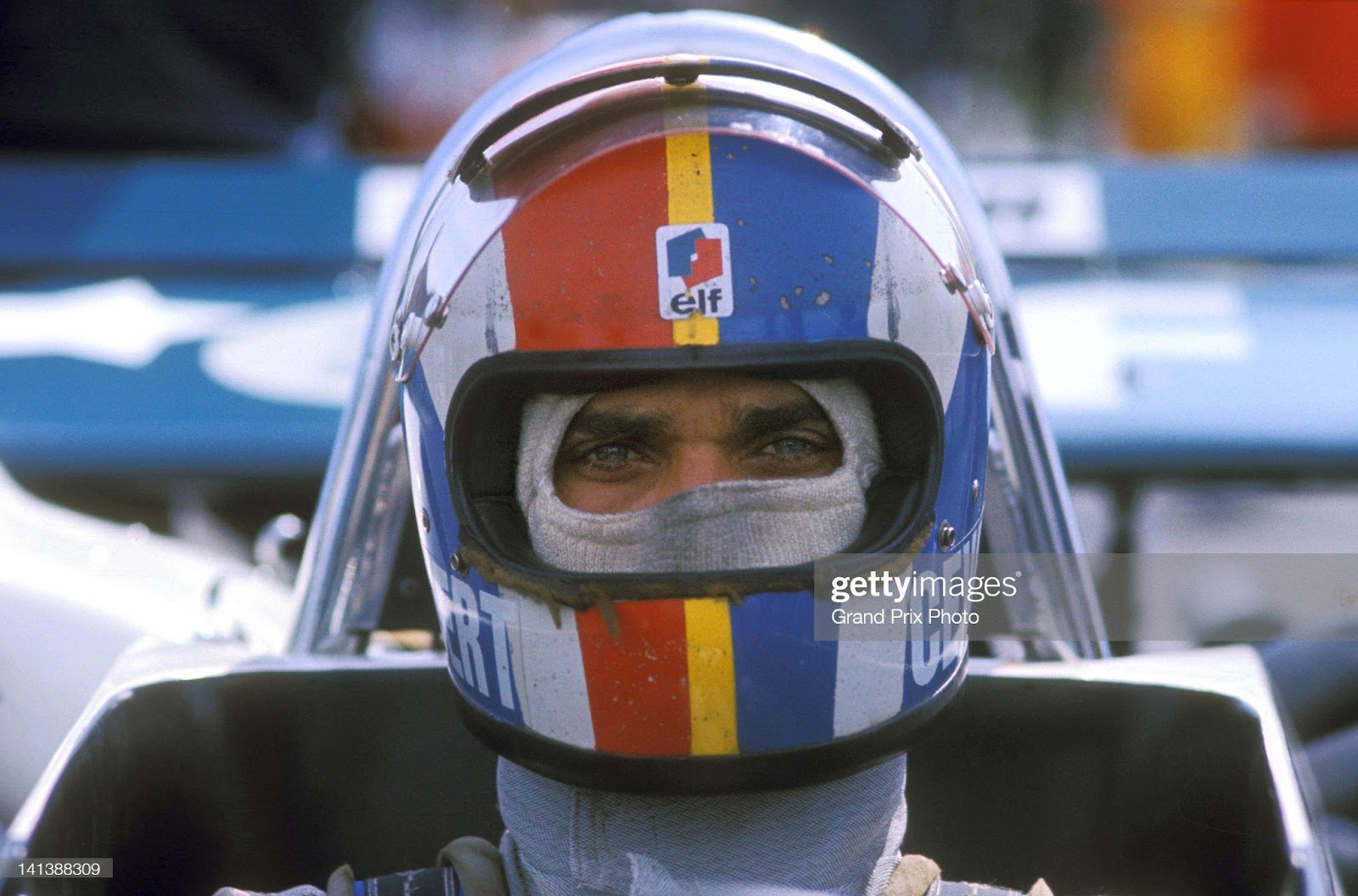
Francois Cevert, driver of the Elf Team Tyrrell Tyrrell 002 Ford V8, during the 1971 Formula 1 season. Photo by Grand Prix Photo/Getty Images.
And they most definitely did.
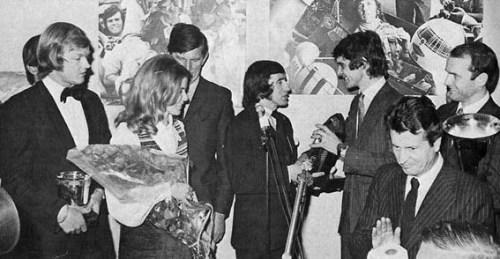
The post-season awards ceremony.
Jackie won the championship and François came in third. A perfect opportunity for even more pictures of the two of them looking all wrapped up in one another.
That year they started taking up the Tyrrell 1-2 pattern that became pretty characteristic of them (the first one in France, of all places).
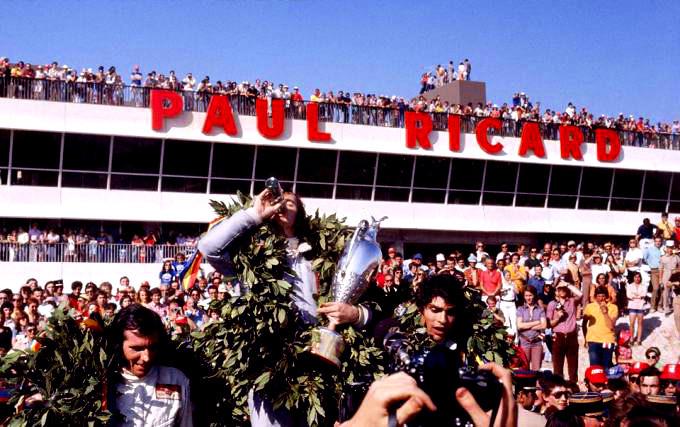
Here are some more podium pictures:
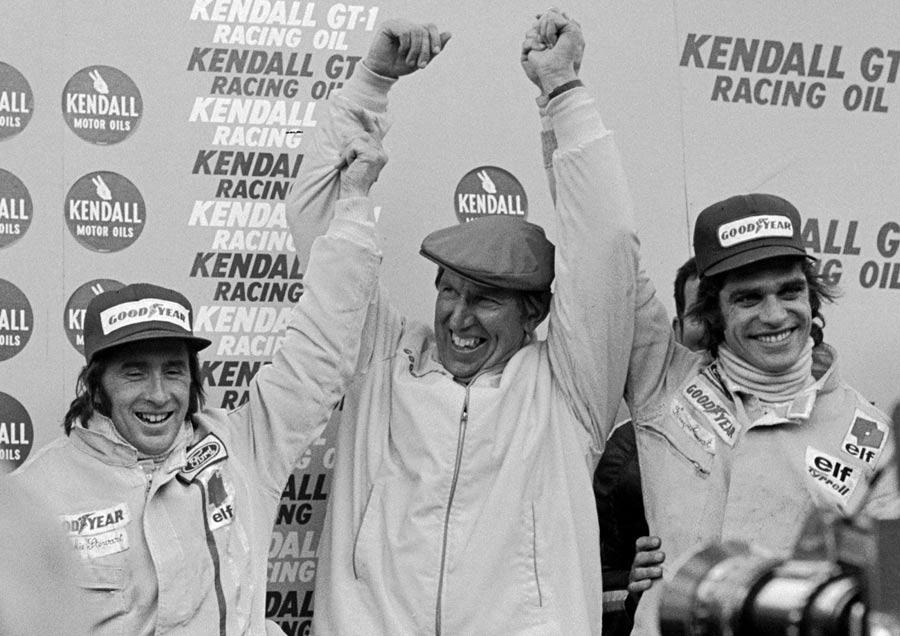
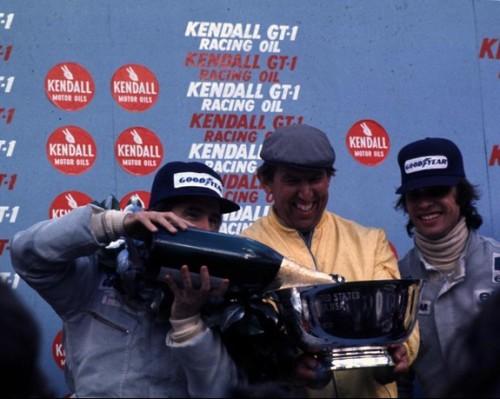
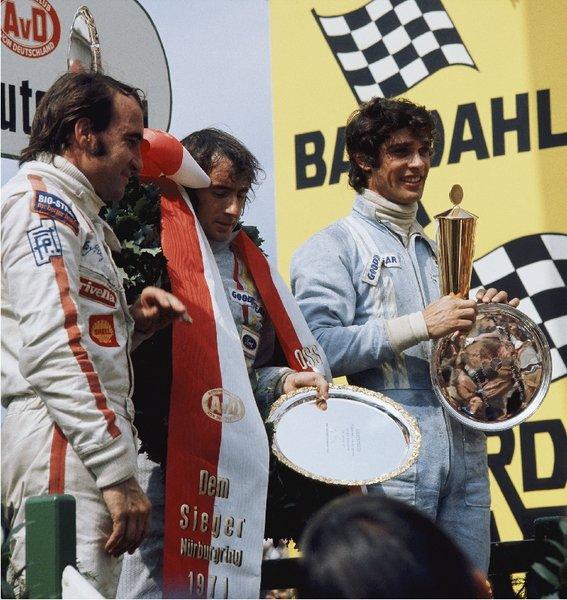
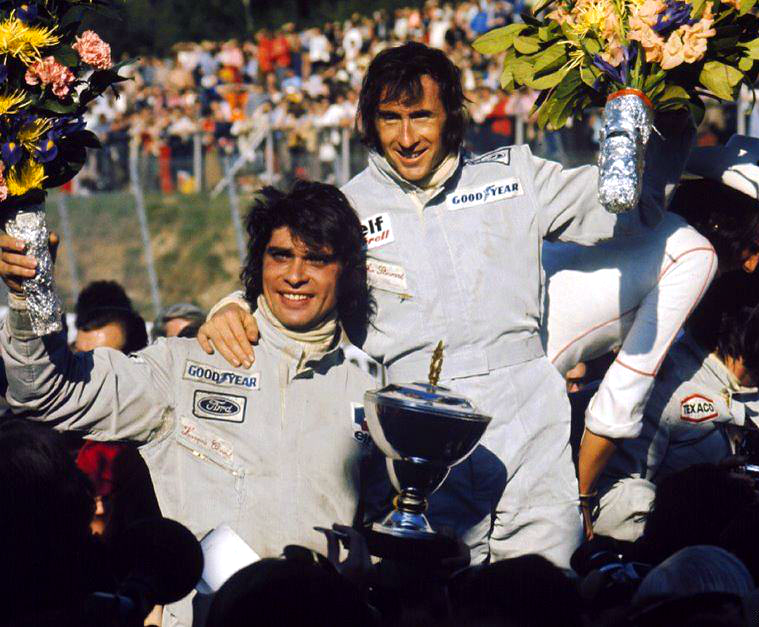
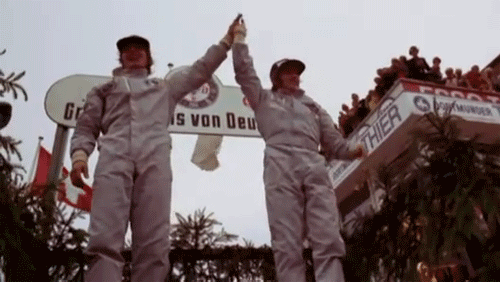
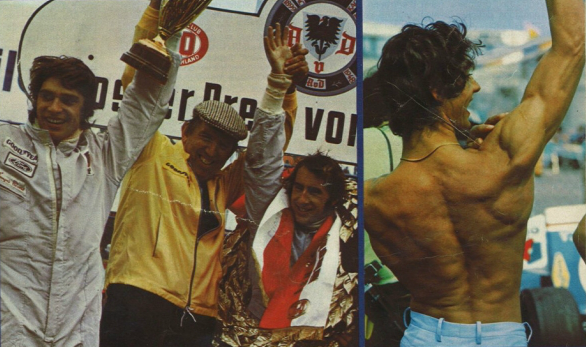
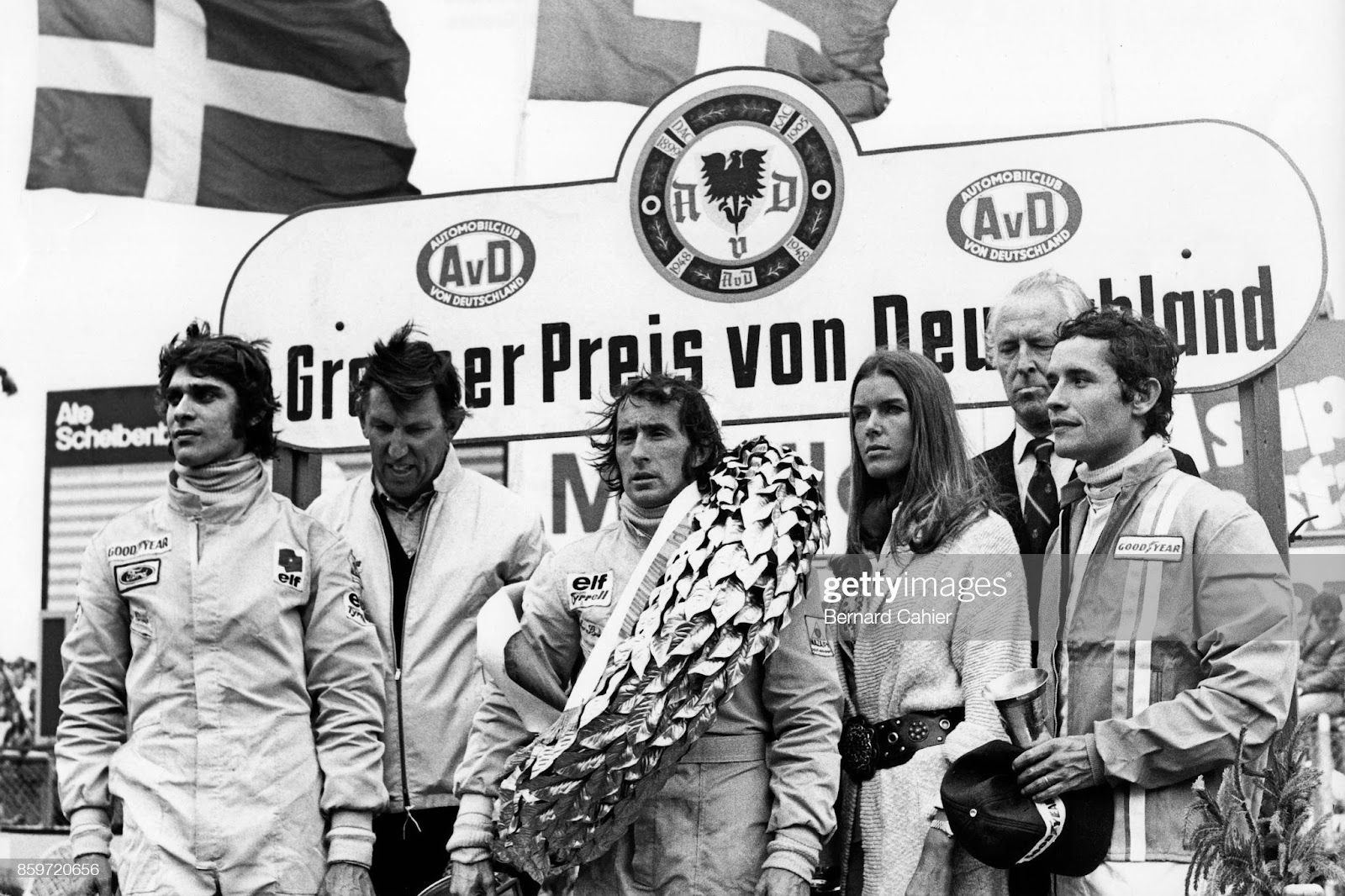
Francois Cevert, Ken Tyrrell, Jackie Stewart, Helen Stewart, Prince Metternich, Jacky Ickx, Grand Prix of Germany, Nurburgring, August 05, 1973. Photo by Bernard Cahier/Getty Images.
The 1973 German GP was the last time François and Jackie shared a podium.
Anyway. 1971. The last race of that season, the US GP at Watkins Glen, was the first race that François won. The odd thing was, he wasn't actually trying to win it. Jackie started from pole and François from fifth, but it was Denny Hulme who took the lead in the beginning of the race, in front of François and then Jackie.
“I felt a bit uneasy to be in the lead ahead of Stewart; I much preferred to see him ahead of me and to try and follow him. I didn’t want to run the risk of slowing him down and stopping him from giving his maximum because I wasn’t fast enough for him, so I prepared to get him in front of me and try to follow him if I could. As I overtook Hulme, therefore, I squeezed him a bit to one side, braking a little earlier than planned so as to leave on my right all the room I could for Stewart to overtake. Jackie saw my maneuver, charging into the hole and took the lead. I was second. Immediately after, I realized that I was getting away from all the others. I was mentally rubbing my hands; 'that's all we need. Jackie in the lead, me second.' I wasn't thinking of pressing Jackie then, the idea hadn't even occurred to me. I was simply thinking 'I'm second, that's good, that's perfect.' Francois Cevert
But it didn't stay that way for long. As it was over 100 (American) degrees, Jackie's tires started to suffer and he soon realized that he was going to have to change them if he wanted to continue racing so, seeing that François's tires were holding up fine, he flagged his teammate through and fell back. Jacky Ickx was in third and the other Jackie put up a fight to keep him away from François so, by the time he managed to get around Jackie, François had already set up a considerable lead of a few seconds. About halfway through the race, François's tires started to go whereas Jacky's only seemed to improve under the excessively hot conditions (the benefits of having different tire manufacturers), but Jacky's alternator fell off, punched a hole in the gearbox and left oil in the track that caused Hulme to crash. Even François hit the wall but kept right on trucking with a lead of 29 laps. Nobody came even close to touching him for the remainder of the race.
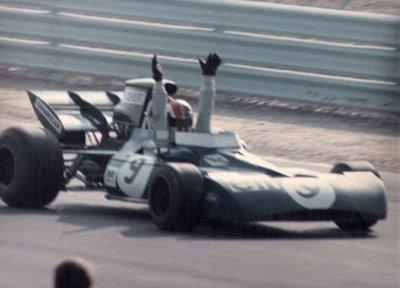
October 3, 1971. With both arms raised as a sign of victory, Francois crossed the finishing line; he had won his first Grand Prix. He was overcome with joy. That night, the world was his and Jackie Stewart shared his teammate’s pleasure. To help Francois make his getaway, he did everything he could to hinder Ickx and only allowed him to overtake when his own car packed up after the long struggle to delay him. As Jackie reached the pits, before his car had even stopped, the first question he asked was: “has Francois won?”
50 years since the first and only victory at the Glen, the track that marked his destiny. “I feel pretty good after winning $ 50,000. I followed Stewart from the start and then he signaled me to overtake him. Jackie is a very sensitive driver and a great teacher. He let me pass." Francois Cevert
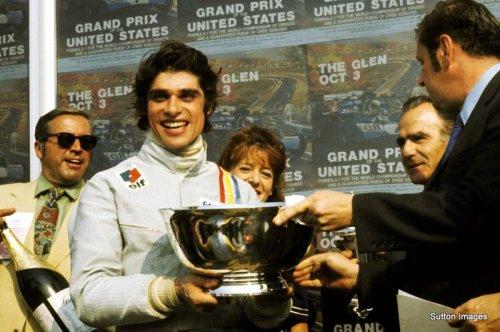
Honestly, one of our favorite lil François anecdotes from this day is the fact that he got on podium, ready to celebrate his first race win with an impressive bout of champagne spray .... except, he couldn't figure it out ....... so all he got was this lil squirt of champagne … According to people in the crowd, he tried really, really hard to get some champagne spray going and just eventually gave it up.
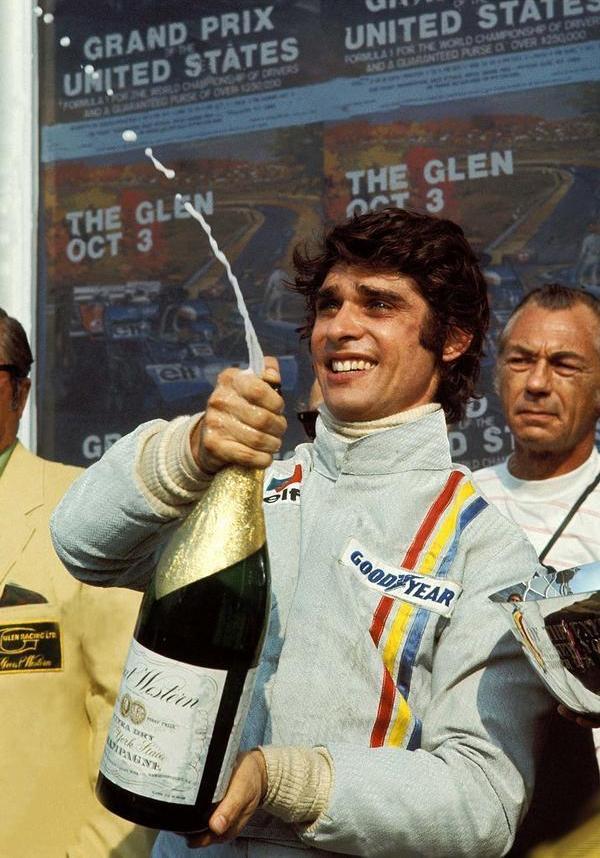
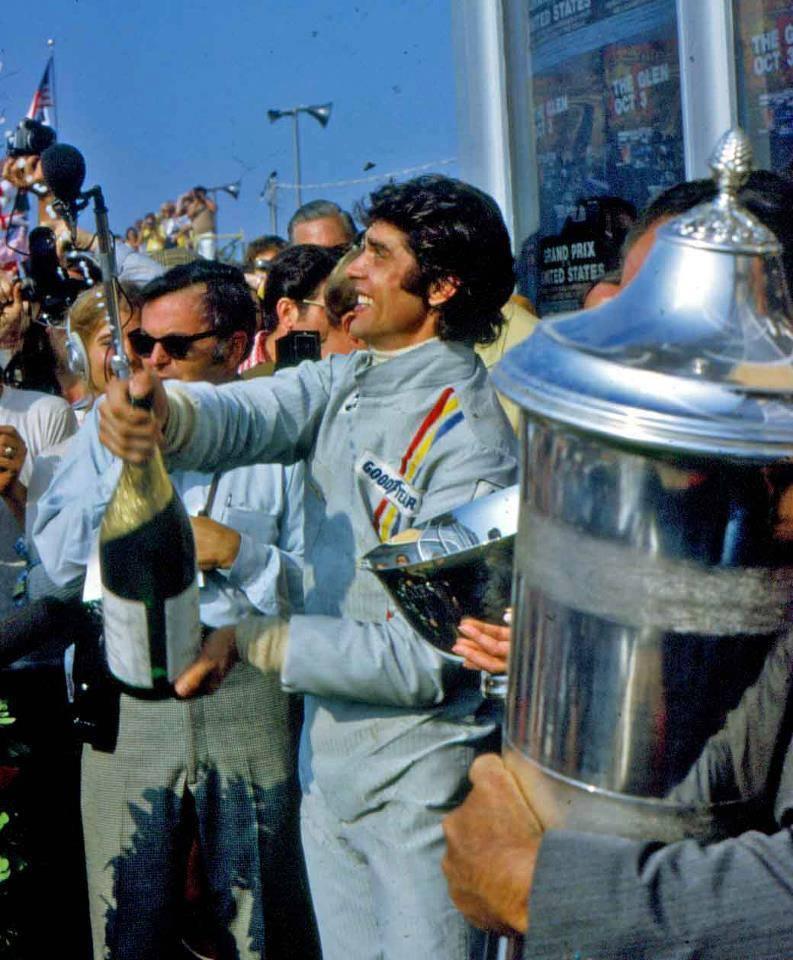
When he's in Paris, François likes having a quiet dinner in front of the TV. He has so many trophies that they don't fit in his 2-bedroom apartment and therefore he has to keep some of them in the basement. And, at this point in time, François's favorite series was F2 because "I actually win there".
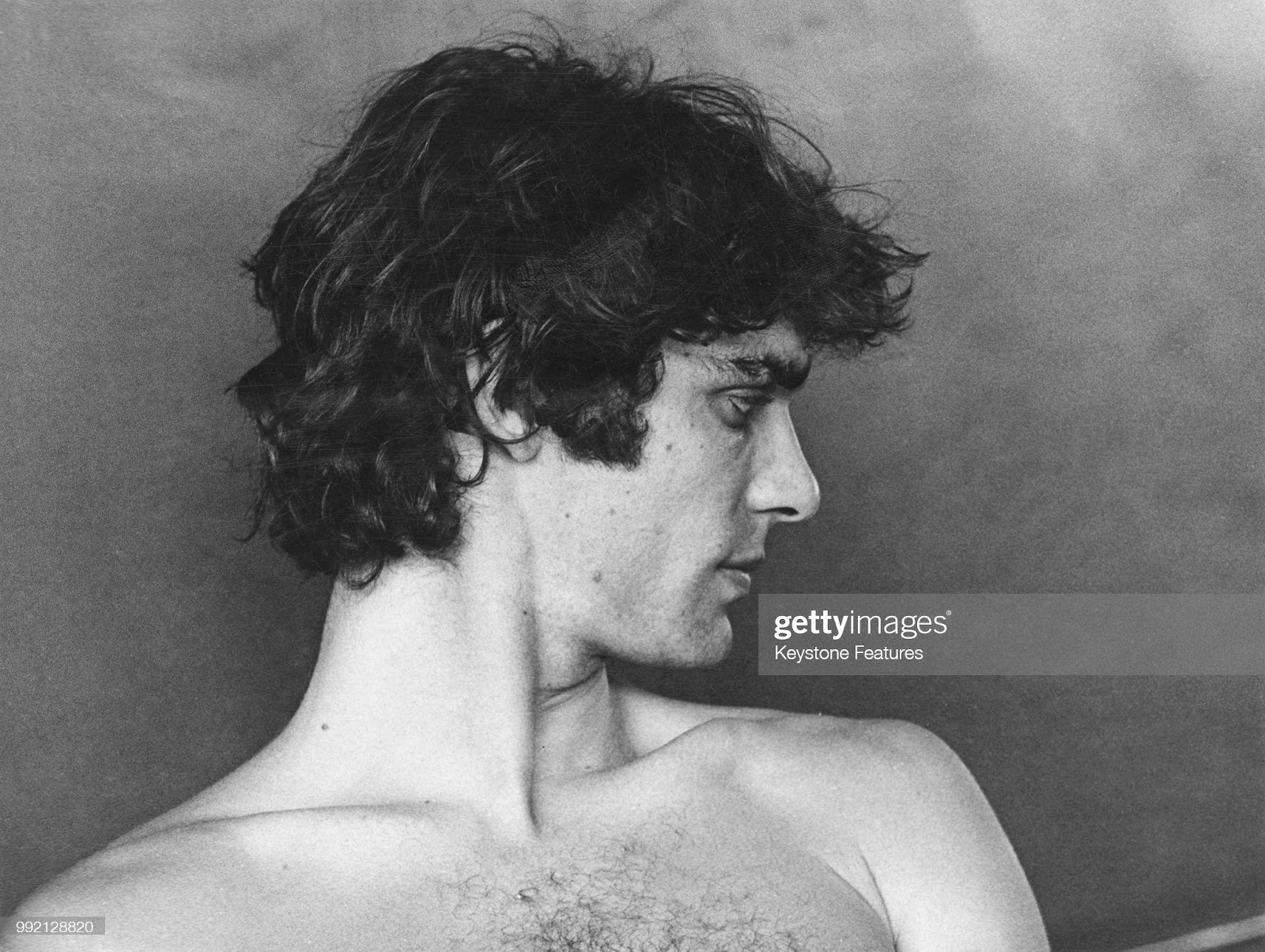
François Cevert at the Argentine Grand Prix on January 23, 1972. Photo by Keystone Features/Hulton Archive/Getty Images.
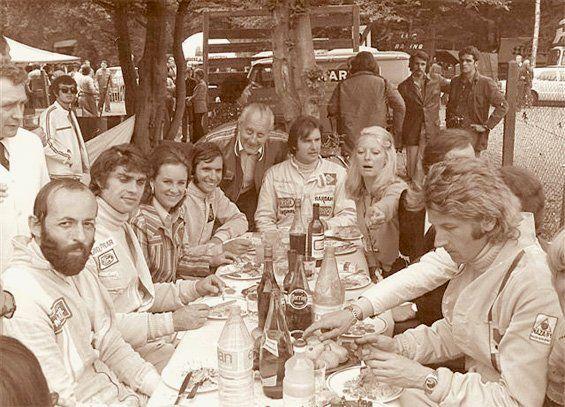
Henri Pescarolo, Francois Cevert, Maria Helena and Emerson Fittipaldi, Jean Pierre Jabouille, F2 on May 05, 1972 at Rouen.
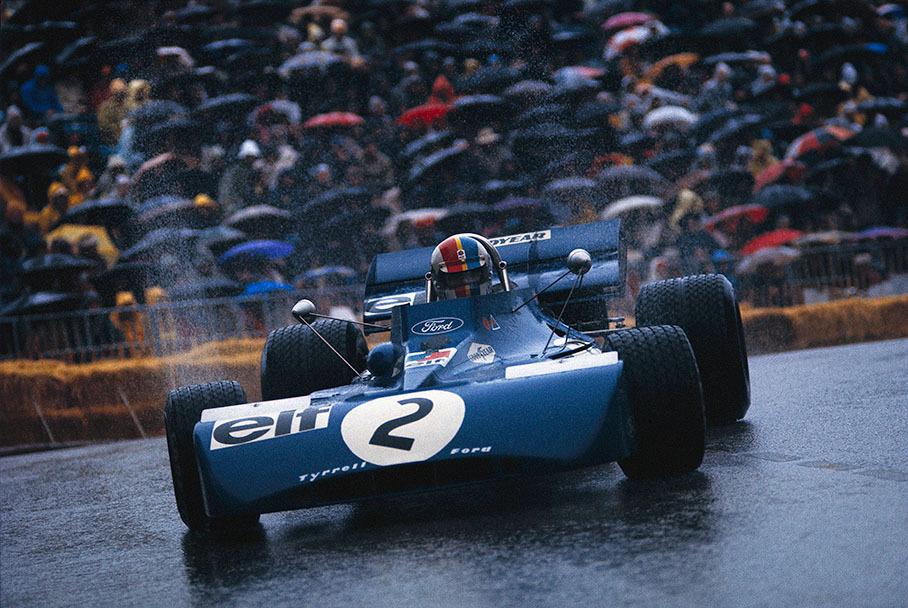
Francois Cevert on a rainy track at Monte Carlo on May 14, 1972. Photo by Rainer Schlegelmilch.
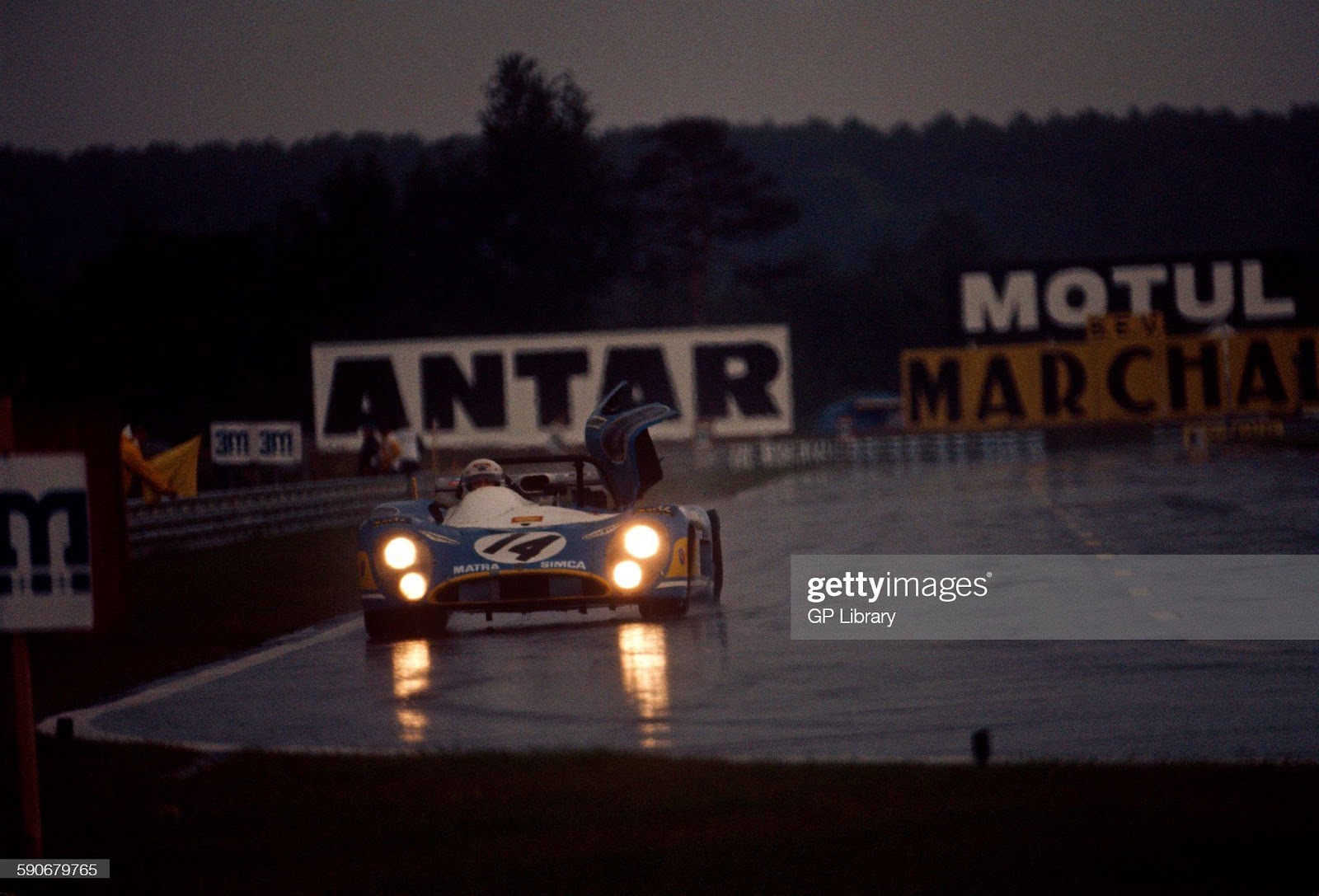
14 Francois Cevert and Howden Ganley, Matra Simca, entering the Ford chicane at Le Mans on 11 June 1972. Photo by GPLibrary/Universal Images Group via Getty Images.
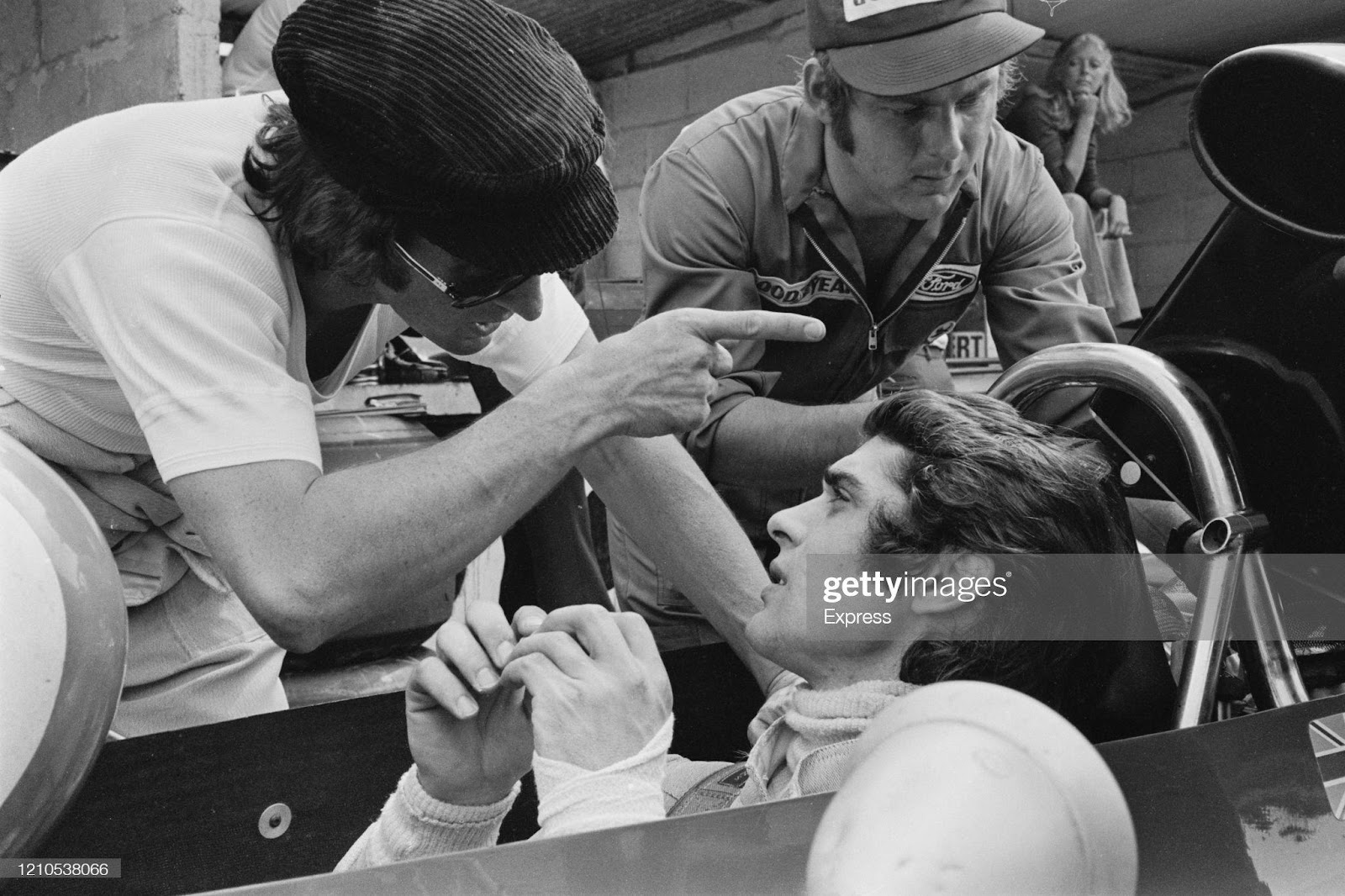
Jackie Stewart in conversation with his Tyrrell teammate Francois Cevert during practice for the 1972 British Grand Prix at the Brands Hatch motor racing circuit in West Kingsdown, Kent, England, 12th July 1972. Photo by Blackman/Daily Express/Hulton Archive/Getty Images.
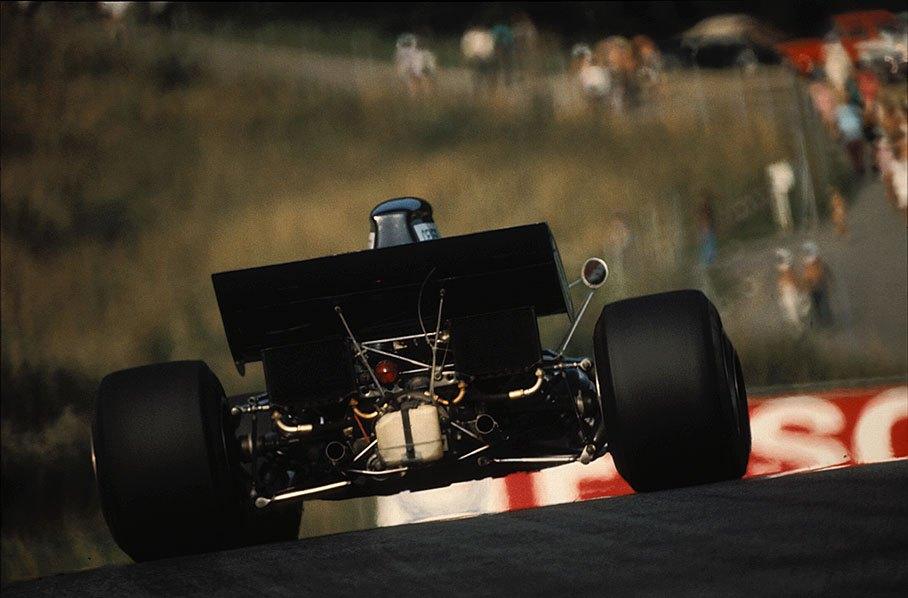
Francois Cevert at Zeltweg, Austria, on 13 August, 1972. Photo by Rainer Schlegelmilch.
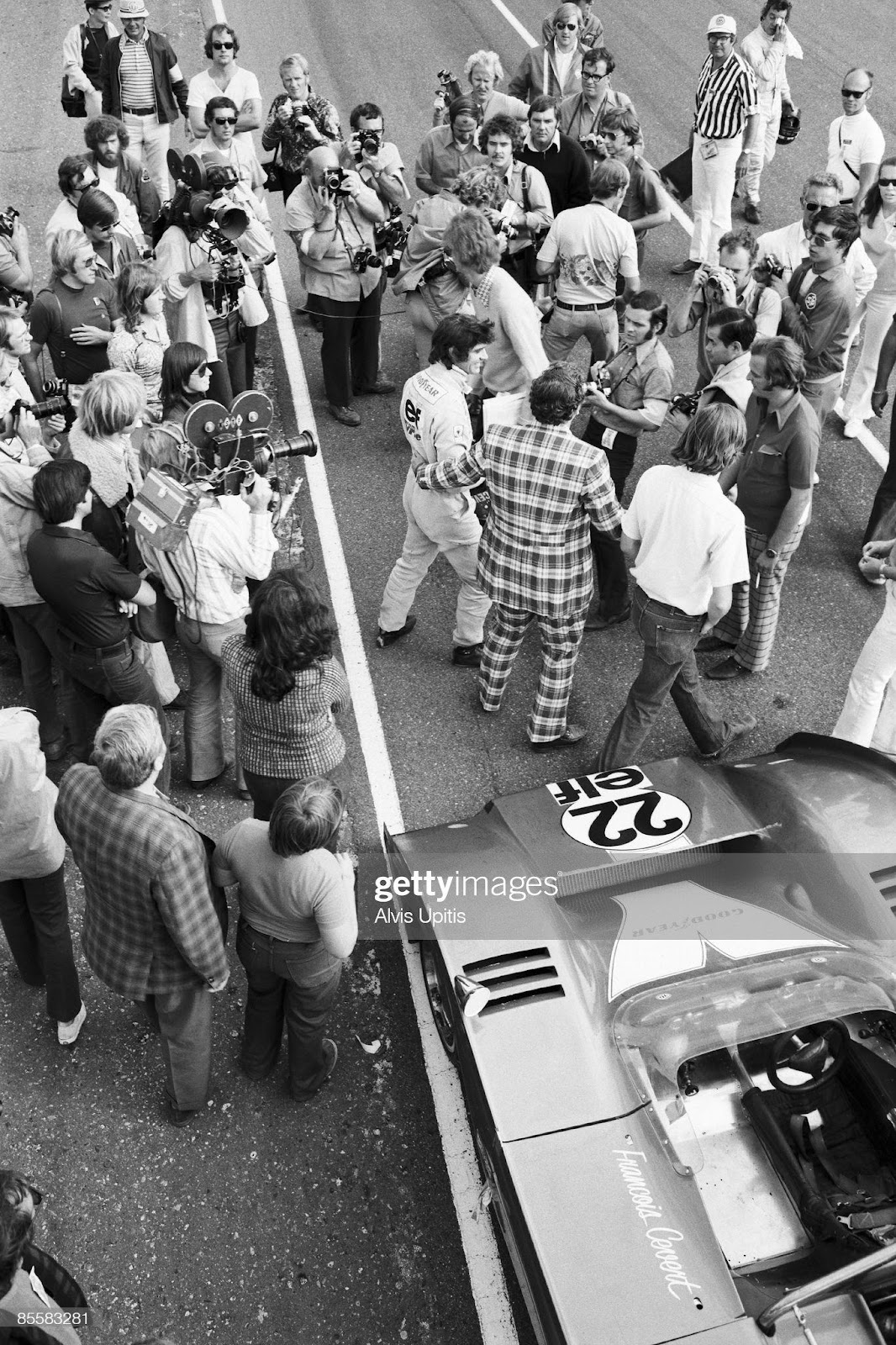
Francois Cevert is escorted from his race winning McLaren M8F after leader George Follmer ran out of gas on the last lap of the Minneapolis Tribune Grand Prix at Donnybrooke International Raceway, Round 6 of the Can Am Series held September 17, 1972 at Brainerd, Minnesota. Photo by Alvis Upitis/Getty Images.
Anyway, after their success that year, 1972 was ... not the best. Jackie finished 2nd in the championship and François finished 6th, which wasn't terrible, but Jackie went through three different car styles and there were retirements and non-classifications on François's part. A bright side?
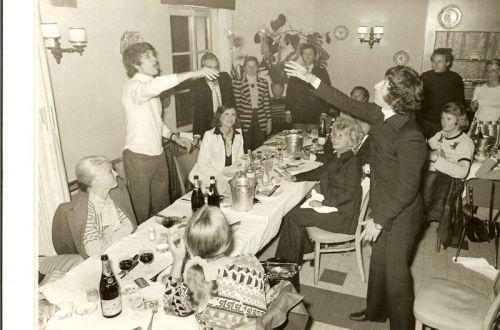
Francois Cevert and Howden Ganley celebrating after their 2nd place in Le Mans in 1972. The ladies seem to find it quite amusing.
François came second with Matra-Simca at Le Mans! We are not 100% sure if these pictures are from Le Mans, but here are pictures of Jackie visiting François while François was taking part in.
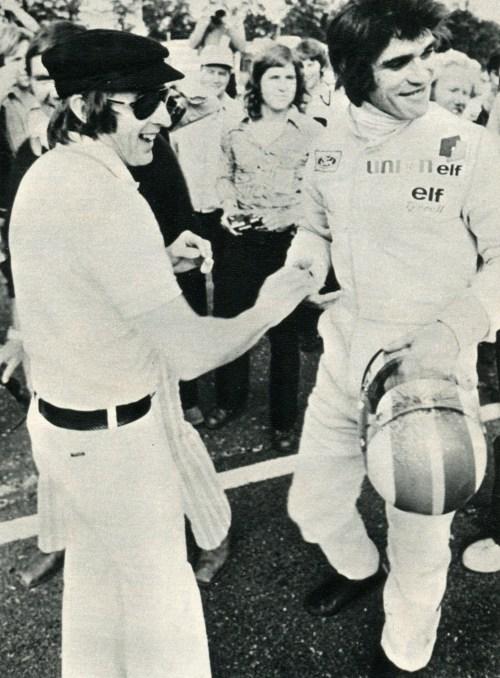
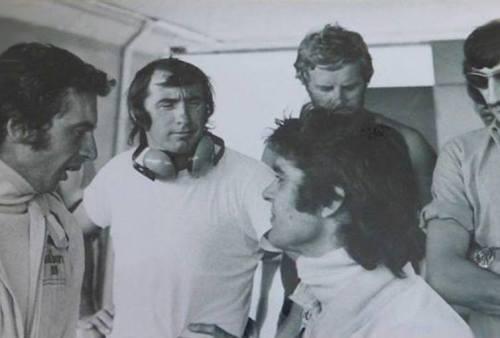
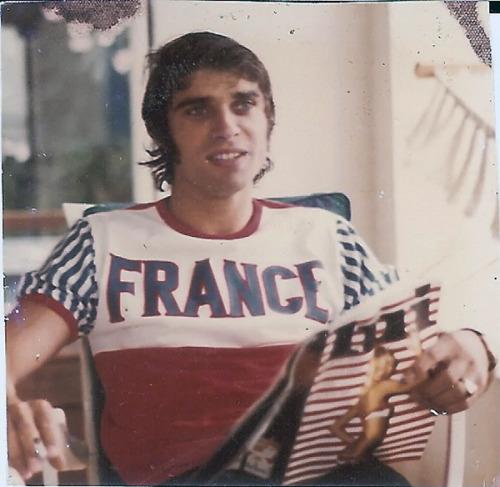
We like to think this picture of Francois Cevert was taken on a Sunday morning. He is on holiday in 1973. His flat hair and uncharacteristic attire (he normally wore a shirt or a polo neck rather than a t-shirt) make him look very young here. Source: autonewsinfo.com.
But 1973 had a lot of promise for them. They were both on podium for the first race of the season!
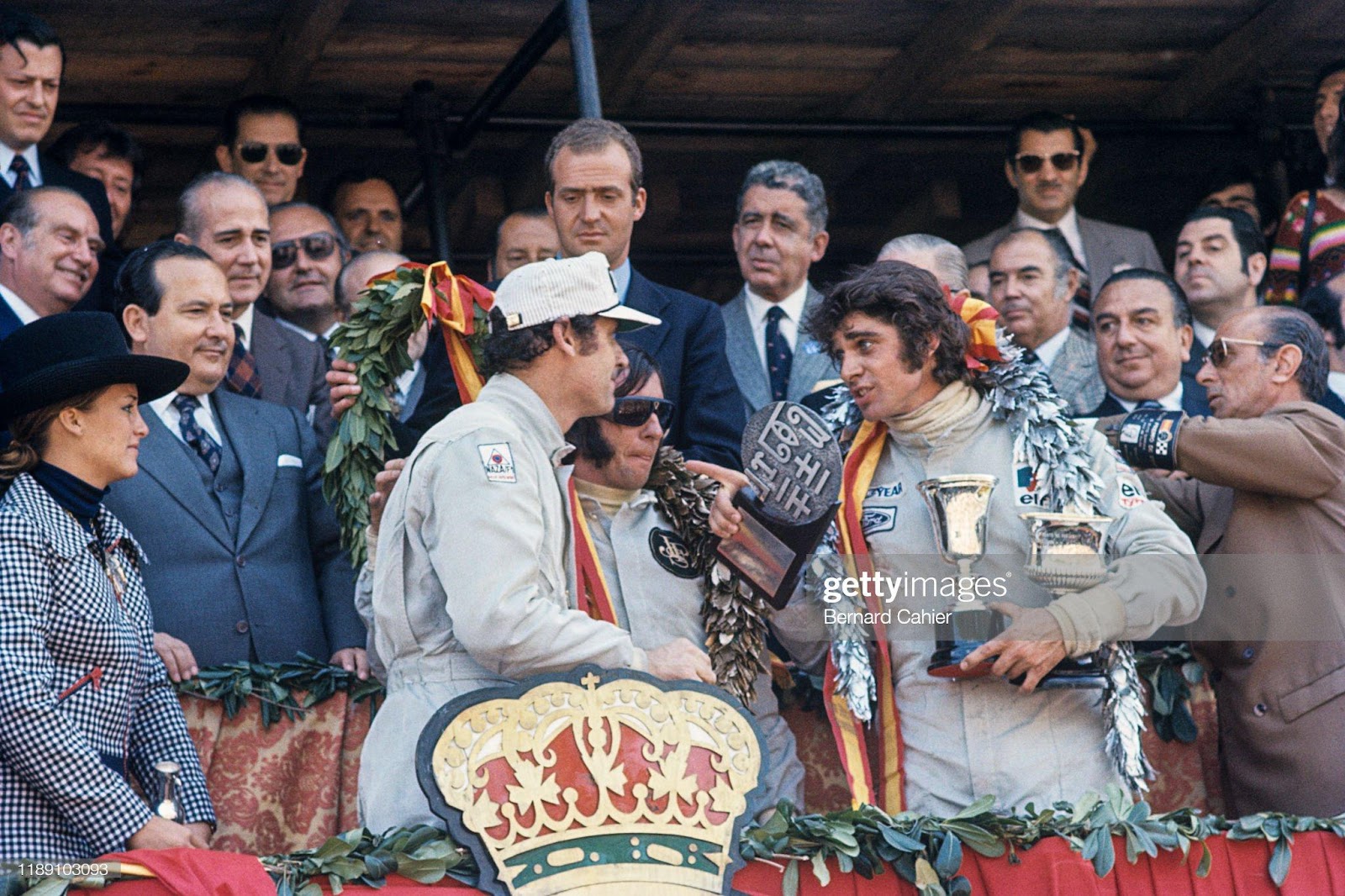
Emerson Fittipaldi, George Follmer, François Cevert, Juan Carlos King of Spain, Grand Prix of Spain, Montjuic circuit, Barcelona, 29 April 1973. Photo by Bernard Cahier/Getty Images.
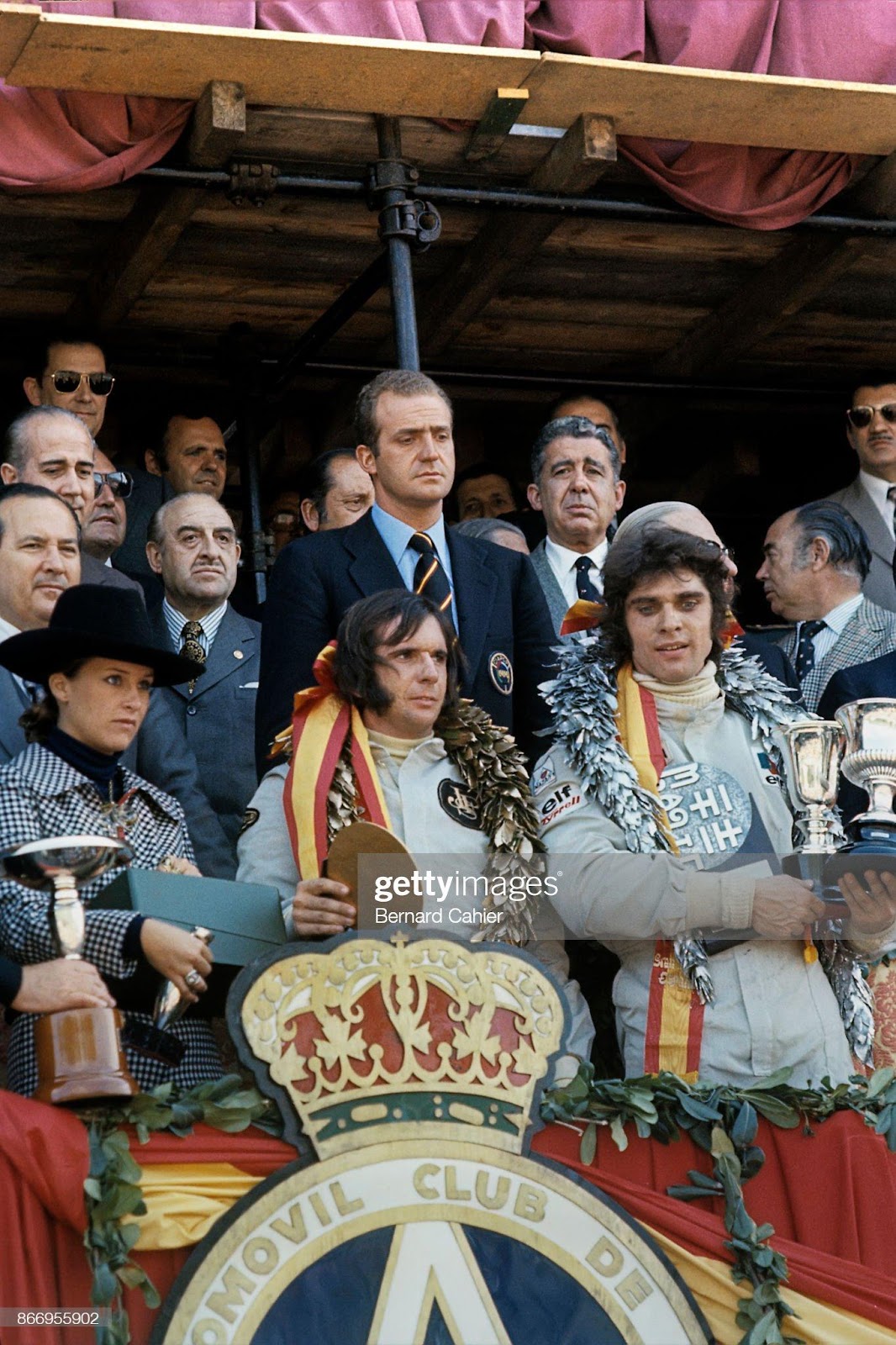
Maria Helena Fittipaldi, Juan-Carlos King of Spain, Emerson Fittipaldi, François Cevert, Grand Prix of Spain, Montjuic circuit, Barcelona, 29 April 1973. Photo by Bernard Cahier/Getty Images.
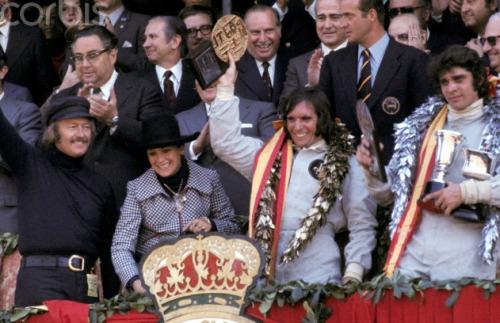
Colin Chapman, Maria Helena and Emerson Fittipaldi, Francois Cevert, Grand Prix of Spain, Montjuic circuit, April 29, 1973.
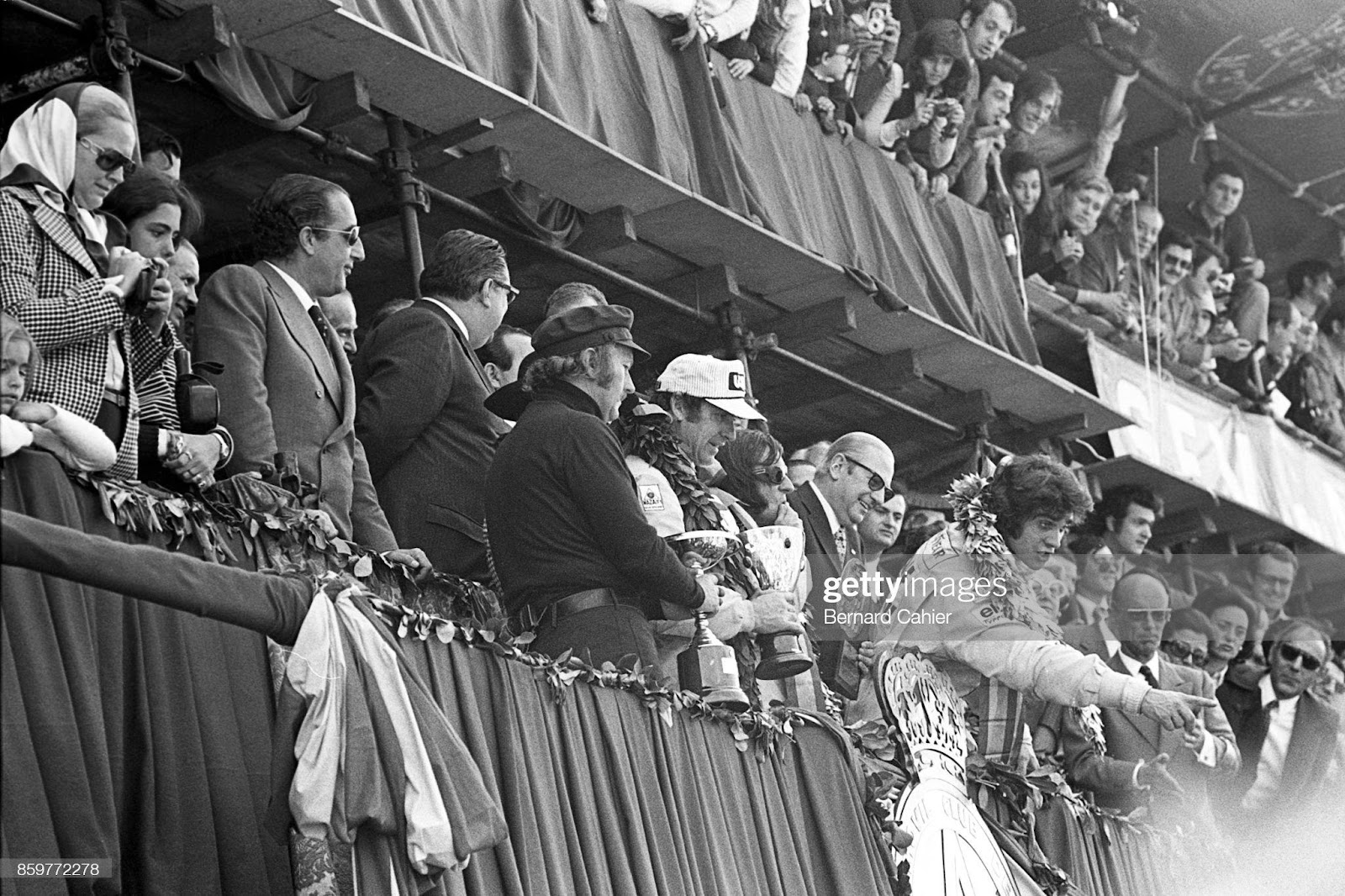
Colin Chapman, George Follmer, Emerson Fittipaldi, Francois Cevert, Grand Prix of Spain, Montjuic circuit, April 29, 1973. Photo by Bernard Cahier/Getty Images.
And it seemed to go pretty smoothly from there. There were a few hiccups along the way but, overall, the Tyrrell Twins were showing a pretty consistent performance and there were lots of shared podiums and, generally, beautiful moments. We think one of the most interesting aspects of that season was Monza, though Jackie had an issue with his engine right before the race and, while the team had a brand new engine, it was completely untested and they felt unsafe running it. Instead, they decided to equip Jackie's car with the only other engine they had on hand: François's old one from Austria and François went nuts. Since he considered the old engine a complete throwaway, he actually marched right up to Ken Tyrrell and let him know that he thought they were sabotaging Jackie's chances of winning the championship that afternoon.
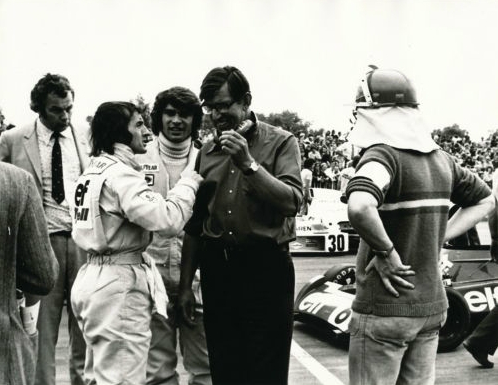
Surprisingly, though, that didn't happen even after an early puncture and a pit-stop that cost him half a lap. Jackie stormed his way up the grid, setting one fastest lap after another until eventually he passed François for fourth place, securing the points he needed to become world champion (apparently, François was pretty demoralized by the fact that Jackie had managed to take an engine that François had written off as ineffective and make it work with such an awesome payoff; any negative emotions didn't last long, though, because François was happier for Jackie than anything else).
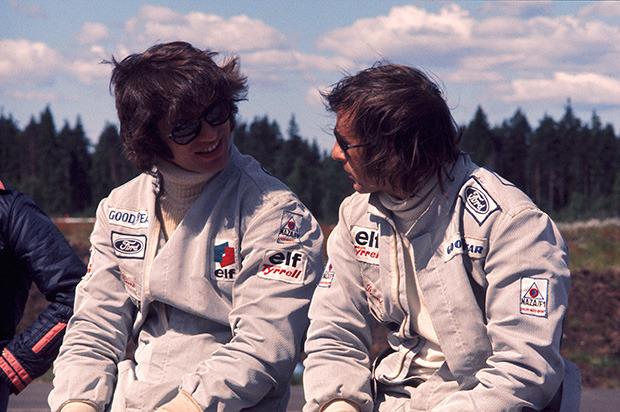
And that's something that happened more than once. At Kyalami, that same year, Jackie completely destroyed his car in a practice session and there was no second car available. So, François and Jackie traded cars; Jackie took François's out immediately in order to get a feel for the circuit and find the perfect setup and François stayed behind until they repaired Jackie's wrecked car. Even after starting at the absolute back of the grid, Jackie managed to win the race; François's results weren't classified.
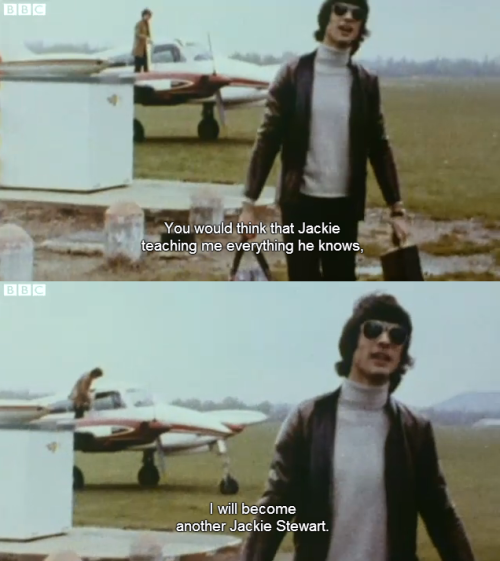
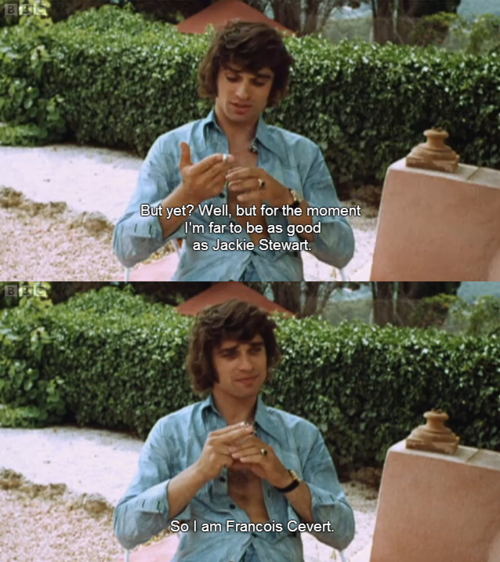
But now we deviate to a special topic, an event that is honestly so important that it deserves an entire section all to itself. That event is the Great Bermuda Vacation of 1973.
Some setup: Mosport, Canada. Jody Scheckter was pretty new to the scene at that time and had a bit of a ... reputation, if you will. A bit like Pastor Maldonado he was prone to shunts, although it could be argued that he was just a new driver who still hadn't learned. During the race, the weather turned to shit and, after some pitlane chaos, Jody wound up driving François off the road. The Frenchman hit a barrier and absolutely destroyed his car. We feel like nothing quite compares to the way this quote puts it: Cevert twisted his foot and was shaken up but, even so, he limped up to Scheckter and started a boxing match. The hot-tempered Frenchman disregarded the fact that Scheckter hadn’t taken off his helmet yet and so he twisted his wrist too.
So there he is. He's got no car, three bruised limbs and most definitely a sullen attitude and on the second to last race of the season.
“After the race, Helen and I didn’t know how badly hurt he’d been so, when they said he was in hospital we went there feeling a bit anxious. ‘Are you a member of the family?’, they said, which is never a good sign. I said, ‘no, but I’m his team-mate’ and they said OK. He was in room so-and-so. We went there but the room had been cleared and I thought, ‘oh Christ …’. I said to the nurse, ‘is everything all right with Mr Cevert?’ ‘Yes,’ she said, ‘he’s coming along well’. ‘Oh, great, where is he?’ ‘Out on the balcony,’ she said, ‘smoking …’. God, the relief we felt!" Jackie Stewart
So what does Jackie propose? “Why, François, why don't you accompany me and my wife on our vacation to Bermuda? We're going to see the Niagara Falls, drive down to New York, it'll be a lovely time!” François declined at first out of politeness, but the Stewarts persisted and, soon enough ...
“The three of us packed into a Ford Fairlane with me driving, Helen in the passenger seat and Francois behind and we drove up to Niagara Falls. It was an impressive sight, even if my young French teammate had insisted that I carry him from the car to the viewing point”.
'I don't want crutches,' he laughed. 'You carry me.'
'No way,' I replied, before being persuaded to put this grown man on my shoulders, as if he was Paul or Mark.’ Jackie Stewart
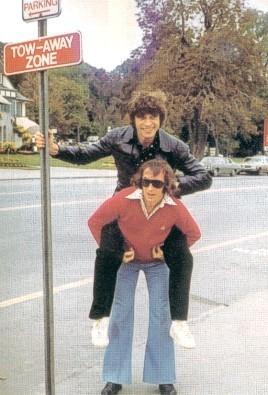
“In Bermuda we had a two-bedroom apartment and every night we’d go to the Ocean Reef Club and he would play the piano. The place was full of very old people, pretty dead! But, when he played, the whole place lit up. His pièce de résistance was Beethoven’s Pathetique. He wooed them all and then would go into some ragtime thing. Remarkable.” Jackie Stewart
This was also the time approaching Jackie's retirement, which he had kept on the down-low. It seems like François had picked up some of those vibes, realizing Jackie was reaching the end of his career but, after everything they'd shared with one another before, it seems like he was a little confused as to why Jackie wasn't saying anything. So, there was a lot of subtle probing going on in Bermuda.
“During that week he kept saying to Helen, 'is Jackie going to retire or not?’ And Helen, of course, did not know. He’d been asking me too and I kept saying, 'I haven’t made up my mind.’ I mean, if I didn’t tell Helen, I couldn’t tell him …”
François had kept telling me he was getting offers from Ferrari and so on and I said, 'well, that’s good but you don’t have to decide until the season’s over. I think you should stay with Ken.’ He said, 'well, Ferrari are saying if I don’t sign they’ll get someone else …’ I said, 'who are they going to get, who’s better than you? And next year’s Tyrrell’s going to be awful good …’ Jackie Stewart
Every day, Jackie will have to go through the same routine with Helen and Francois. It goes like this:
'This morning Helen and I have decided to grant you one more year. Unfortunately for you, of course, it means that I shall be World Champion. You'll have to face that. Of course I'm not ungrateful, so I won't let anyone suggest you are only a has-been. I've nothing against a little of my success spilling over on you. I'll manage to puff you up a bit for old time's sake.'
Or else as a variation: 'Helen and I have just decided that you are retiring. It's obvious that I am a lot faster than you are and we can't bear to watch you going downhill. It's for your own good that we have made this decision.'
'Okay, Maestro,' is all Jackie ever answers, chuckling to himself.
Basically, the situation was: Jackie didn't want to tell Helen that he was planning on retiring at the end of the season because, with all of the dangers of motorsport, he thought it would be difficult for her to go to a race knowing Jackie planned to quit but also that there was a good chance he could die before that happened. If he didn't tell his wife, then it seemed wrong to tell his teammate. There were a grand total of three people who knew about Jackie's plans.
But he planned to hand Tyrrell over to François. Knowing he was going to retire, Jackie's instruction changed from just trying to teach François the best ways to drive to literally grooming him to take the place of a world champion, sharing everything he could think of to try to prepare the man for his future as number 1 driver. At the same time, François was reaching that point where he wanted to continue under Jackie's tutelage because he enjoyed working with him while also wanting to branch out and really show his skill. There were no team orders, but François had a hard time not deferring to Jackie out of genuine respect for him.
“The car in which Jackie won his last championship, in ‘73, was 005 and he and Francois finished 1-2 on several occasions, including at the Nurburgring, the old Nürburgring. Now you’ve heard how much Jackie helped François, he couldn’t have done more for him, ok? Well, at that race at the ‘Ring’, they went round together, start to finish, first and second and, afterwards, Jackie said to me, ‘François could have passed me any time he liked …’” Ken Tyrrell
Ferrari had started tailing François, obviously seeing his talent, but Jackie obviously didn't want to leave Ken without both of his drivers. But it's kind of thought that François started wielding the Ferrari threat to try to get Jackie to tell him what he was hypothesizing: that Jackie was retiring.
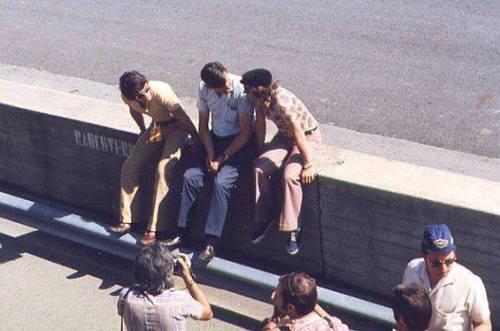
There's no relation of this picture to the story but you need it.
Nothing much came out into the open during the Bermuda vacation. Jackie revealed nothing. After a relaxing few weeks, François, Jackie and Helen packed up and headed up to New York for the US GP at Watkins Glen, which was to be Jackie's 100th and last Grand Prix.
The next day, from Niagara Falls which he visited leaning on Jackie Stewart's shoulder, Cevert rang up his mother.
Francois said, "you know, maman, I can't believe I got out scot free from such an accident. Well, I know it now. Nothing more can happen to me in a Tyrrell.”
Cevert also had given thought to Jackie Stewart’s dilemma. Earlier in the week he had said, “Jackie faces two options, neither of them very appealing. He can quit racing and save his life, or he can quit racing and lose what his life is about. There are two kinds of death in this sport. Perhaps in any sport. There is physical death, which probably does not hurt so much and there is a kind of psychic death, which I’m certain hurts quite a little bit. If Jackie retires, what can he do that will take the place of this ...”. And he gestured at the dining room overlooking Seneca Lake, at the autumn colors and the strangely slanted land, at his fellow drivers — oh, so dashing and trim and alive, in love with the earth and with its uncle, death. “Yet he could retire into a life of commerce,” Cevert continued. “He has an affection for it and perhaps it would satisfy him. I cannot predict what he will do but, whatever it is, it will be interesting.”
In his short life Cevert had been the most glamorous of drivers and one of the most talented. He was handsome, almost pretty, but he had the best of the Gallic traits — courage, skill, humor. At breakfast on the morning of his death he had been amused by a caption accompanying his photograph in a local newspaper that described him as “intense and waiting.” He smiled over his tea. “Aren’t we all?”, he asked.
It was an interesting weekend, one that should have held promise for them. It was Jackie's 100th and final race. It was the circuit where François had won his first GP. Ken Tyrrell had actually signed Jody Scheckter to the team for the following season at the Seneca Lodge on Friday. And, in addition, there was talk of an interesting send-off on the table. Ken had proposed that, should Jackie be leading the race with François on his tail, he should let François through so that the man could win the race. It would be something of a symbolic passing of the reins: Jackie Stewart hands over his position to François Cevert, both during his final race but also in the team in general. Jackie was skeptical at first, but he soon warmed to the idea.
In the beginning, François and Jackie are discussing a specific part of the track known as the Esses. It was one of the trickier bits of the circuit and the two were at odds about it. Jackie preferred to use fourth gear, which would make the car a bit more steady and easy to control; the Tyrrell was always jumpy at that section of the track just due to the build of the car, so he counteracted that in the higher gear, but it also required a perfect line (if he went into it wrong, he'd suffer a time penalty). François insisted that third gear was better because, although the car was a lot more nervous, he was at the top of his engine's power range and had a little more room to rectify a bad line.
François was at a point in his career where he was ready to prove himself. He and Jackie discussed the Esses and François still felt his was the better choice. So, on Saturday, François winked to Helen Stewart as he left the pitlane in a heated battle for pole position with Ronnie Peterson and he didn't come back.
“The more I drive, the more I realize that [death] could happen to me; but, in fact, it would take more courage for me to give up racing than it does to go on. I am very attached to life, I am very happy to be alive and really believe that I am one of the happiest men on earth; but I don't think I can give up racing, because it is what I love above everything else. I have chosen to do what I like to do and to risk death. If I stopped racing I would not really have a problem taking on another job. I would even try to put everything I have got into it, for I am an enthusiast by nature; and the day I decide to stop racing because I am no longer fast enough, or indeed for any other reason, I think I shall be able to put my enthusiasm into something else. But, as long as I am able to race, I cannot see myself doing anything else.” Francois Cevert
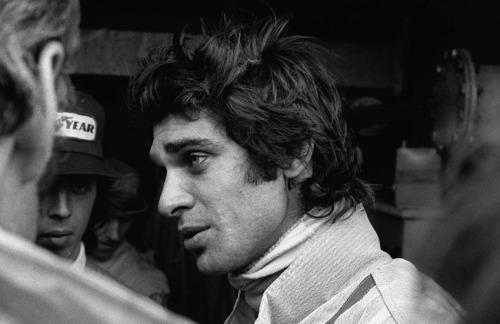
There's a lot of quotes about this situation and all of them are painful so we are not going to stick them in here, but we think it really stands as a testament to François's popularity and likability that so many people were as affected as they were. Jacky Ickx, a man not known for deep displays of emotion, came back to the pits in tears. Ronnie Peterson was one of François's closest friends and was in a similar state. Emerson Fittipaldi had to leave the circuit for a bit and actually contemplated retirement. Jody Scheckter was the first driver at the scene of the accident and he's said that, seeing it, made him determined to clean up his act and keep out of accidents.
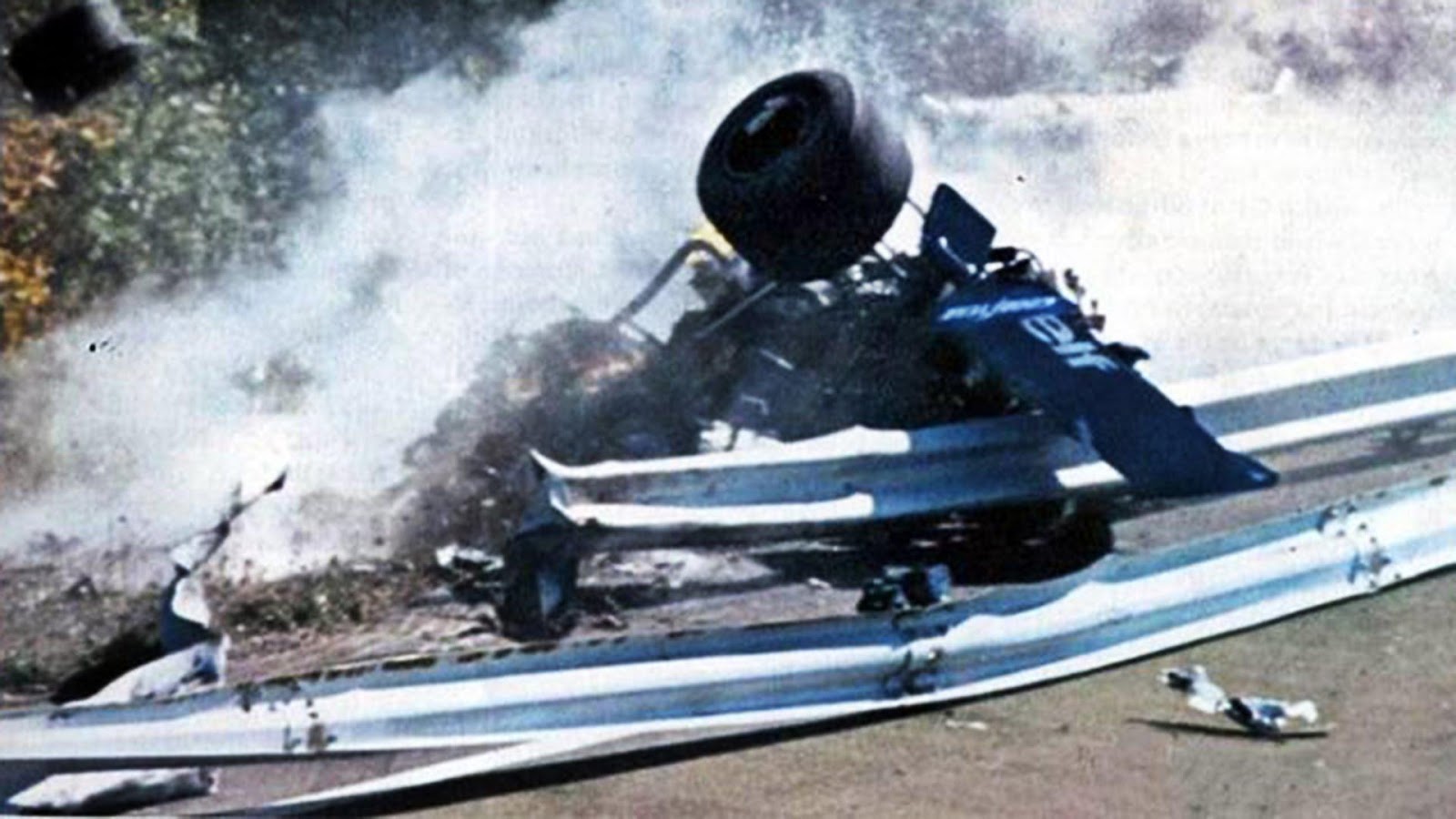
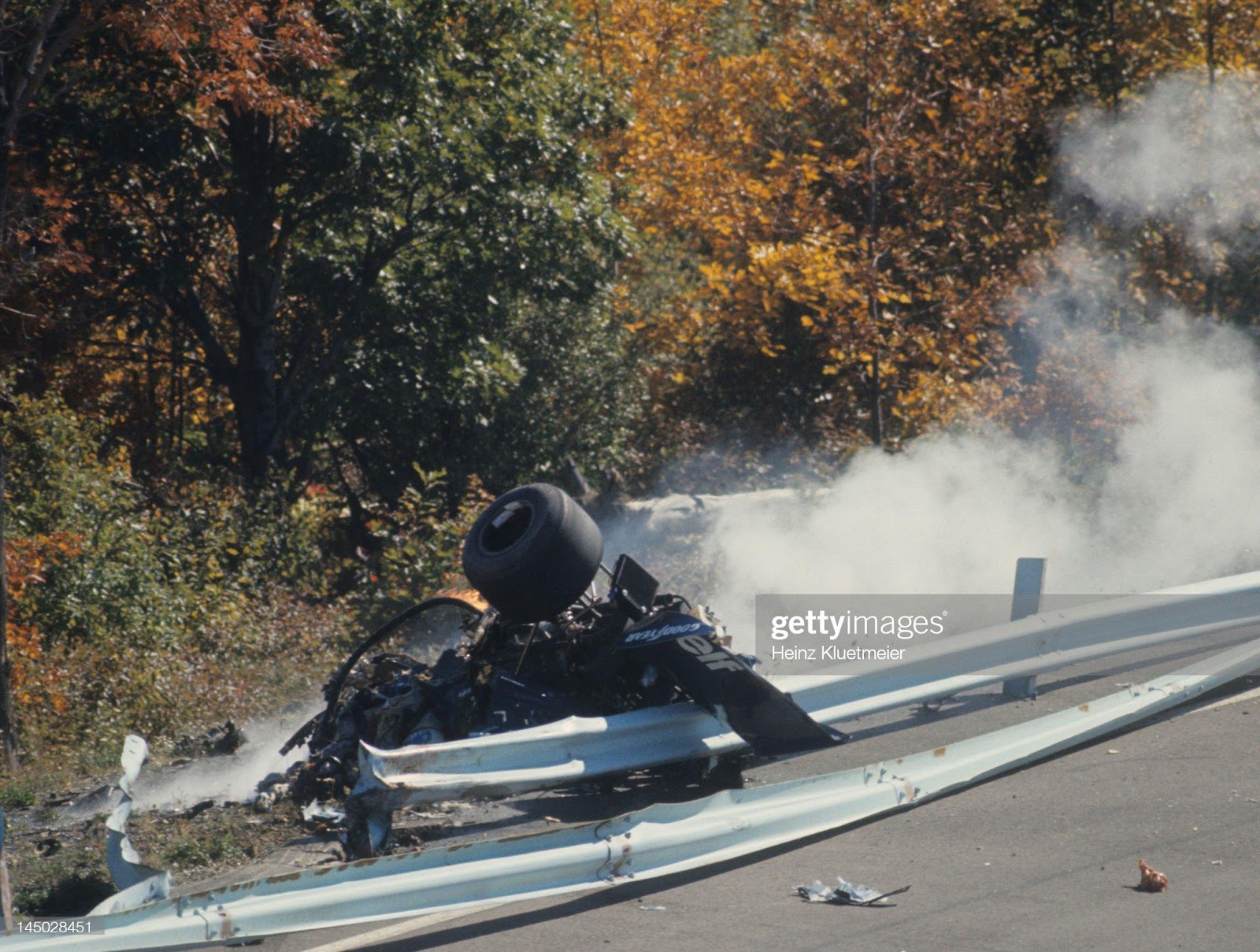
Overall view of guardrail collision that killed Francois Cevert (6) during Saturday morning trials session at Watkins Glen Grand Prix Race Course. Photo by Heinz Kluetmeier /Sports Illustrated via Getty Images.
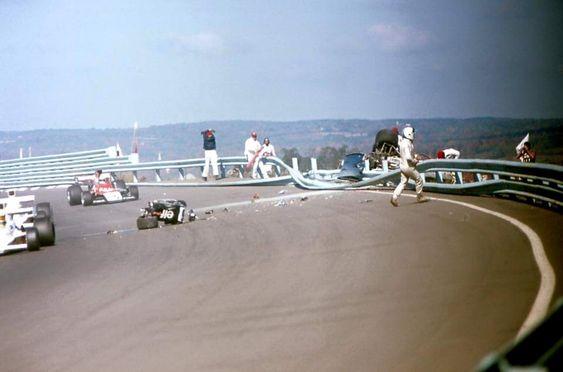
These images were taken by Ralph Janelli in the moments after Francois Cevért's fatal accident on October 6, 1973. And this angle is really unprecedented because, until now, we didn't even know that the accident had ripped parts of the Tyrrell. And see how far certain wreckage has ended up. There, some of the pilots that circulated in the area can be identified. In the first photo, we have Mike Hailwood's Surtees looking at the wreckage of car number 6.
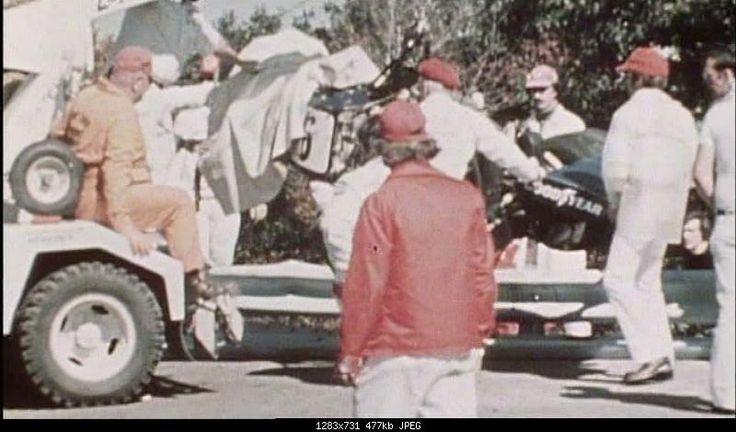
And Jackie. Even today, you can tell how deeply he was hurt by this: ‘I was angry, very angry about the whole sport, the whole thing. One of my regrets is that I didn’t stay with François. I don’t think anybody dies immediately. Okay, that may seem a ridiculous thing when the ferocity of the accident is on such a scale, but I just felt as if I should have taken his helmet off, or done something. Anything. Just stayed there a bit longer. To this day, I regret not doing that.’
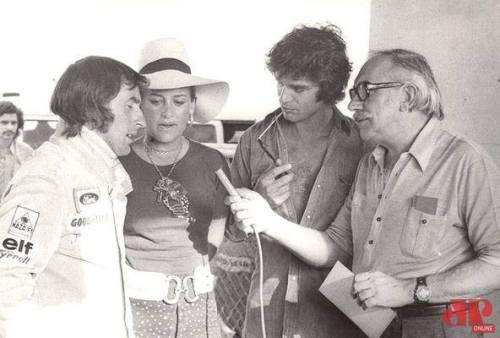
“It was a motoring accident, not mechanical failure. I had sworn I would never get close to another driver again, not after Jochen, but I cannot control my affections as well as I can a car. It hurt, it hurt so very much.”
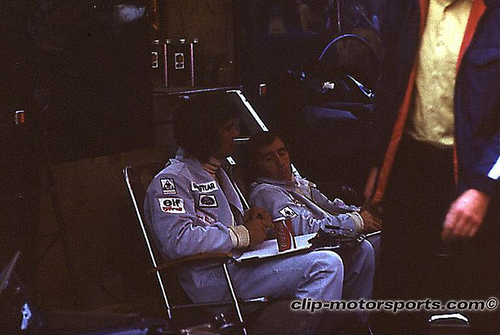
Nigel Roebuck on François: “I did not know Cevert terribly well, but I remember him as a man of immense charm and, upon those close to him, I have found he made an indelible impression. “Ah, François …”. Jackie Stewart will smile at the mention of someone he came to regard as team mate, brother, son. For the entire Tyrrell family too, he always had a special place.”
Cevert was a gentleman in the truest sense. So often folk who seem to have everything are all too aware of it, to the detriment of their personality. François had the sort of gypsy good looks to make ladies gnaw at the backs of their hands, yet none of the accompanying arrogance which invariably makes such people insufferable. He took a simple delight in life and his face reflected it.
“He was a classically-trained pianist,” Stewart recalled “and you never saw a man so serene as François when he was playing Beethoven or Chopin or Mozart. He had a real passion for music, but an even stronger one for racing. What he wanted most from life was to be France’s first World Champion and I’ve never doubted he would have done it.“
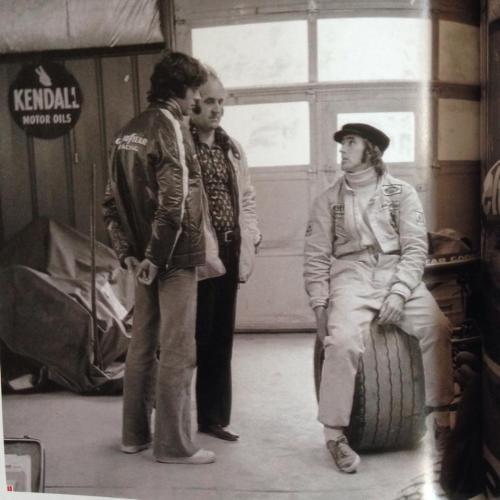
“By 1973, Francois was very quick. I think he could have won the World Championship in ‘74, because that car was better than in '73. And I would have been there, because I’d have gone to all the races with him. His father and mother were lovely people and his sister and brothers too. I send flowers to his grave every year and his mother wrote me a letter every year”.
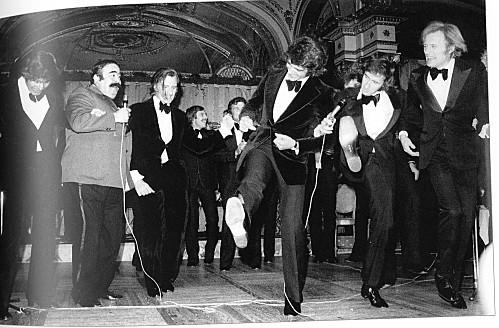
“We had one of the great human relationships between two racing drivers on the same team. And, you know, I was supposed to be the master and he was supposed to be the pupil. And I would have liked nothing in the world more than for him to take over from where I left off and be the world champion. That would have been the perfect end to a perfect story and a perfect relationship”.
“As it was, it was the end of my racing career and it was a sour way to leave the sport. But one in which the sport told me that nobody is big enough to think they can do everything when they want to do it and complete whatever little goals they have set in life. And it was maybe just a question of God saying ‘never take things for granted, this is the down side’. And it was a very profound way of doing it, it couldn’t have been more painful or with more clarity”.
“But … he’s still often with me”.
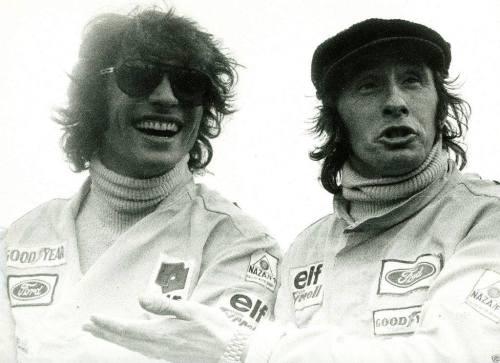
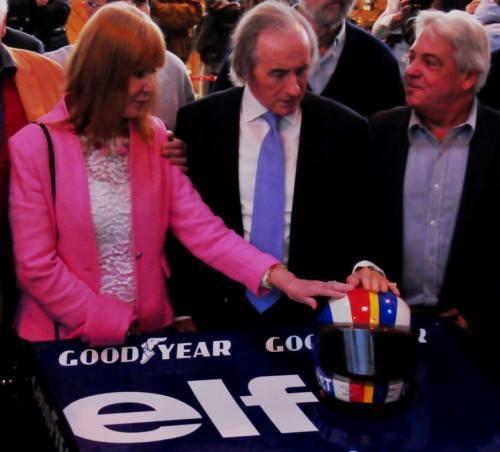
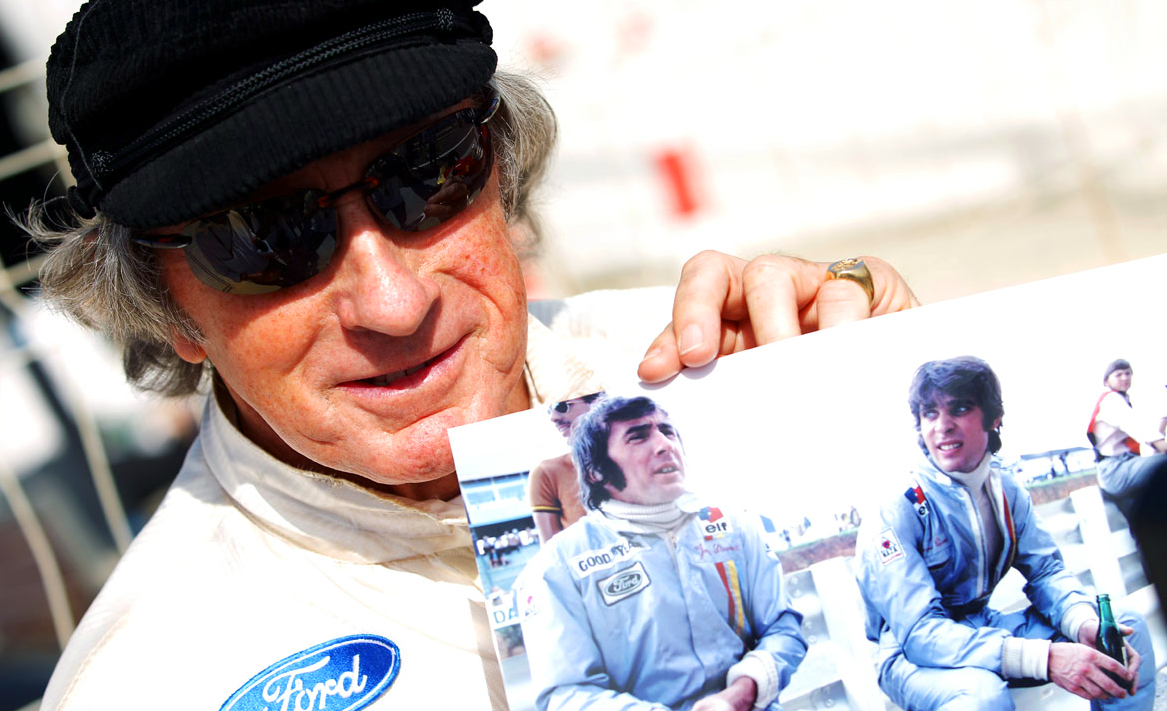
Jackie went back out on track that day to try to find out what happened to François and deduced it was simply just a driver error regarding the gear the Frenchman took the Esses in. After that, he drove the car back to the pits and retired out of respect for François. The Tyrrell team withdrew entirely from the race. Jackie never completed his 100th Grand Prix.
Here's Jackie blessing François's coffin at his funeral:
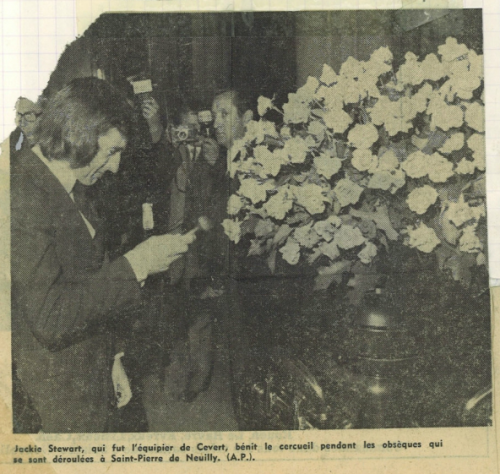
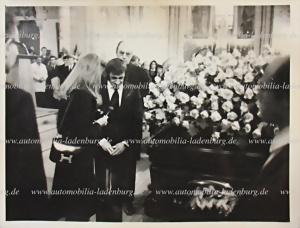
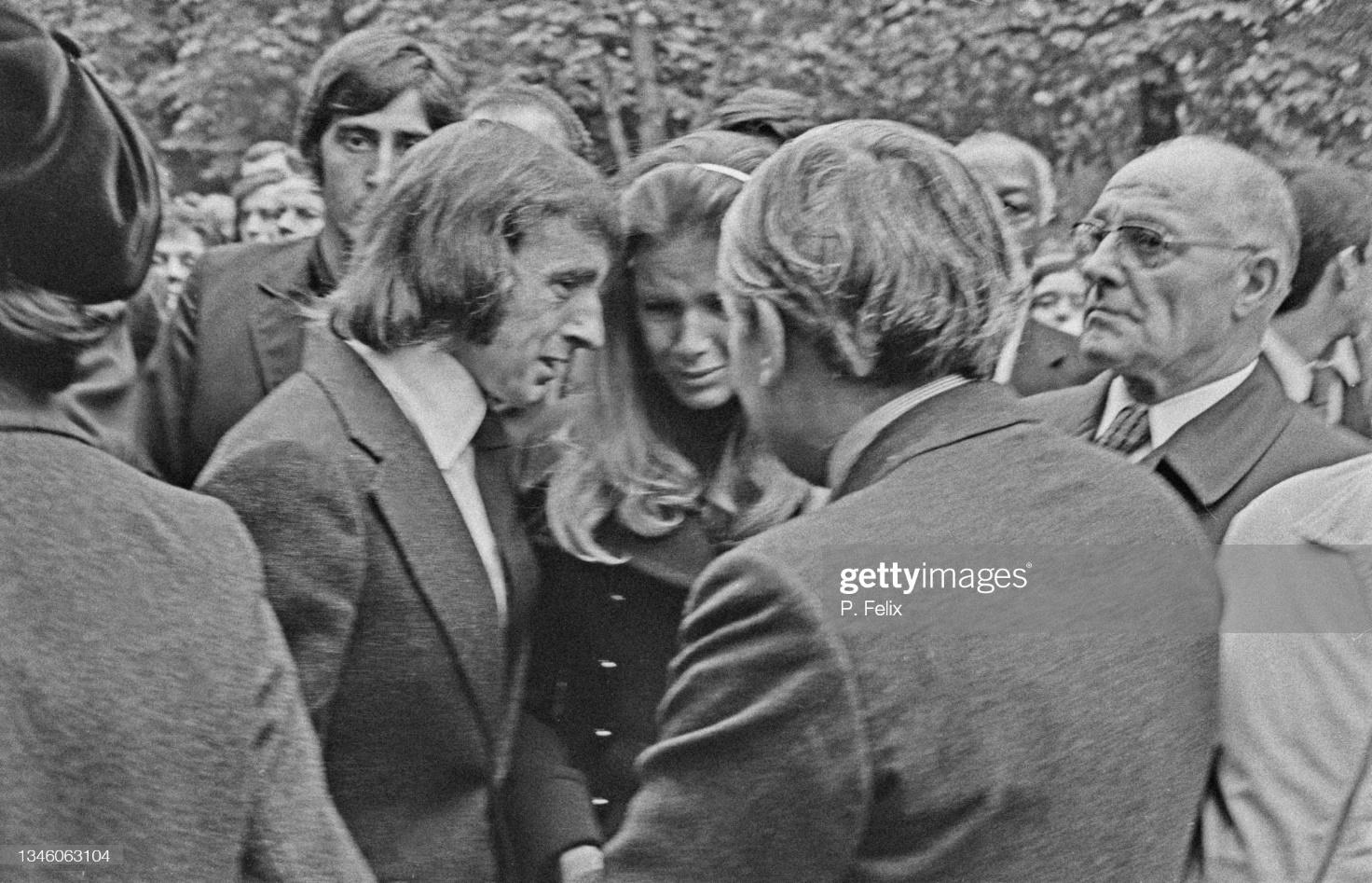
Jackie Stewart and his wife Helen at the funeral of François Cevert at St Pierre de Neuilly Church in Paris, France, 11th October 1973. Photo by P. Felix/Express/Hulton Archive/Getty Images.
A few years earlier, during a Memorial Service to Roby Weber, who was killed in practice at Le Mans, Francois had whispered to his girlfriend, 'I would like to have a funeral as beautiful as this. Promise me you will do everything you can to make sure I get it.' The young woman had only been able to shrug her shoulders. Francois was then silent for a few moments and added, 'I would like them to play the Sonata at the end.'
On October 11th, 1973, in the Church of St. Peter, Neuilly, Beethoven's Pathétique Sonata was played once more in honor of Francois Cevert.
One of the most curious things about François is the level of myth surrounding him and I think one of the biggest stories is the one with the clairvoyant. Nanou, François's girlfriend, had gone to a clairvoyant seven years prior to meeting François and felt that this woman had predicted their meeting. In 1966 Nanou returned, interested to see what waited in the future for the two of them, only to learn that François would become a great success, but that his success would tear them apart; after telling a skeptical François, the Frenchman went to meet this clairvoyant himself, without Nanou. The clairvoyant didn't know he was the man whose fate she had predicted and proceeded to add onto her prophecy: François will be a huge success, but that he wouldn't see his 30th birthday.
François had laughed it off, saying it was no problem, by then he would be world champion. His sister Jacqueline has confirmed the story as being true but, whether or not you're still skeptical, you can't really deny the fact that François passed away on the last race before his 30th birthday.
Also:
“There was a fine restaurant in the hotel and every evening we dressed for dinner in a collar and tie. The atmosphere was wonderful, the food was excellent and, while coffee was served, François would get up and walk across the dance floor to a large grand piano, where he would sit down and play Beethoven’s Piano Sonata n. 8 in C Minor, commonly known as Pathétique. It was his favourite piece of music and, as his fingers danced, I recall looking around and seeing how everybody, particularly the women, looked completely enchanted …”
“Just before Christmas that year we were shopping in the local town when our five year old son Mark decided he wanted to buy us a Christmas present, he asked if he could go into a record shop. Helen waited outside, our young son walked in and hardly tall enough to reach the shelves where the records were displayed he eventually picked out an album at random because he liked the glossy cover, he took it to the counter, had it gift wrapped and paid with the money we had given him. François had been extremely close to Helen and he once told her that, if anything ever happened to him, wherever he was, he would make sure that somehow he would send us a message or some kind of sign to let us know he was alright. Imagine then, how we felt when, on Christmas morning, just eleven weeks after his accident, Helen and I opened the present from Mark, something chosen completely at random by a five year old child and discovered it was a record of Beethoven’s Piano Sonata n. 8 in C Minor … commonly known as Pathétique”. Jackie Stewart
The urge to learn everything showed itself in the most extraordinary way. 'Often, while Francois was getting ready for a race,' Nanou relates, 'I would sit knitting on a chair or on the bed. One evening he came and sat next to me demanding to be shown how it was done. It was not so very long before he had mastered the secrets of moss-stitch, ribbing and stocking stitch.'
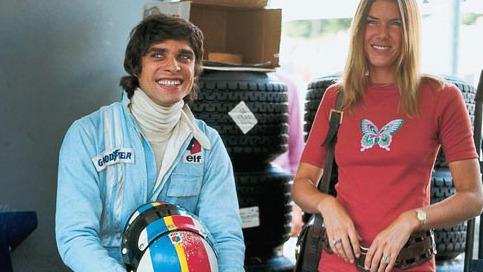
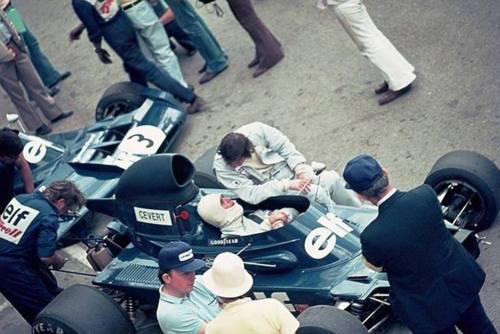
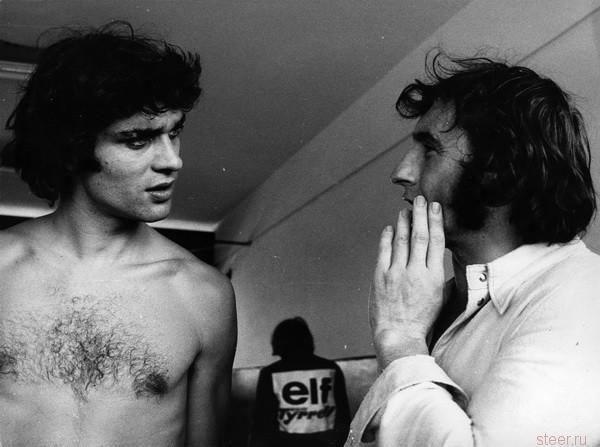
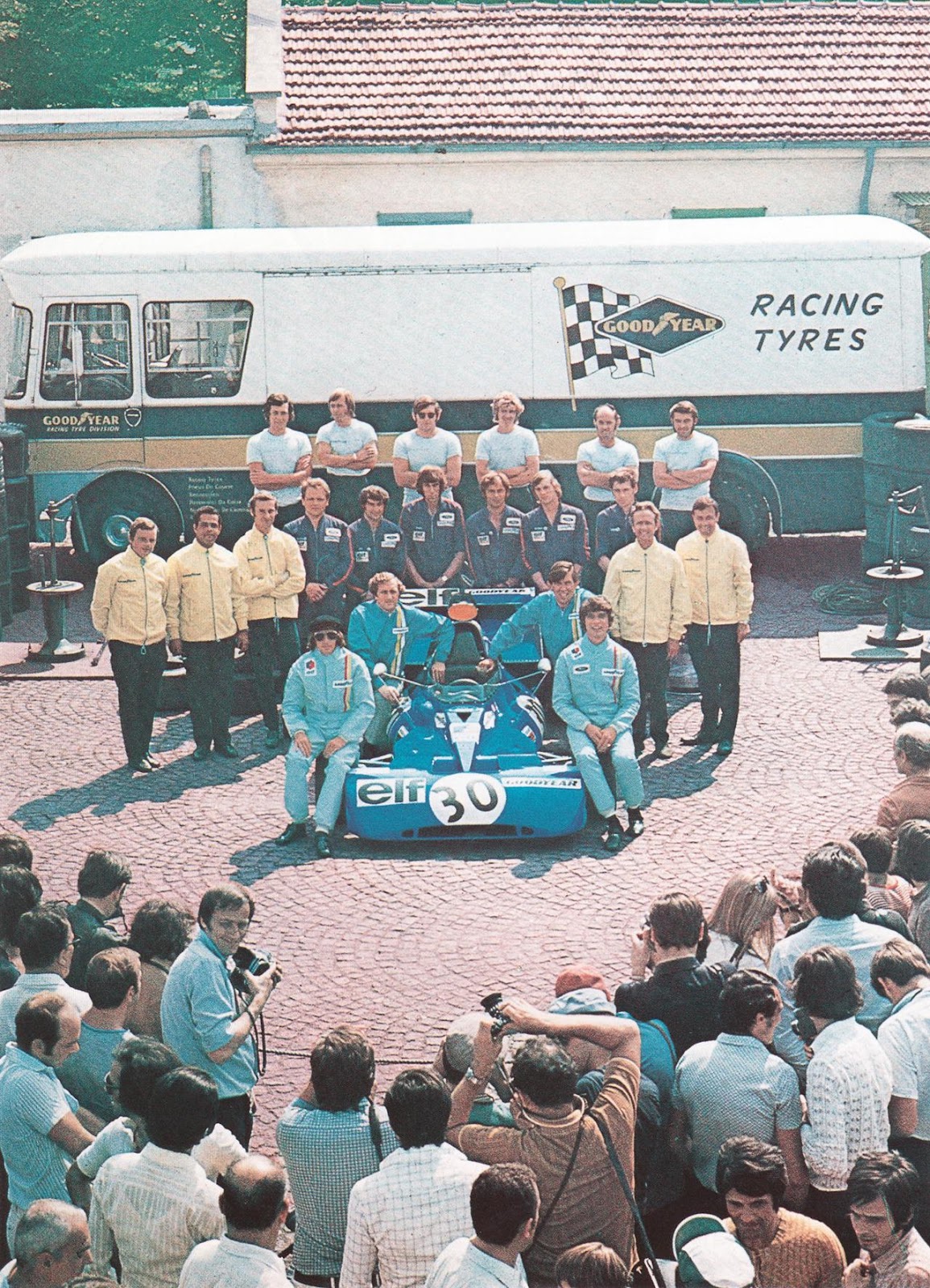
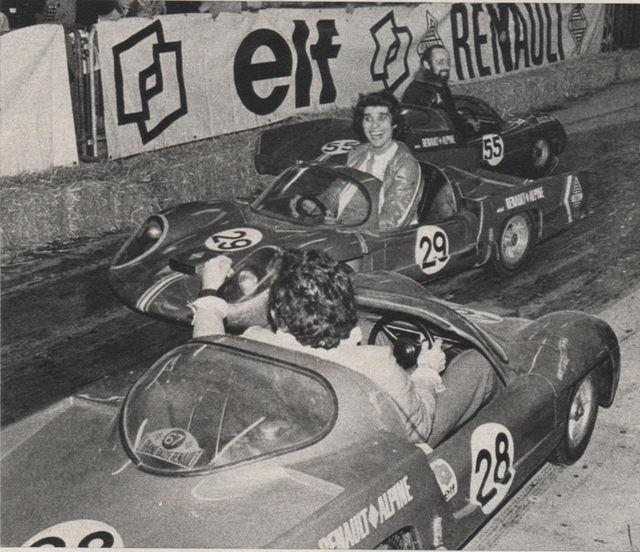
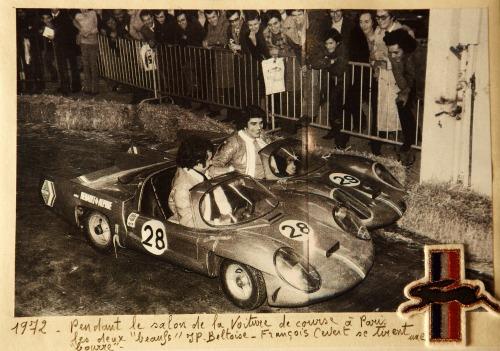
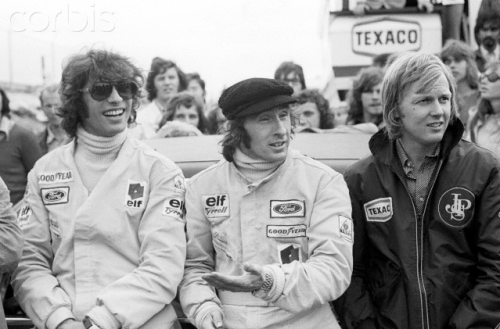
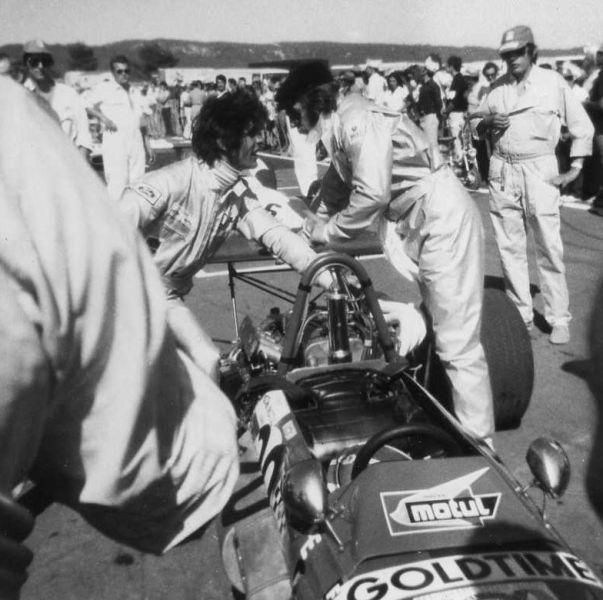
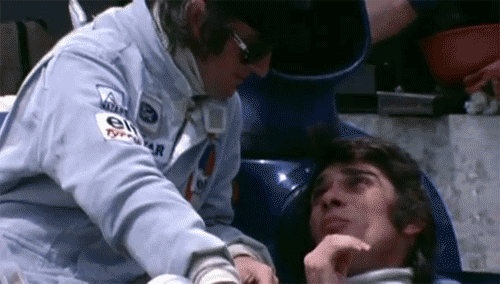
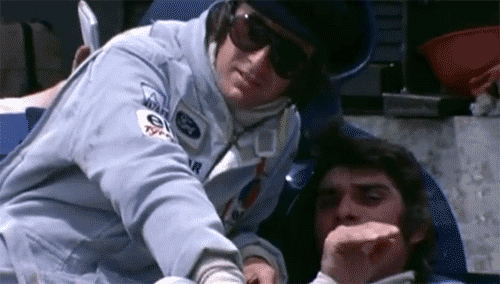
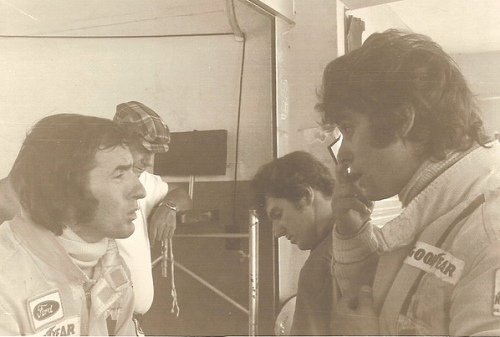
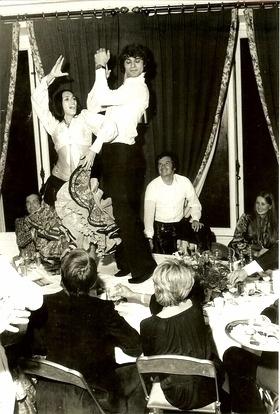
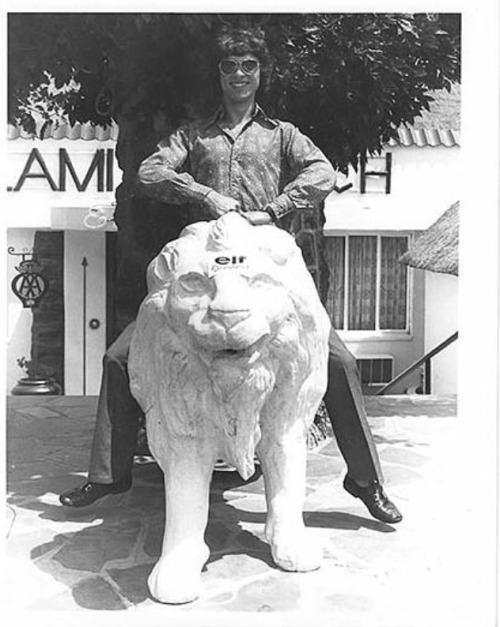
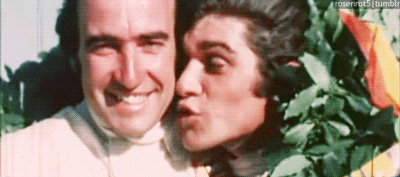
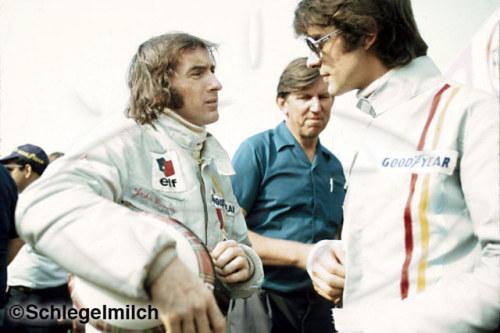
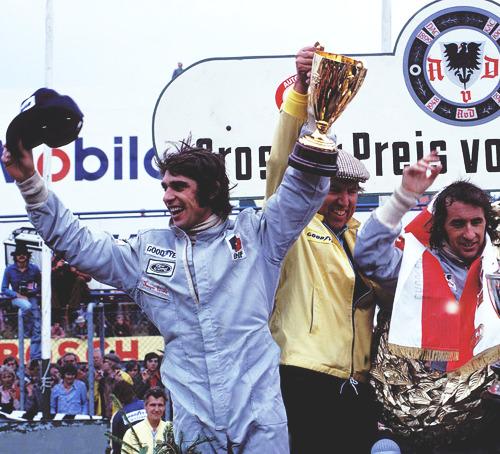
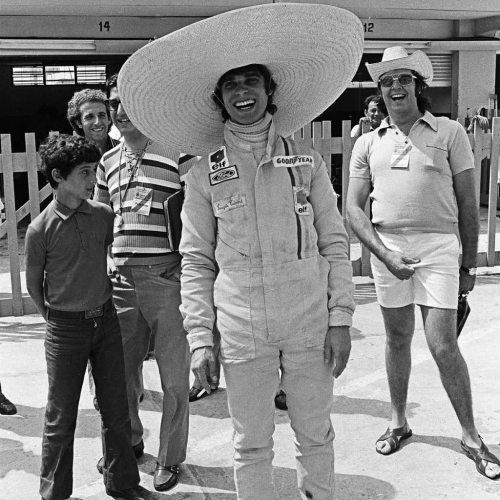
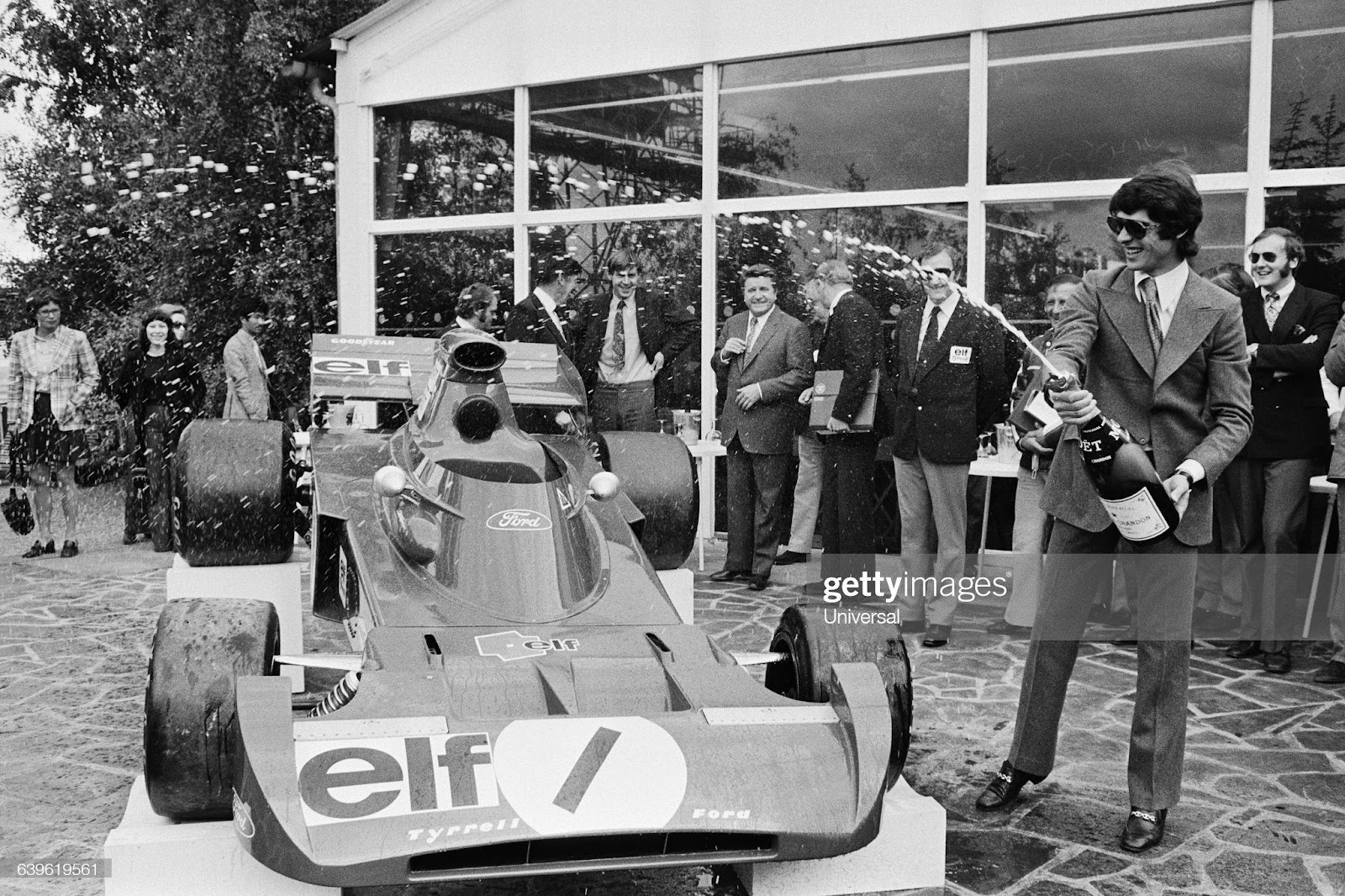
Baptism of the new Formula One Tyrell-Ford by Francois Cevert on June 09, 1972. Photo by Universal/Corbis/VCG via Getty Images.
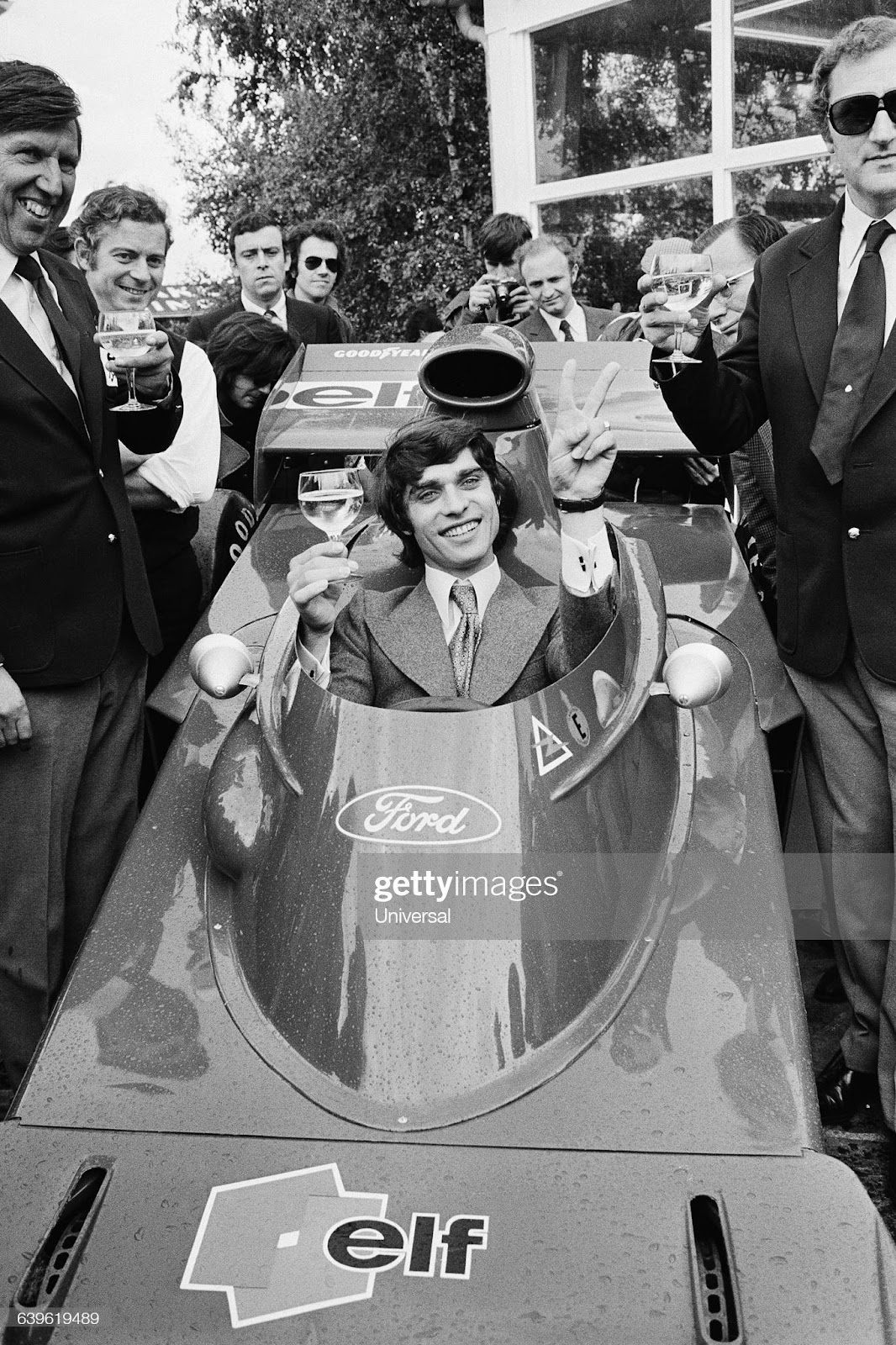
Baptism of the new Formula One Tyrell-Ford by French driver Francois Cevert on June 09, 1972. Photo by Universal/Corbis/VCG via Getty Images.
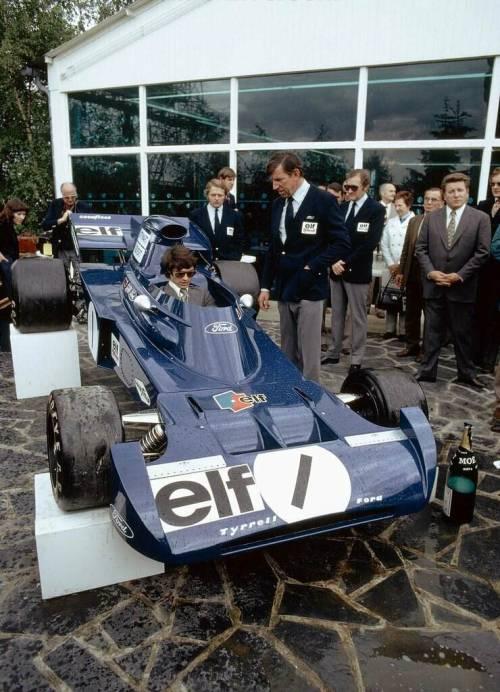
Baptism of the new Formula One Tyrell-Ford by Francois Cevert on June 09, 1972.
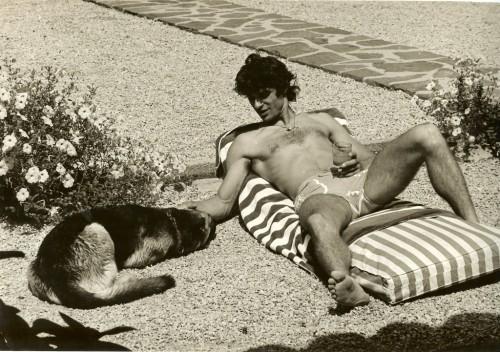
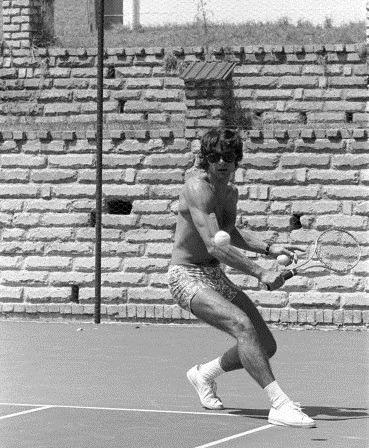
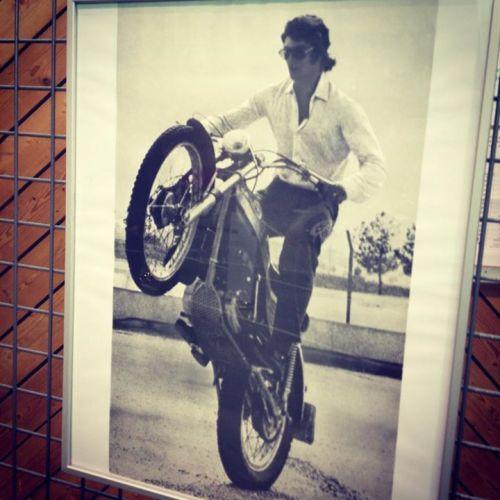
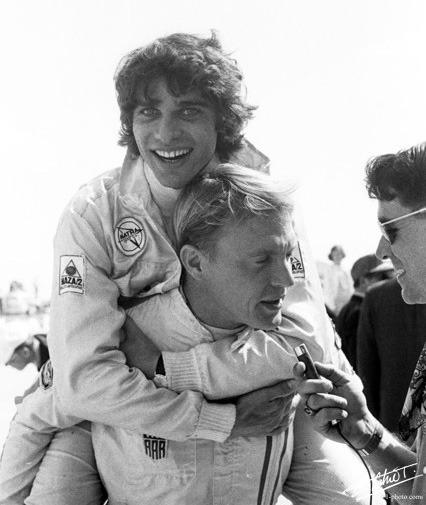
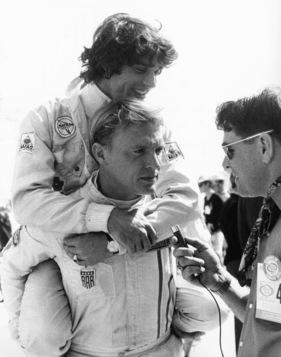
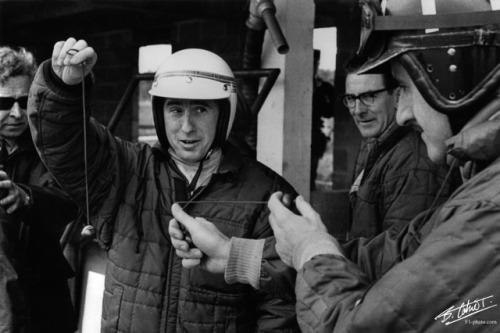
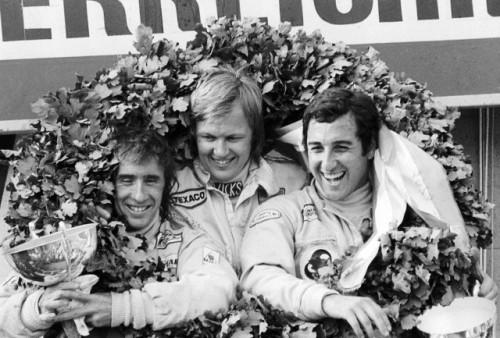
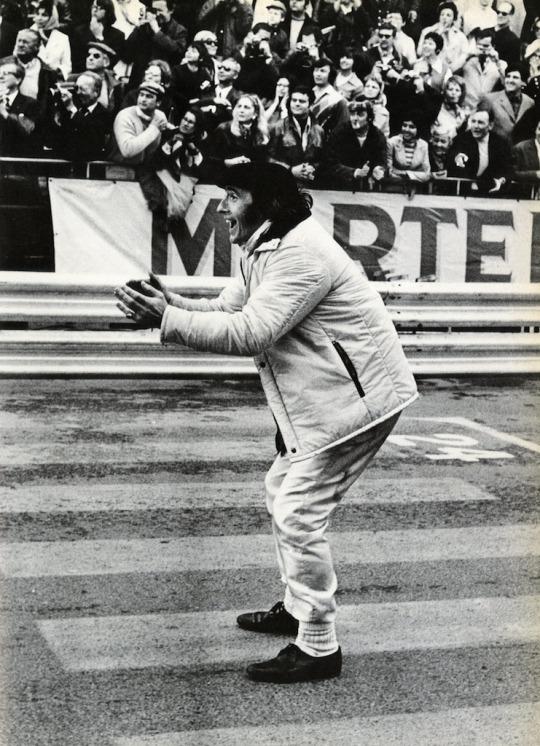
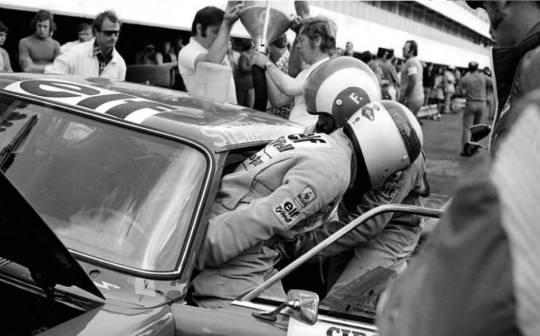
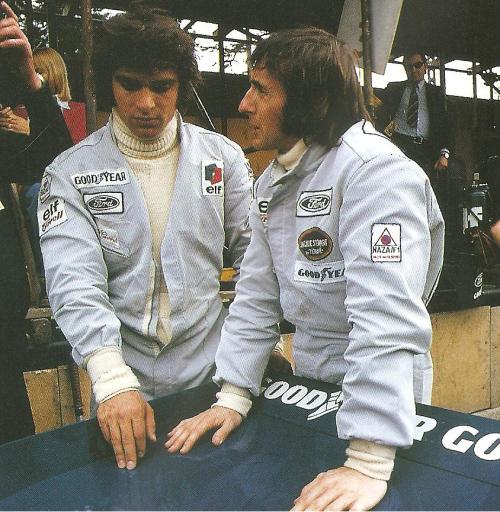
“I was driving like hell and not thinking enough about what I was doing. Jackie stopped all that.” Francois Cevert
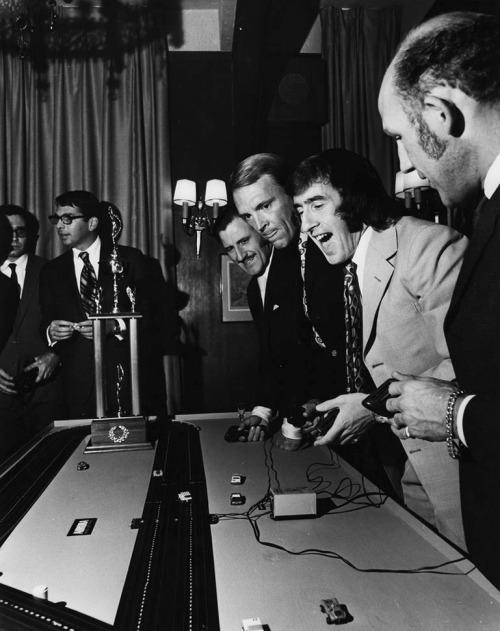
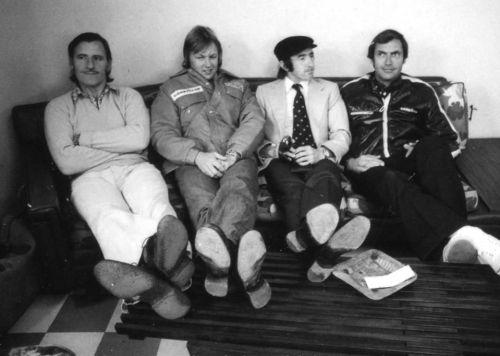
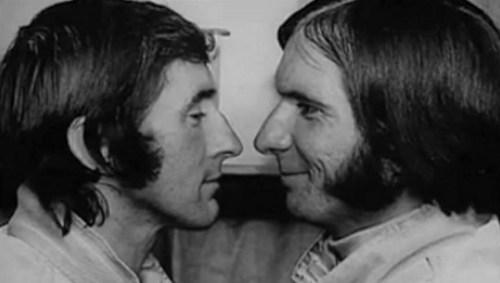
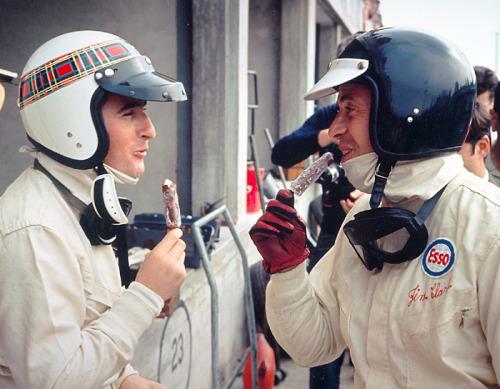
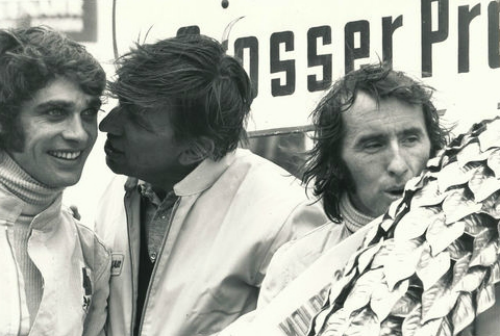
"Very few drivers could claim to be a match of Francois. He was so glamorous, he was so colorful, he was so exciting, he was so good-looking ... he was very dangerous with the young ladies. There was a lot of damage done. And yet, he was such a basic man. My role with him was like the student and the professor, because I was passing on everything I knew to him because I saw he had enormous potential. He had great natural skills. He was a racing driver who would, in my opinion, unquestionably have gone on to win the World Championship." Jackie Stewart
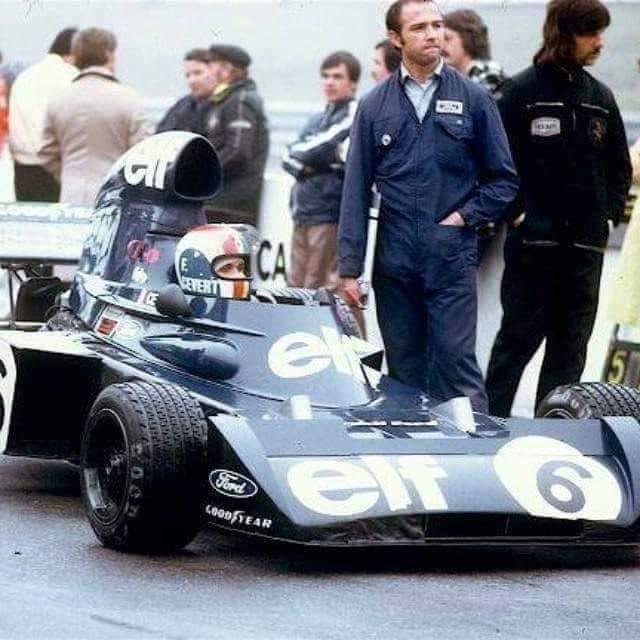
“During one of his pit stops before the accident, François told me: 'look at my times. Now I try to lower them. Think what a coincidence: can you believe that I'm driving the Tyrrell number 6, with chassis number 006, engine number 66 and that today is the 6th of October? Today is my day.'" Jo Ramirez
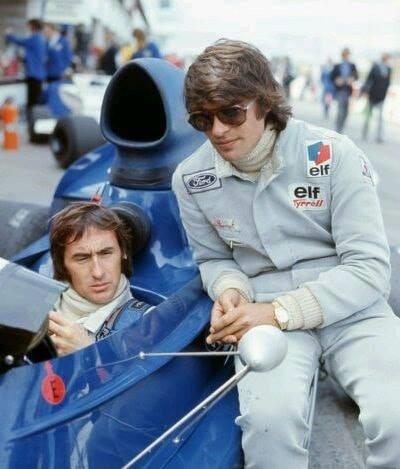
"Francois didn't like funerals, I don't think he even went to his funeral." Jackie Stewart
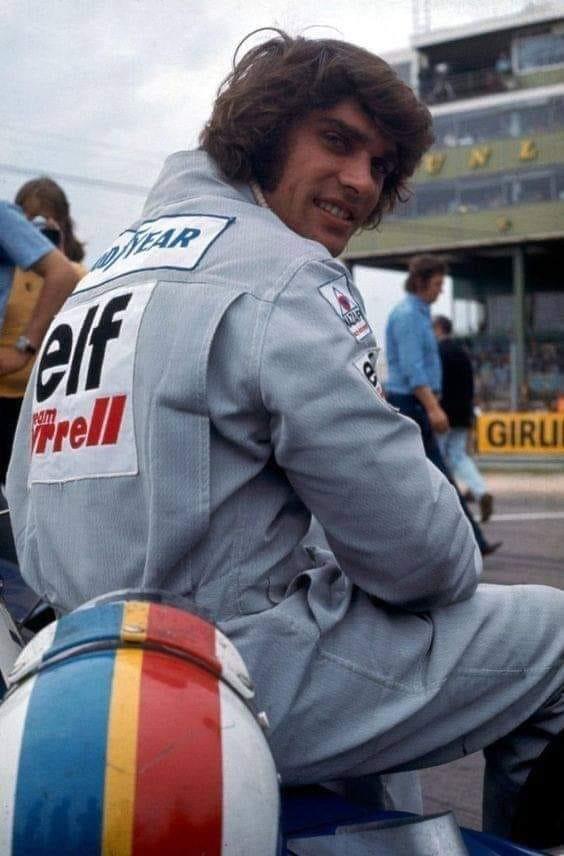
"You know, it's a fantastic thing ..., I think every man in the world is looking for this: to make his passion a job. This is what I did. I have a passion for motor racing, it's my job and I enjoy it. I can't be happier." François Cevert
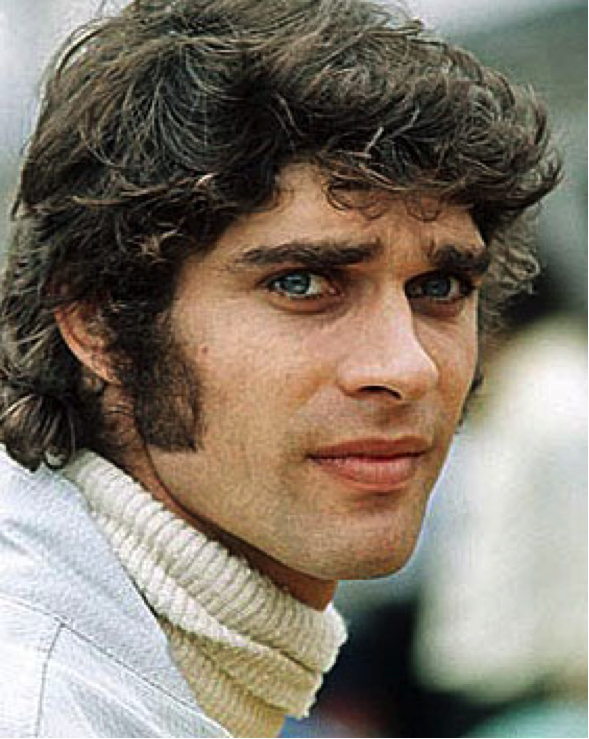
“Ce pour quoi tu acceptes de mourir, c’èst cela seul dont tu peux vivre.” Antoine De Saint-Exupery
On ne t'oubliera jamais François.
Videos
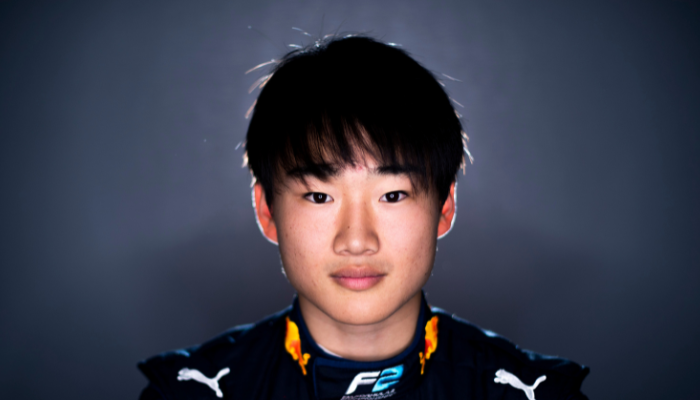
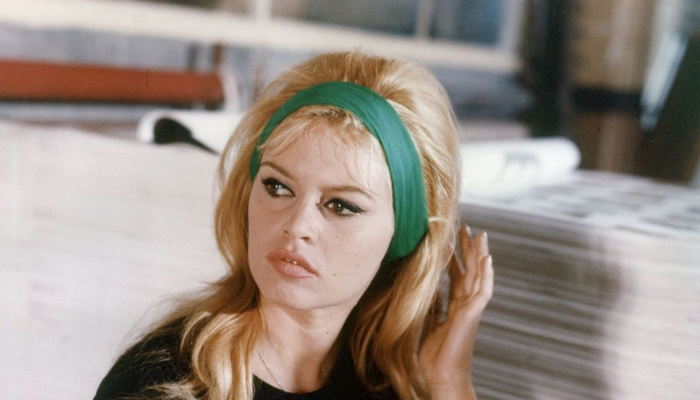
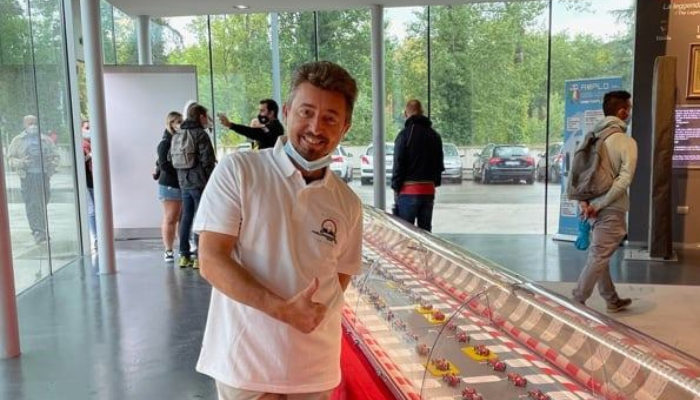
Comments
Authorize to comment